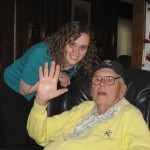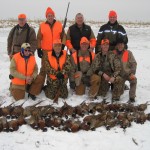This trip had been planned for many months. Both Pat and I had been to France several times before, but never to Normandy to see the sites of the D-Day invasion.
What we hadn’t planned on were the union-worker strikes occurring throughout France. We watched the news attentively leading up to the day of our departure and decided to press on with our trip. We were glad we did as the strikes had only a minor effect on our travels.
During this trip, we made extensive use of the book ‘Rick Steves’ Snapshot: Normandy and Brittany’. I downloaded this book to my iPad and we used it to guide our travels. We found his comments and recommendations to be exceptionally accurate. His guidance truly enhanced our experience.
Friday
American Airlines flight 42 boarded in Chicago on time for the flight to Paris. After boarding, Pat was met by Sue and Carlos who knew she was on the flight and wanted to say hello. The flight departed on time.
Saturday
Arrival at Charles DeGalle (CDG) airport in Paris was on time. Immigration was quick and easy and customs was non existent. We took an Air France bus into the city and a taxi to the apartment. We were exhausted from lack of sleep. I took a nap and Pat took a walk.
The apartment in which we were staying was beautifully decorated and very conveniently located. From the living room, we had a view of the Eiffel Tower in the distance.
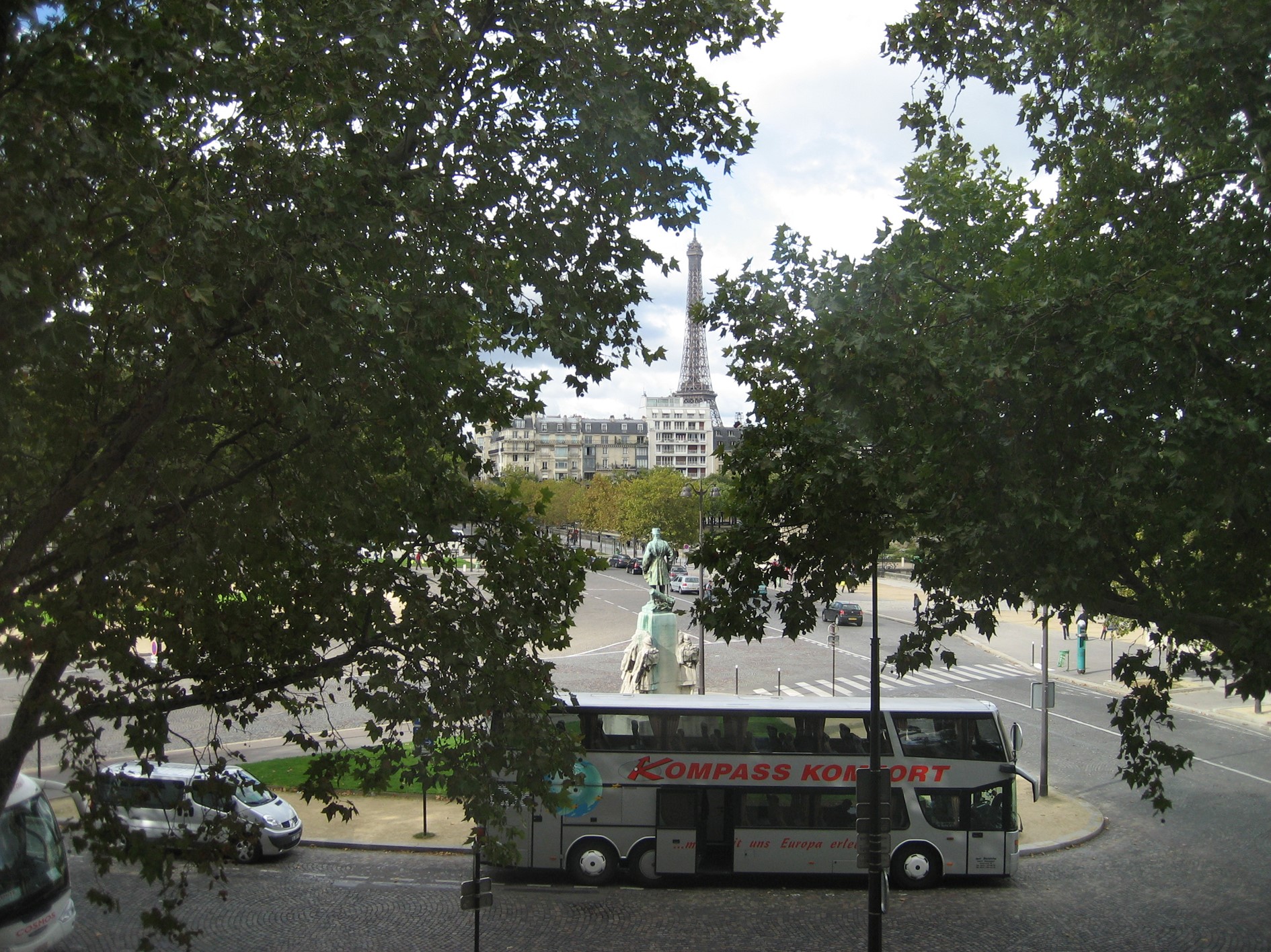
Napoleon’s Tomb is a popular tourist destination and was right across the street.
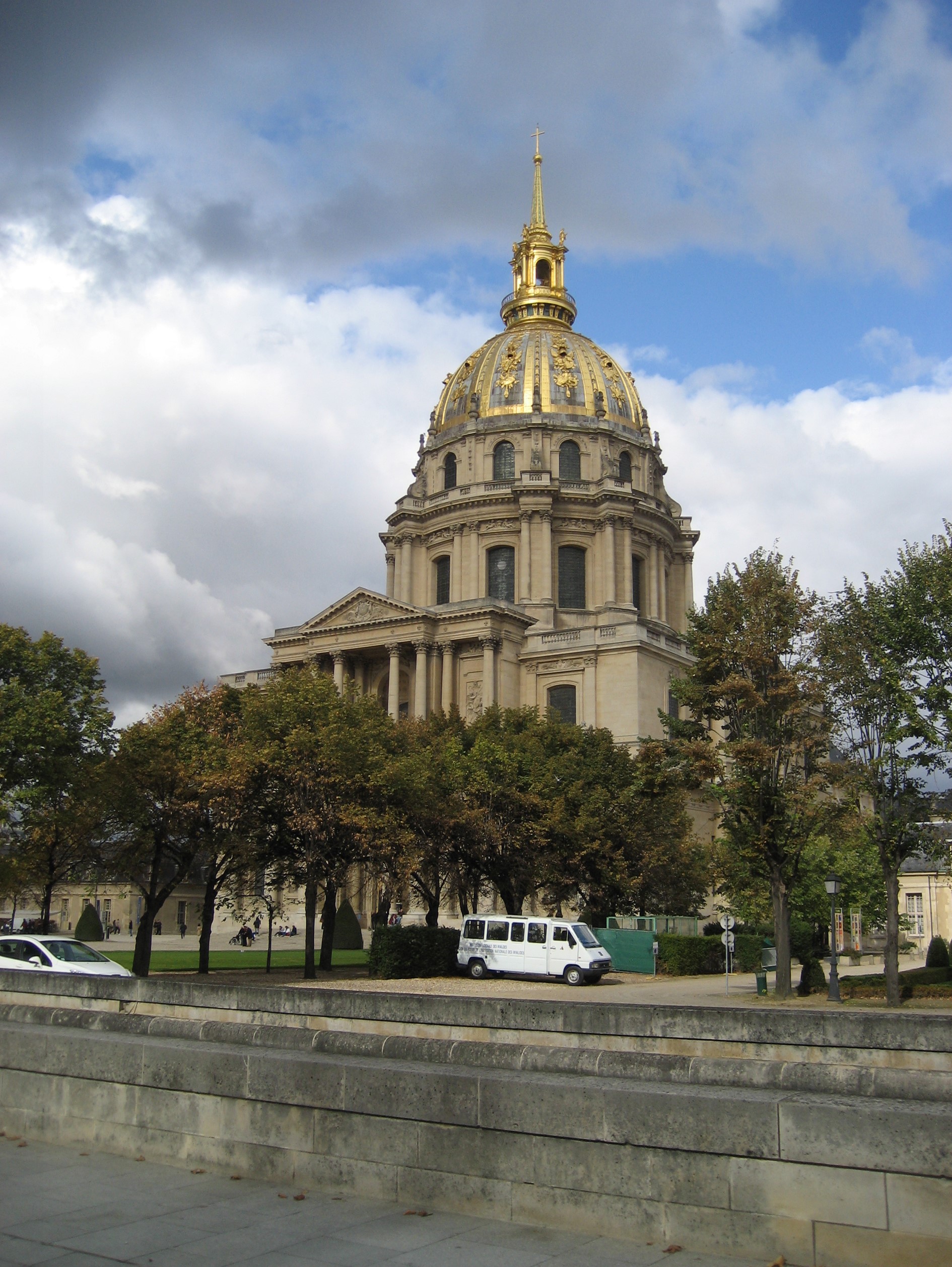
After a rest, we walked about 1 mile to the Eiffel Tower.
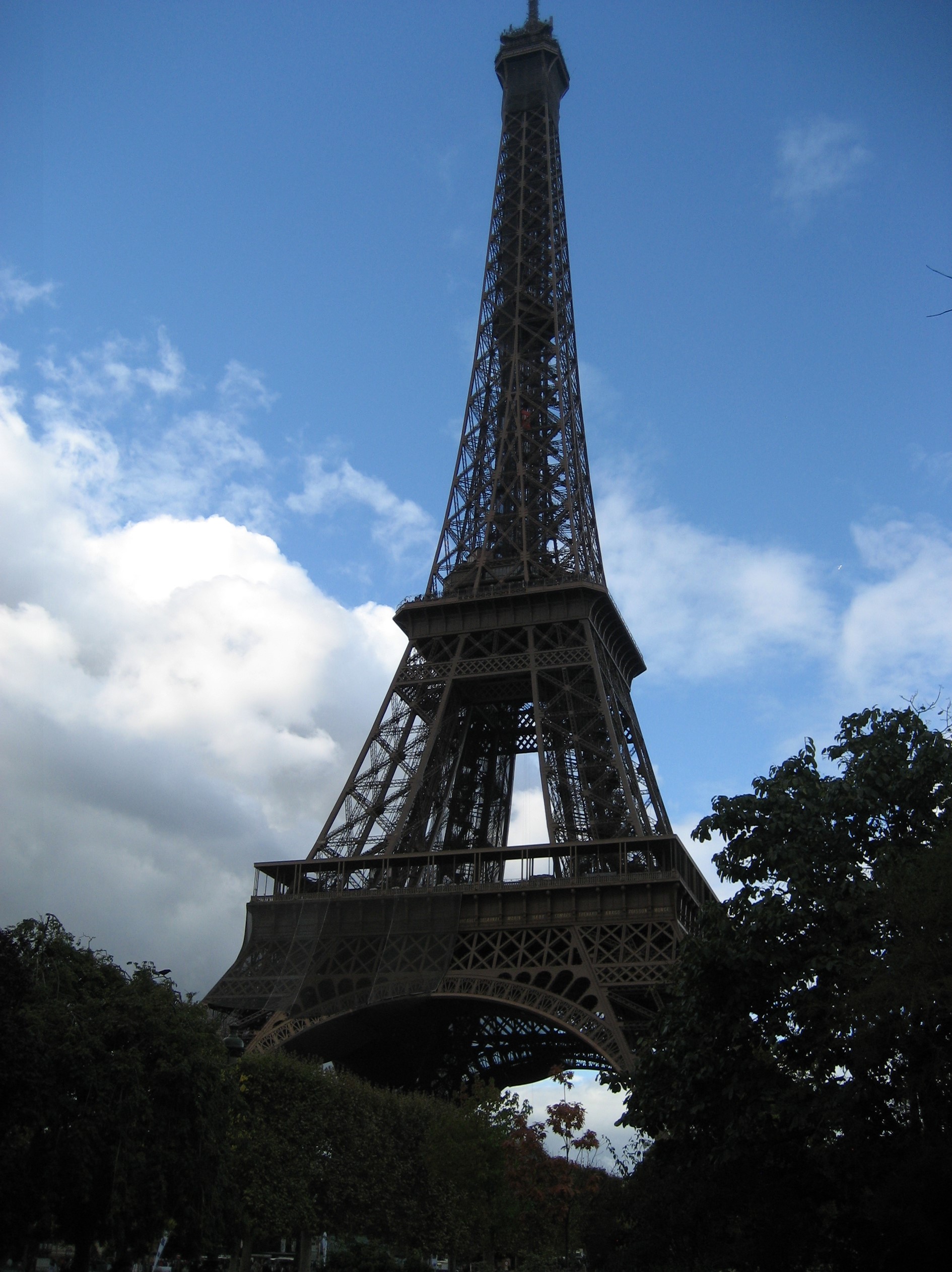
From there we took a motorized train shuttle to Bateaux Mouches for a boat tour on the Seine. The train shuttle’s driver had his small dog with him who chose to ride with its head out the window, occasionally barking at traffic.
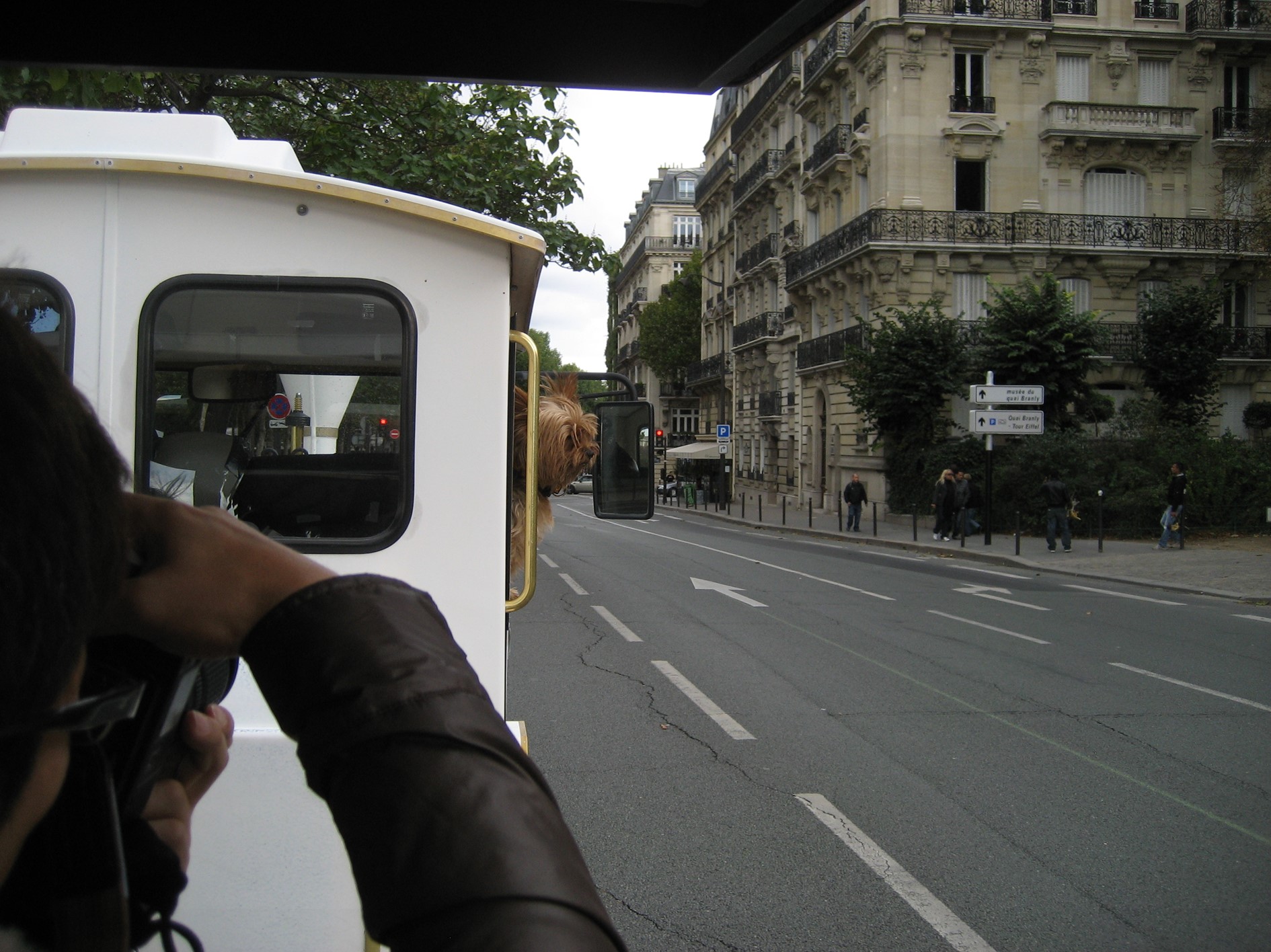
The train took us over a bridge across the Seine River where we had about a 10 minute wait for the next tour boat departure.
From the waiting area, the view of the Eiffel Tower was quite impressive.
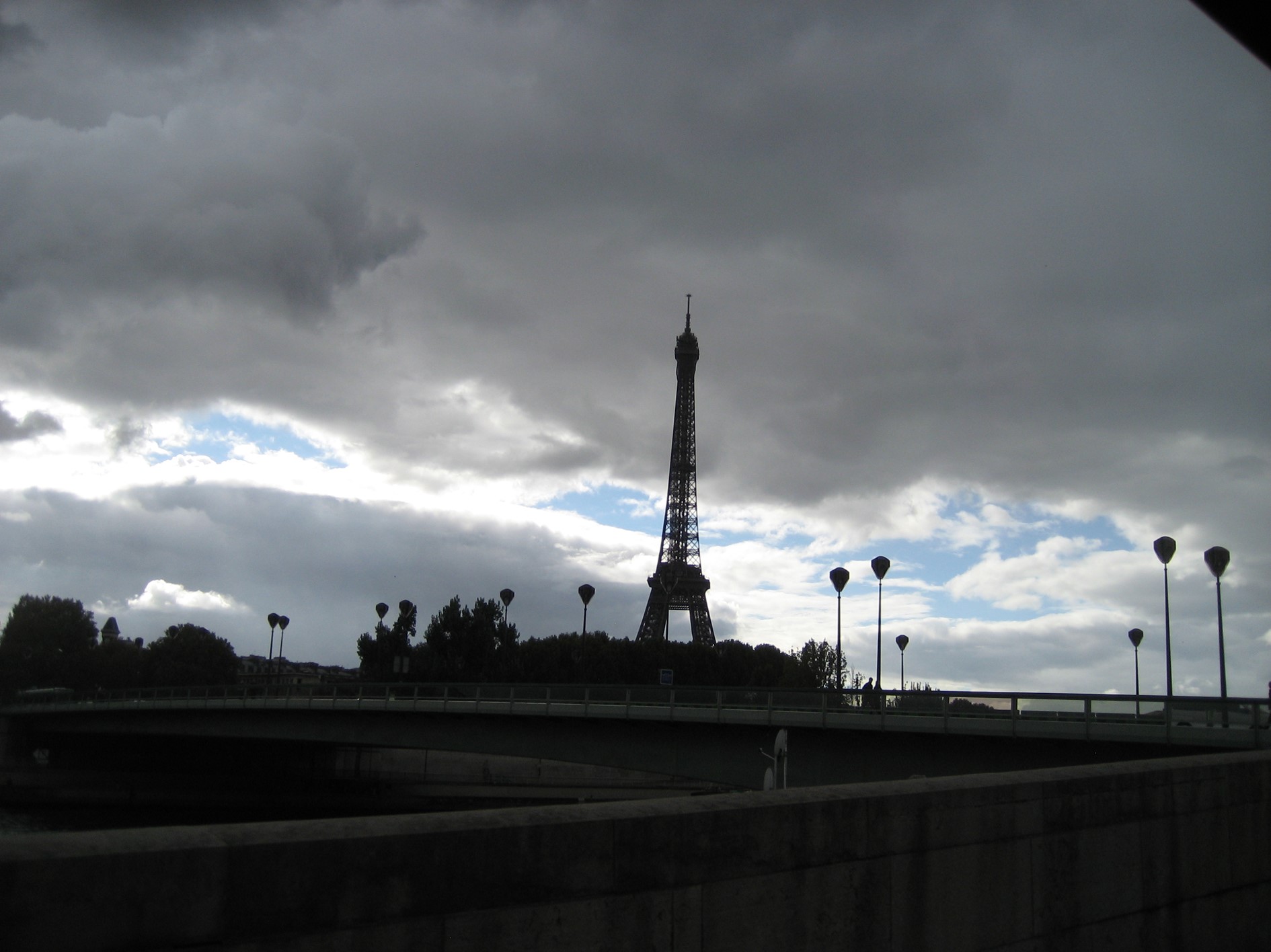
When the boat departed, we first headed downstream on the Seine, passing under the bridge “Pont Alexandre III”.
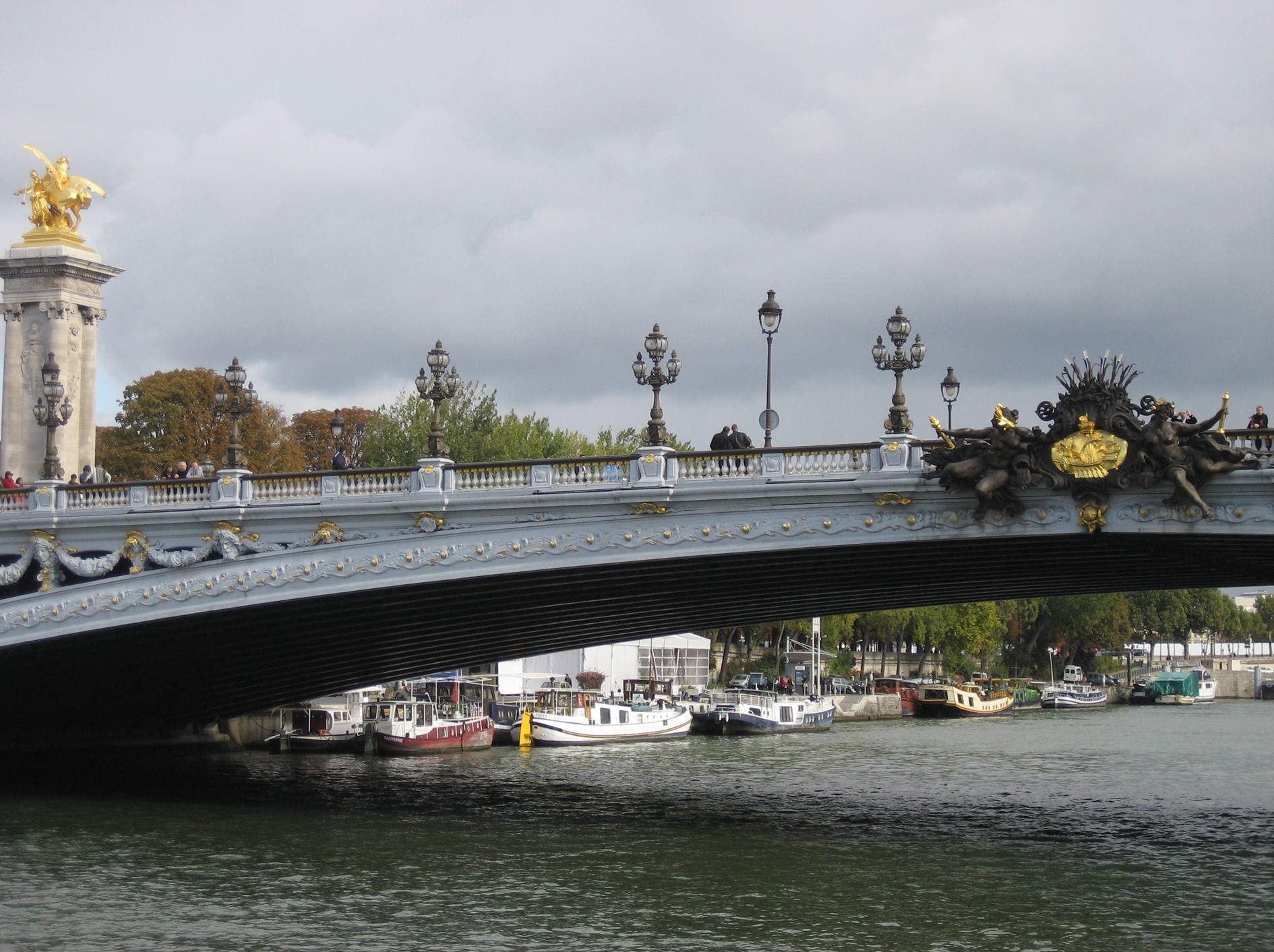
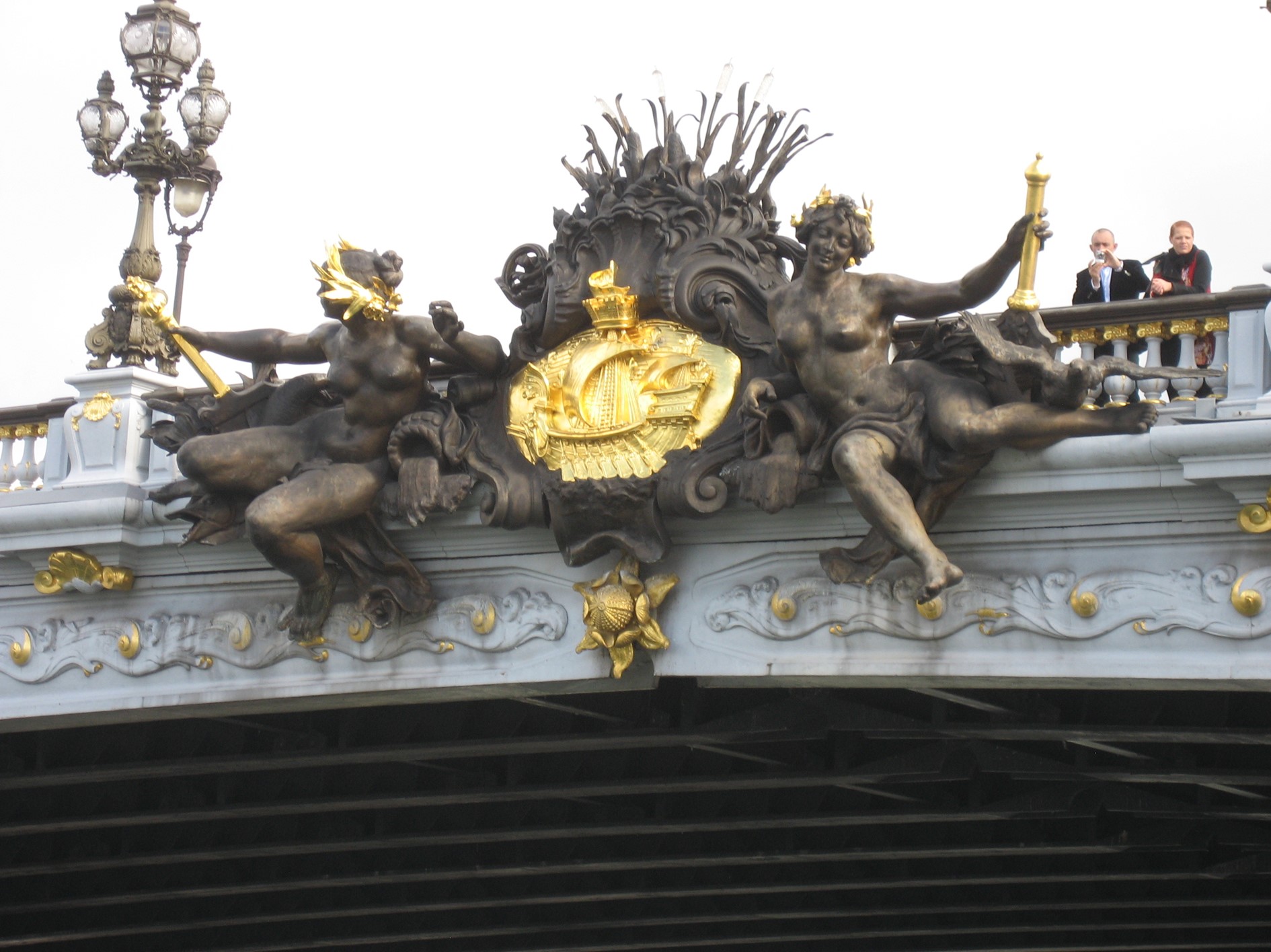
We passed the back side of the Musee D’Orsay which we would visit later during this trip to France.
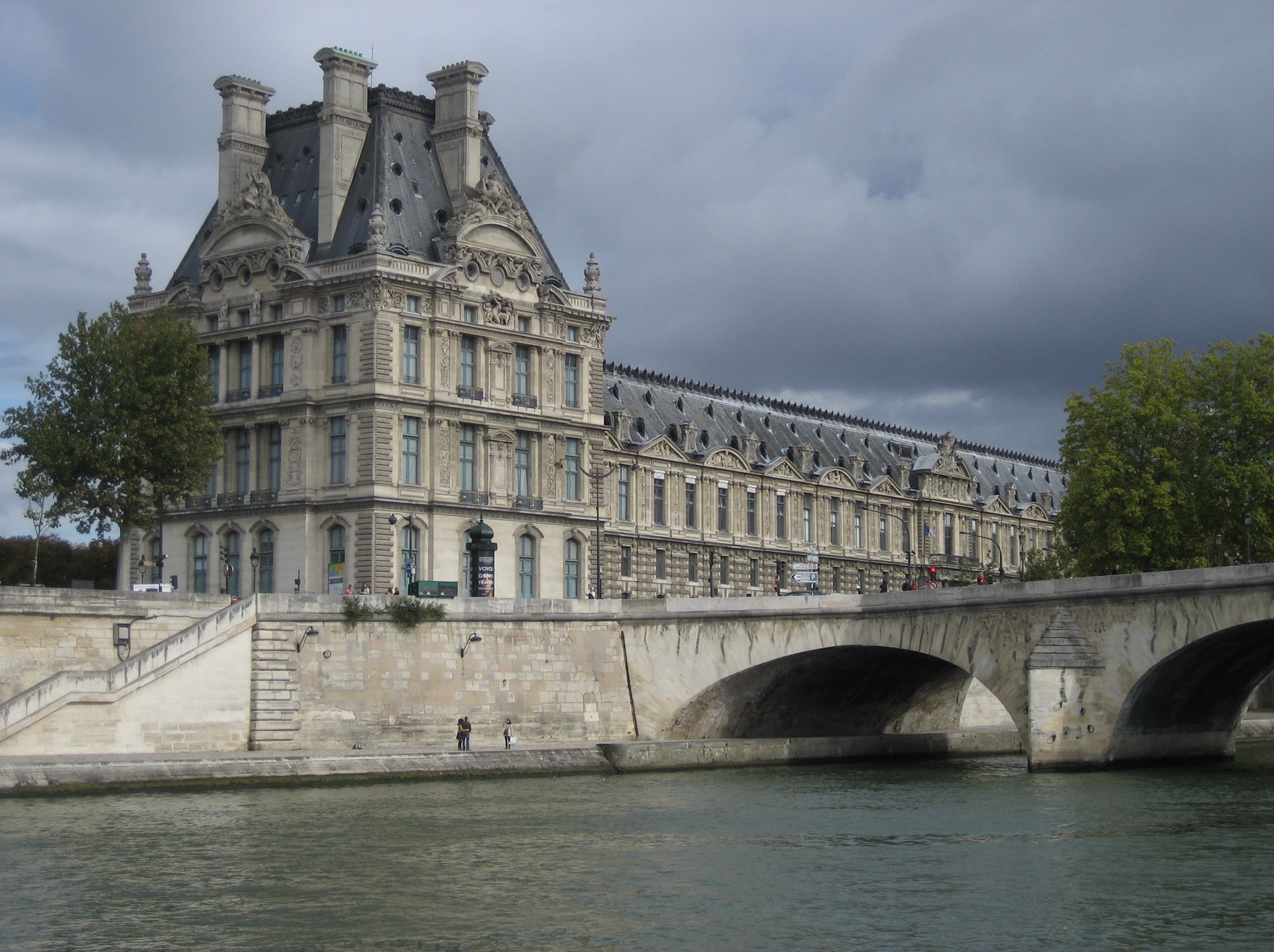
Downstream, the river split in two creating an island called Île de la Cité. This island is the home of the famous Notre Dame Cathedral.
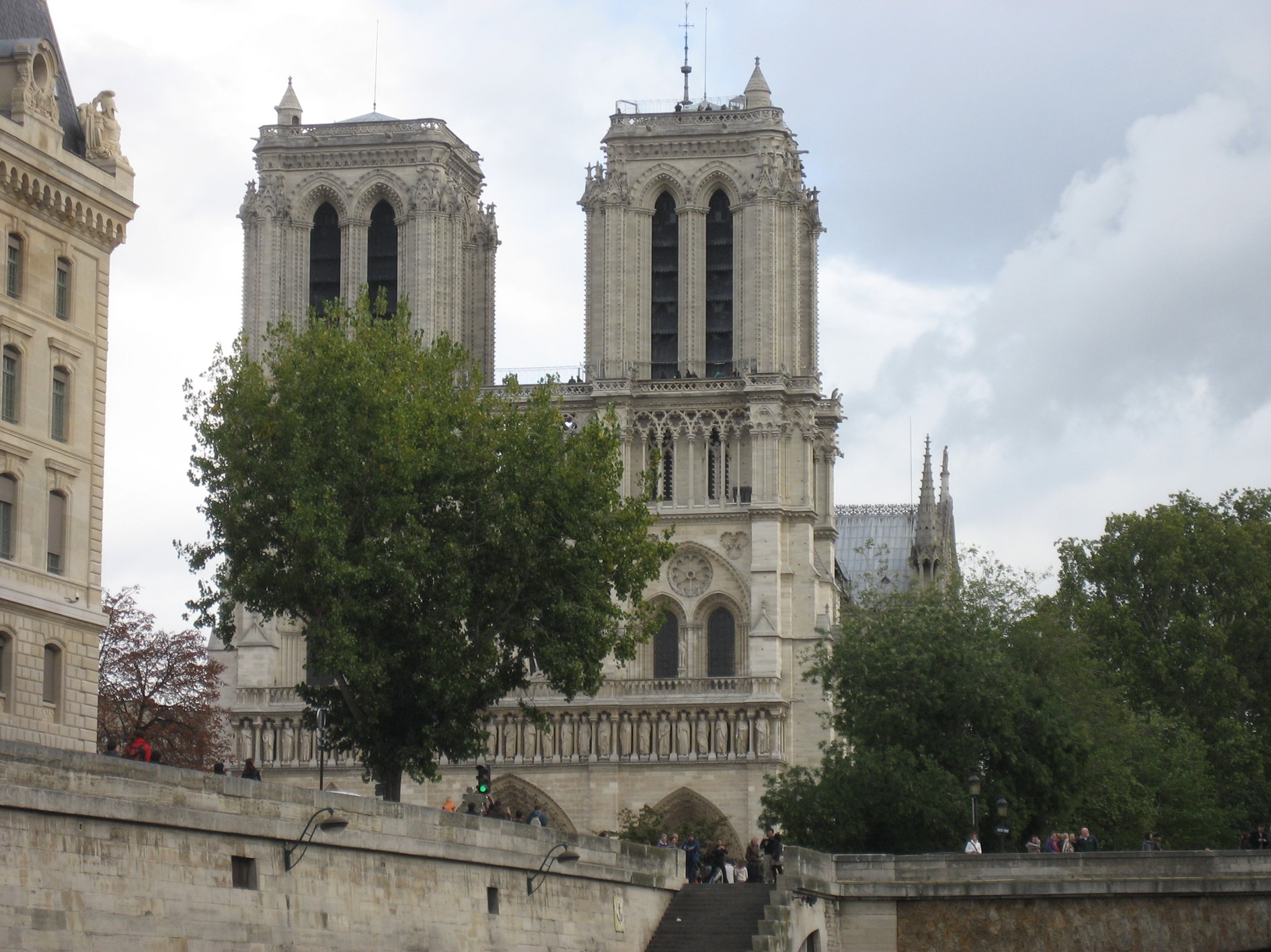
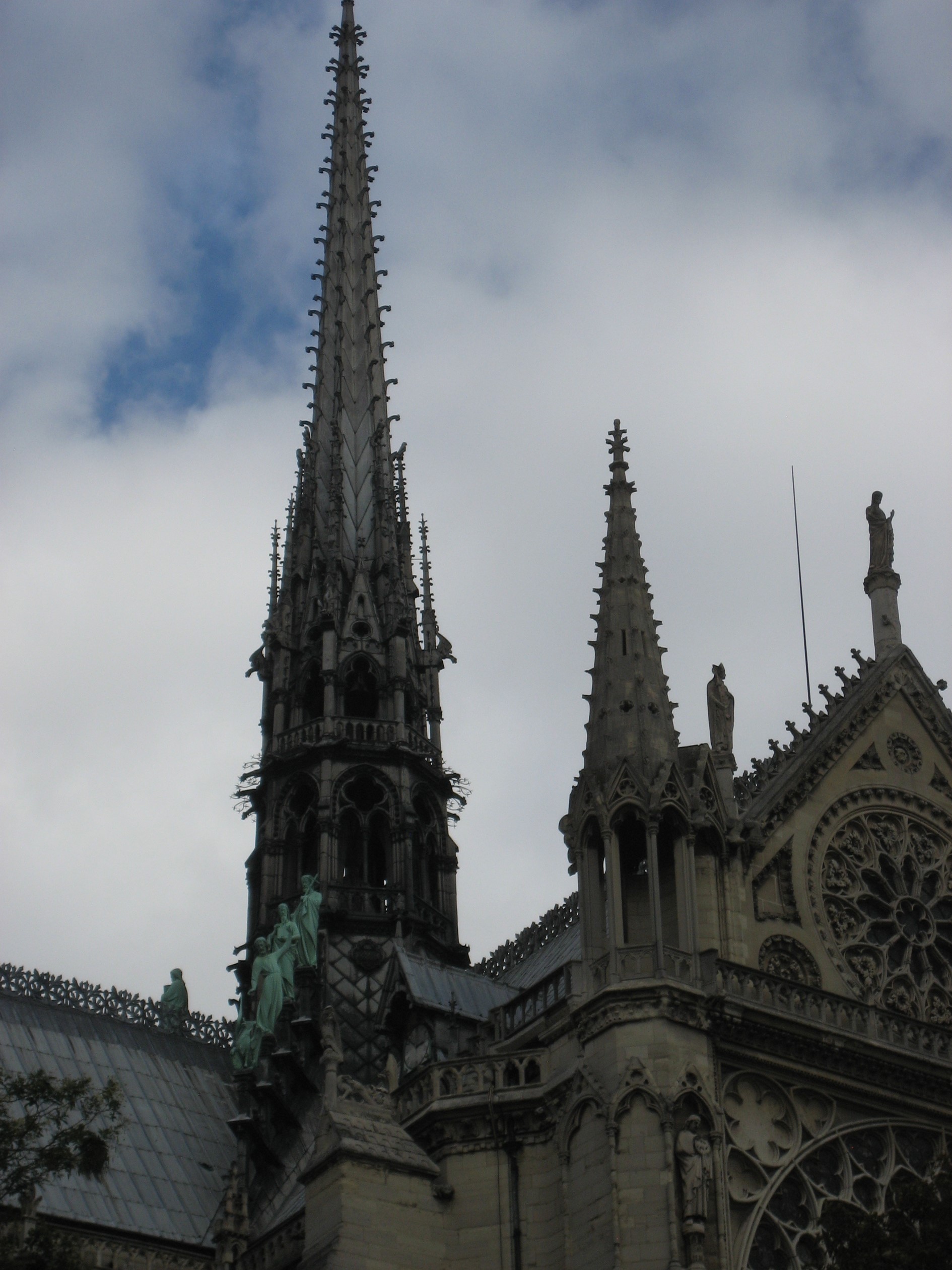
The back side as the river boat continued downstream.
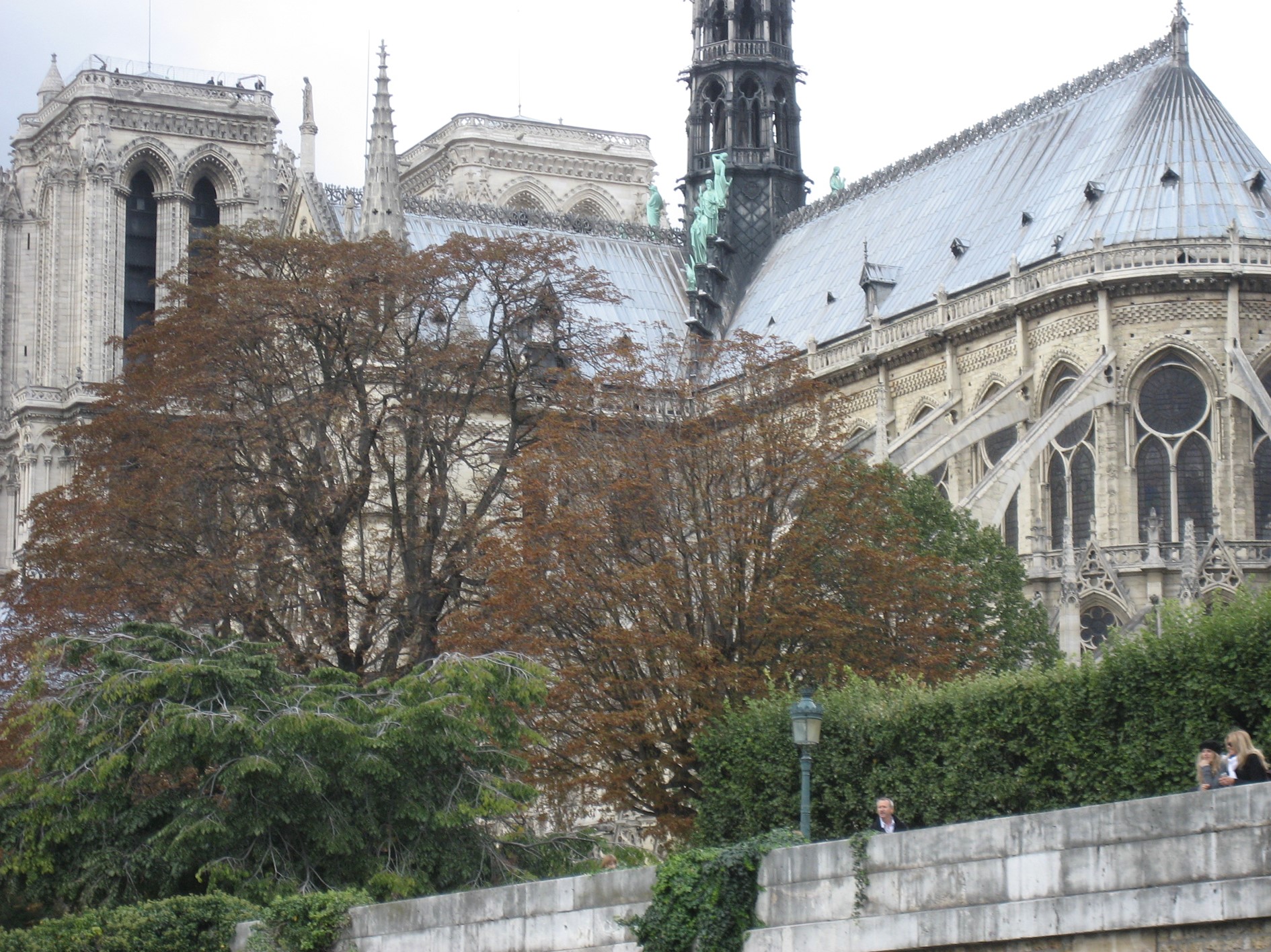
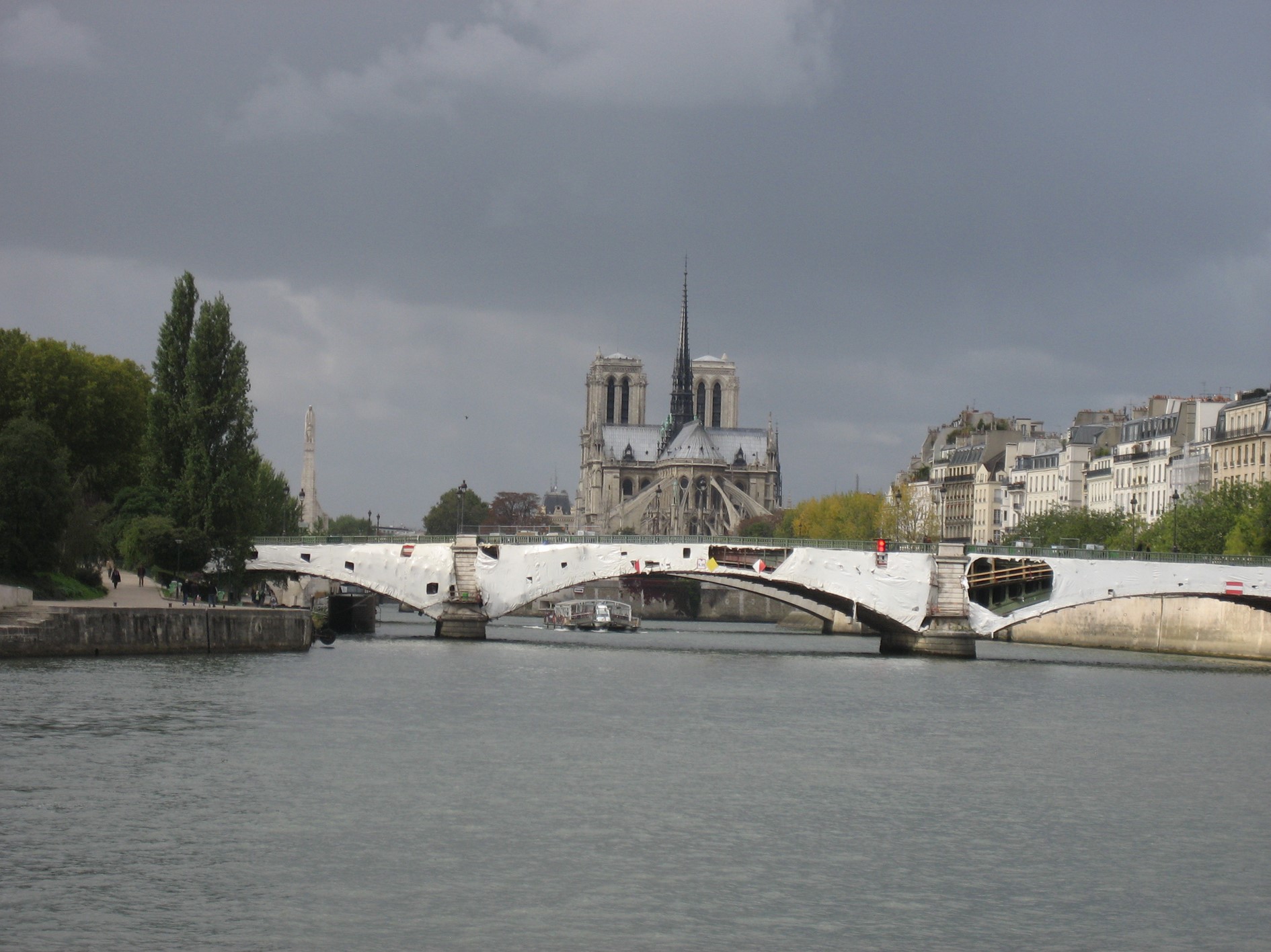
The sky darkened during our trip and it began to rain. The rain forced us inside but Pat was more determined and sat outside but under shelter.
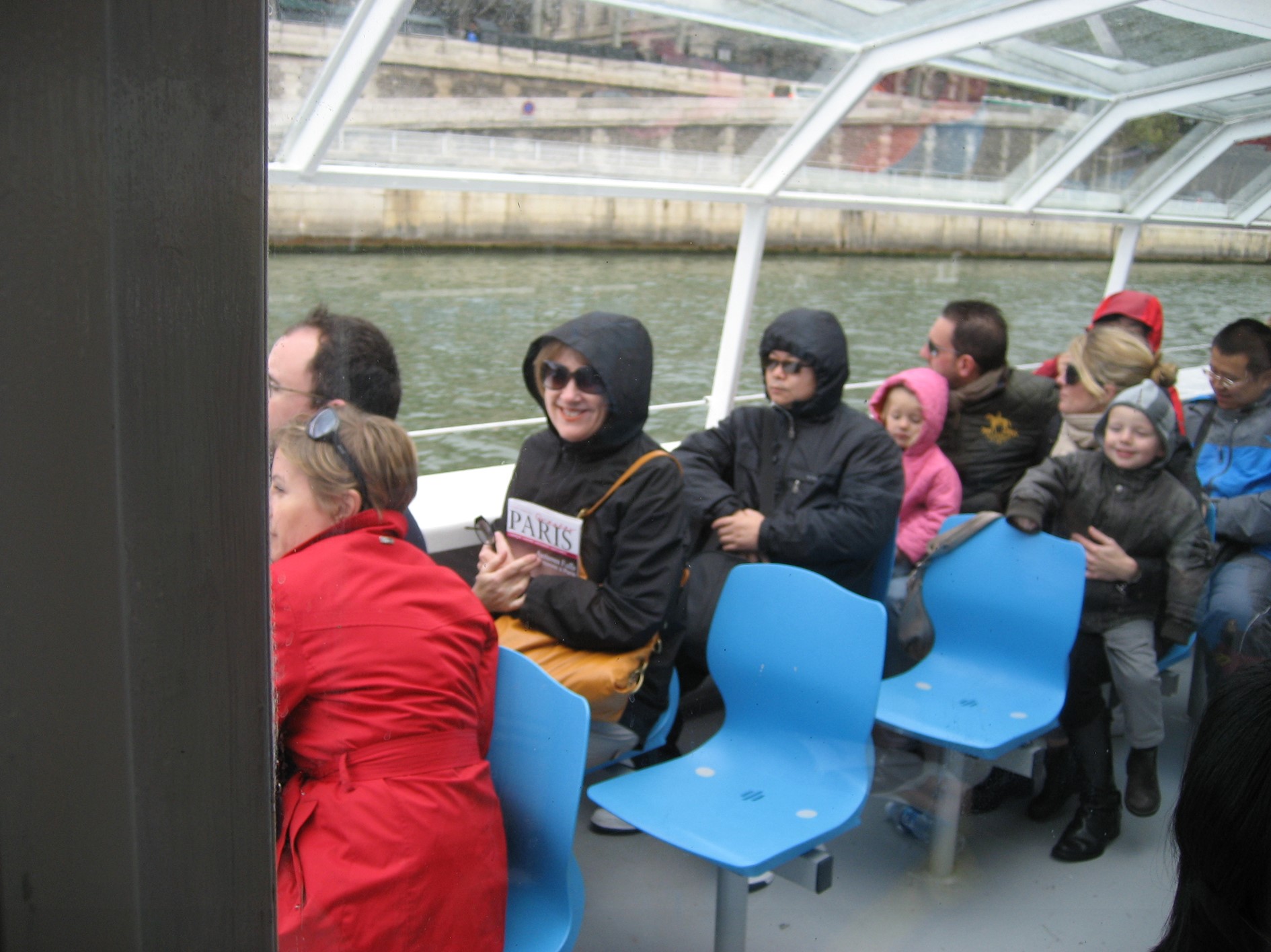
The boat ride was about an hour and a half and gave us a very interesting perspective for both the La Rive Gauche and the La Rive Droite.
The Left Bank, called “La Rive Gauche” in French, is on the southern side of the Seine and encompasses six arrondissements. It is by far the smaller section of Paris, and historically known as the artistic part of the city. This is where many of the famous writers and artists who once called Paris home – including Picasso, Matisse, and Hemingway – once lived, because it used to be that this was the part of the city that was much cheaper (always a plus for starving artists!). Those days are mostly gone, however, as the Left Bank boasts as many high-end apartments, restaurants, and bars as the Right Bank.
Paris’ Right Bank, called “La Rive Droite” in French, to the north of the river, is the larger “bank” and also the more traditionally upper crust. Back when the Left Bank was where struggling creative souls could find kinship (not to mention cheap rent), the Right Bank was where the city’s wealthy residents lived and played. Although this distinction is less applicable today now that rents on the Left Bank have skyrocketed, the Right Bank is still where you’re going to find the majority of Paris’ big businesses and banks – as well as most of the big tourist attractions.
At the conclusion of the boat trip, we took a different route back to the apartment and stopped at a small ristaurante for a dozen oysters. Another short walk brought us to Cafe Central were we enjoyed a delicious hamburger and BLT.
At about 7:30 we went back to the apartment and went to sleep.
Sunday – Paris
We took it pretty easy on Sunday. We took a train to Gare Saint Lazar to practice our our route for tomorrow and to purchase tickets for the train ride to Rouen.
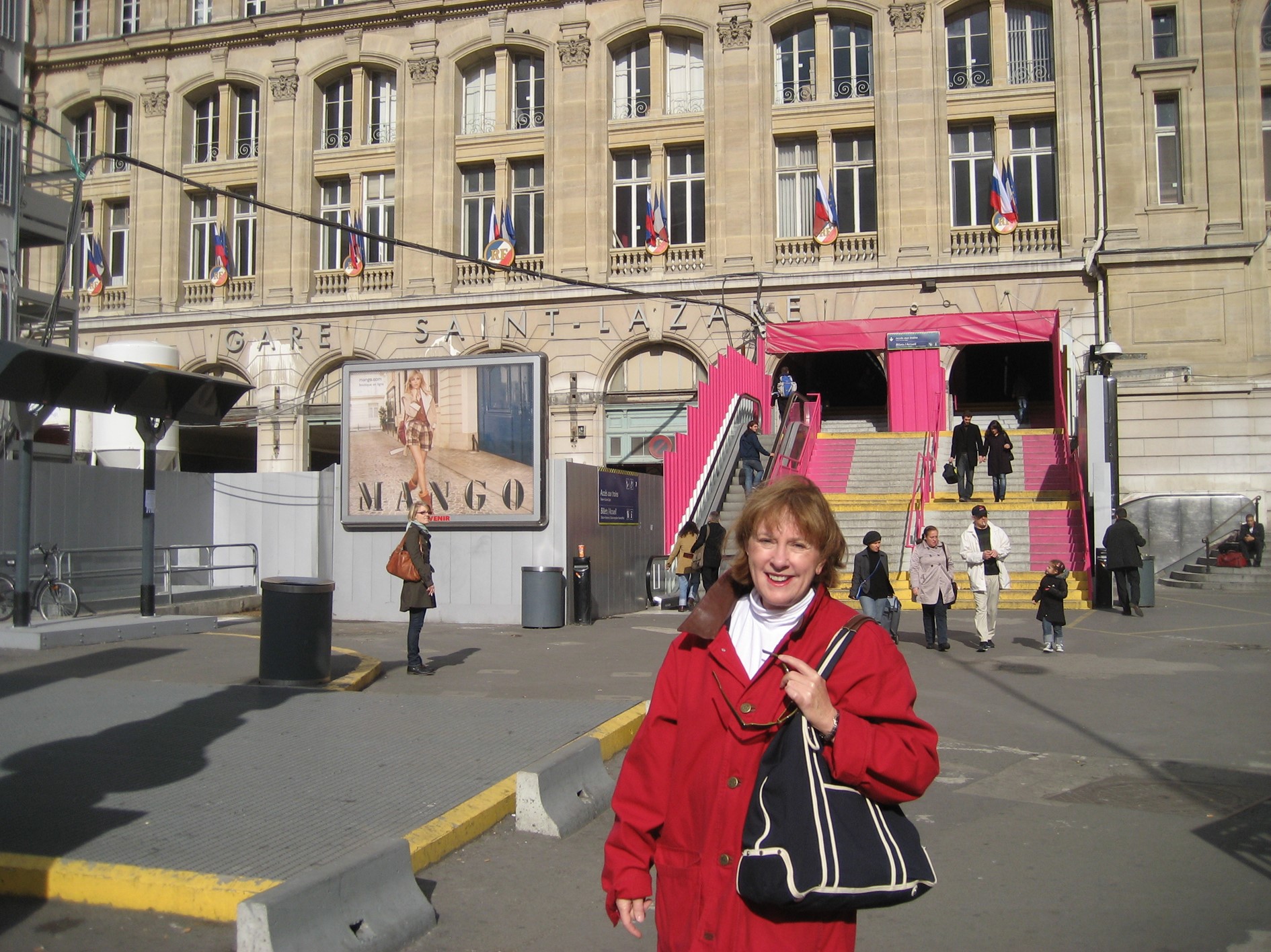
From here, we took a train and a bus to visit the Musee de la Resistance in Champigny-sur-Marne. We were the only visitors but we enjoyed the three floors of artifacts describing and commemorating the French resistance movement during the Nazi occupation.
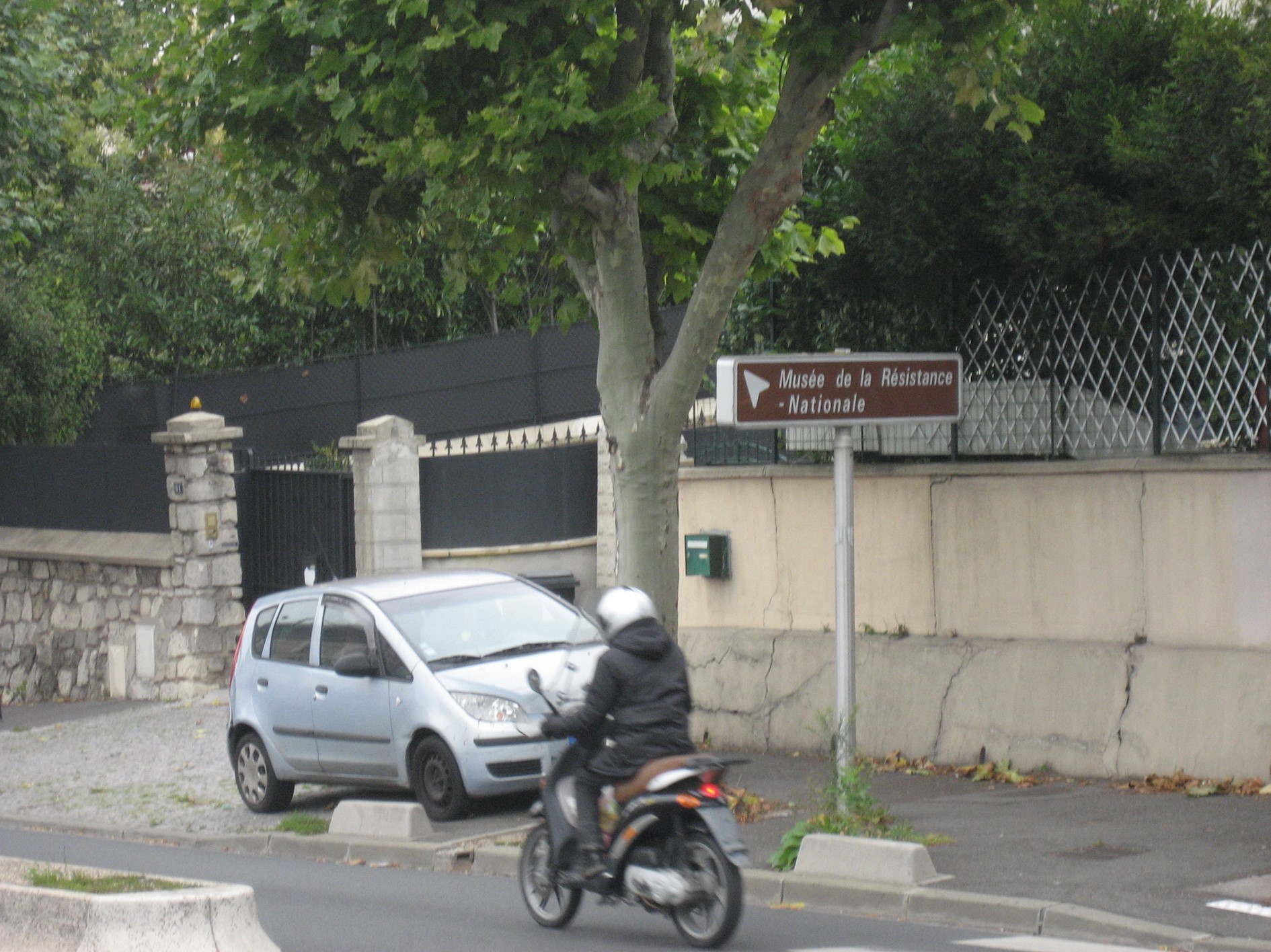
We had considerable difficulty actually finding the museum. We knew the location from an article in The Wall Street Journal and took the train to Champigny. Eventually, we found a ticket agent who told us which bus to take. When we got on the bus, however, the bus driver claimed to be clueless about the museum.
The irony in all of this was as we approached the correct bus stop, an automated message in French announced that this was the stop for the Resistance Museum.
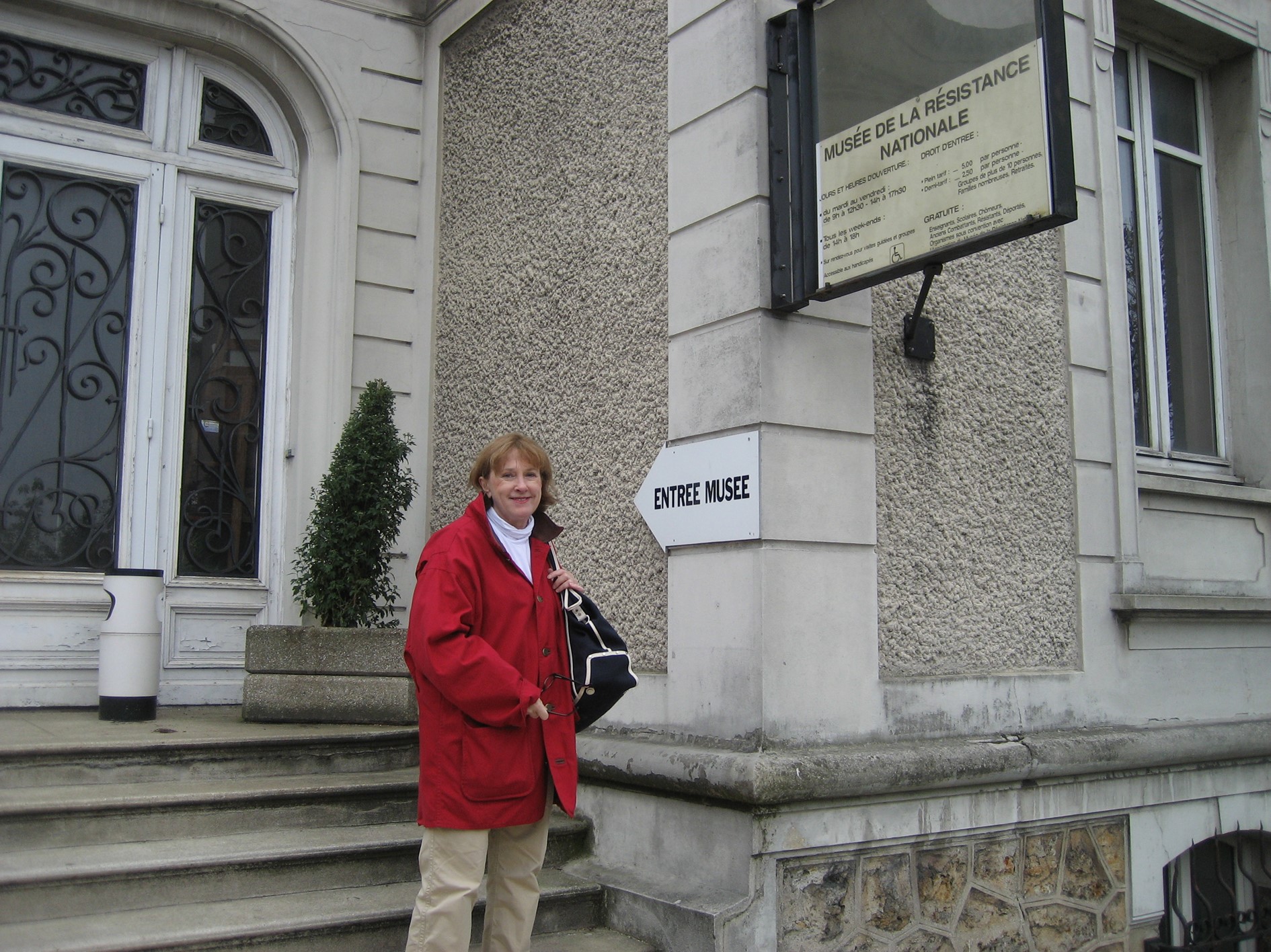
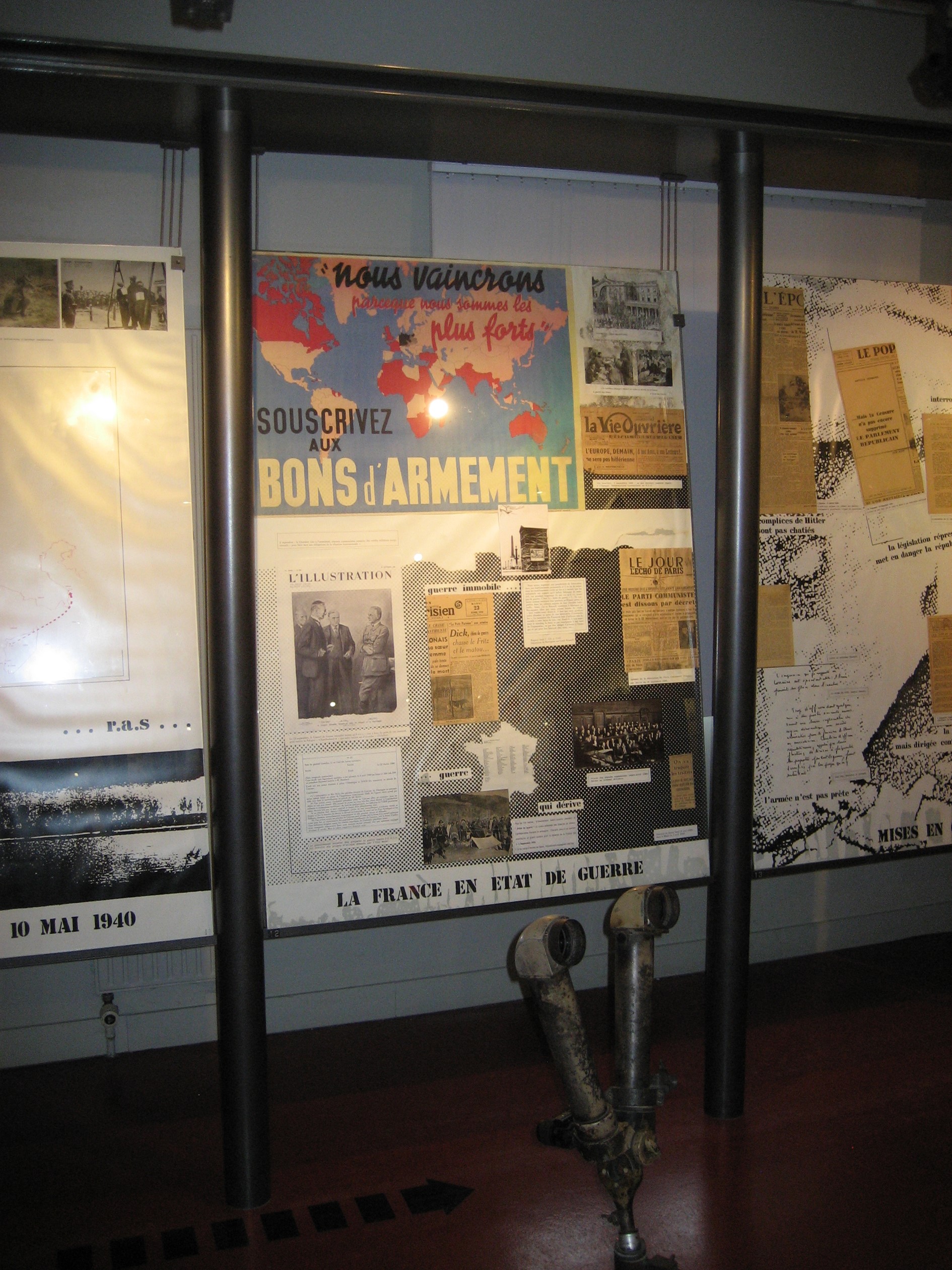
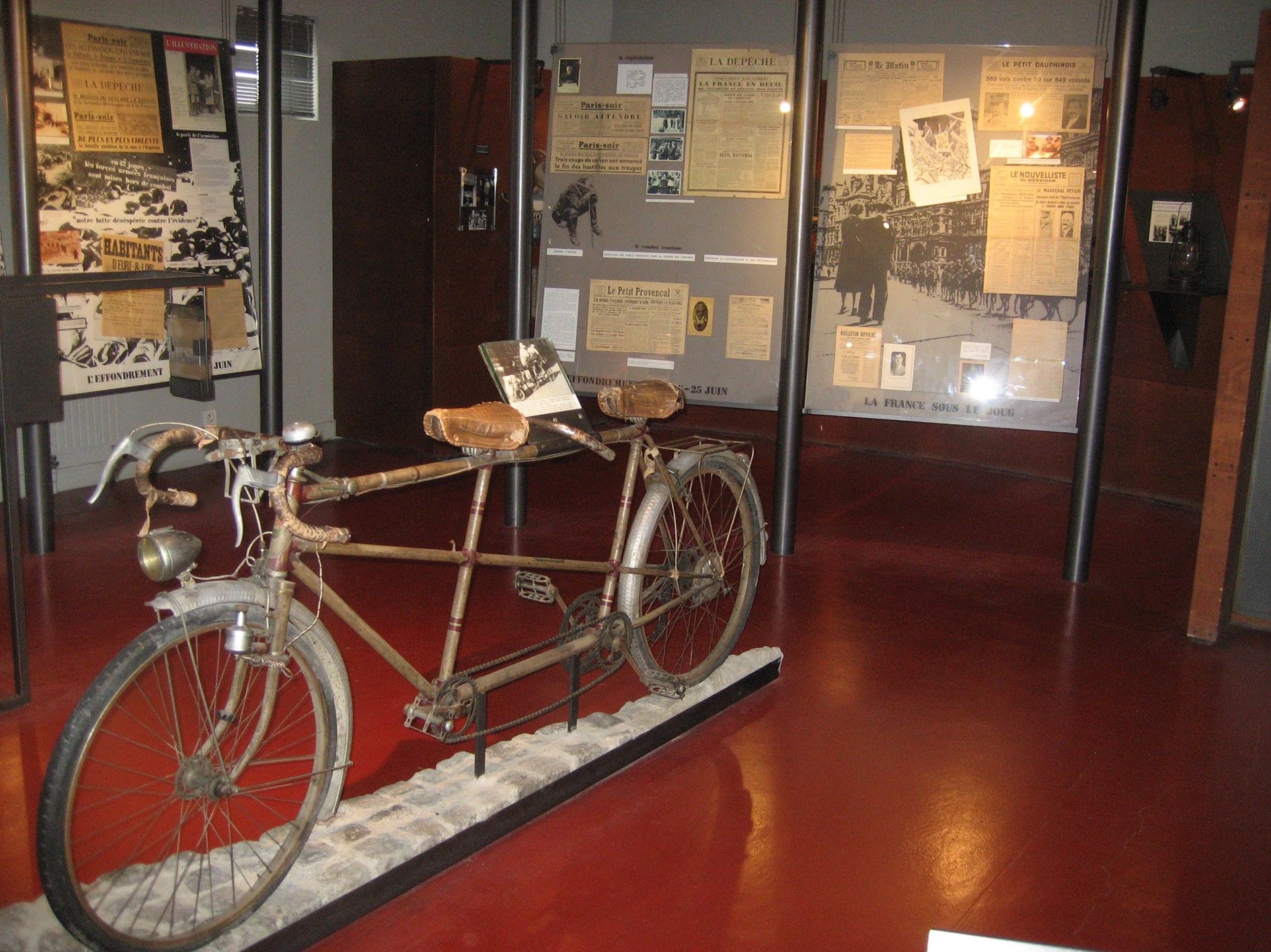
While the displays were entirely in French, we learned a lot about the resistance. There was a justice arm of the Resistance, for not just the Vichy government but ordinary Frenchmen collaborated with the Germans. Indeed, as the archival materials and displays make clear, the Resistance spent as much time rooting out collaborators as killing Nazis. The Resistance had a court, which often carried out executions.
Resistors who were captured were often shot or subjected to horrible imprisonment. The art depicts the conditions.
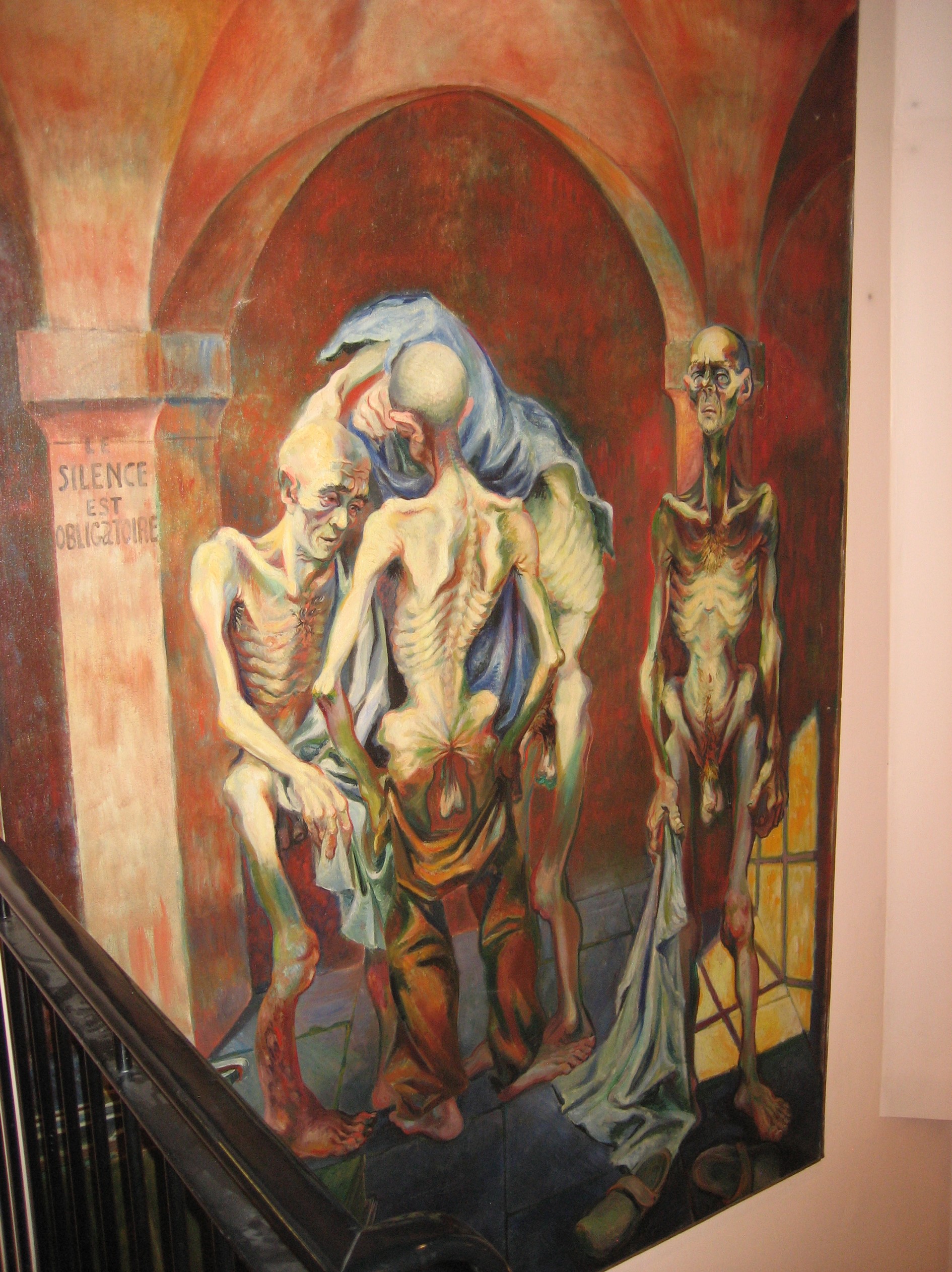
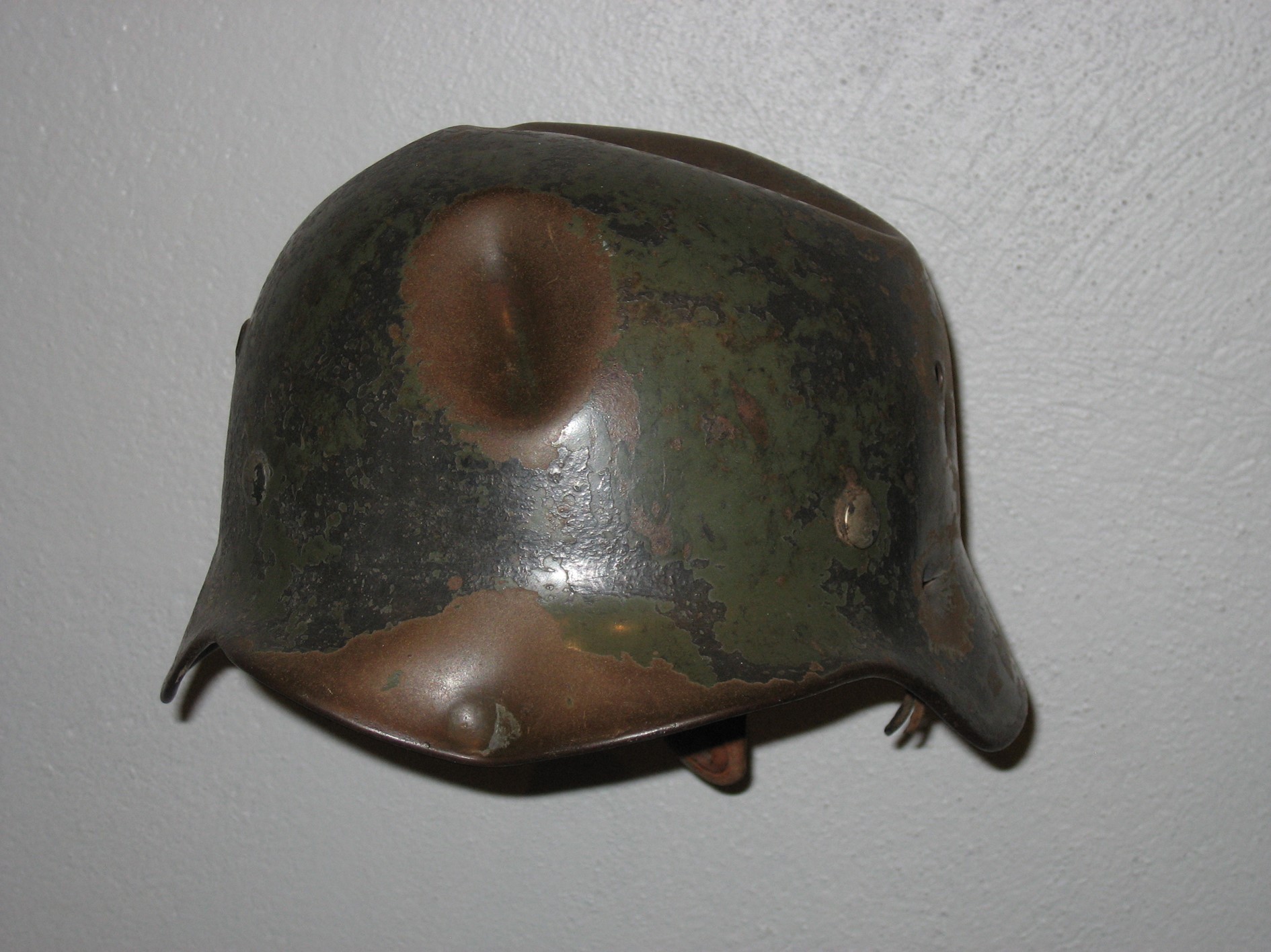
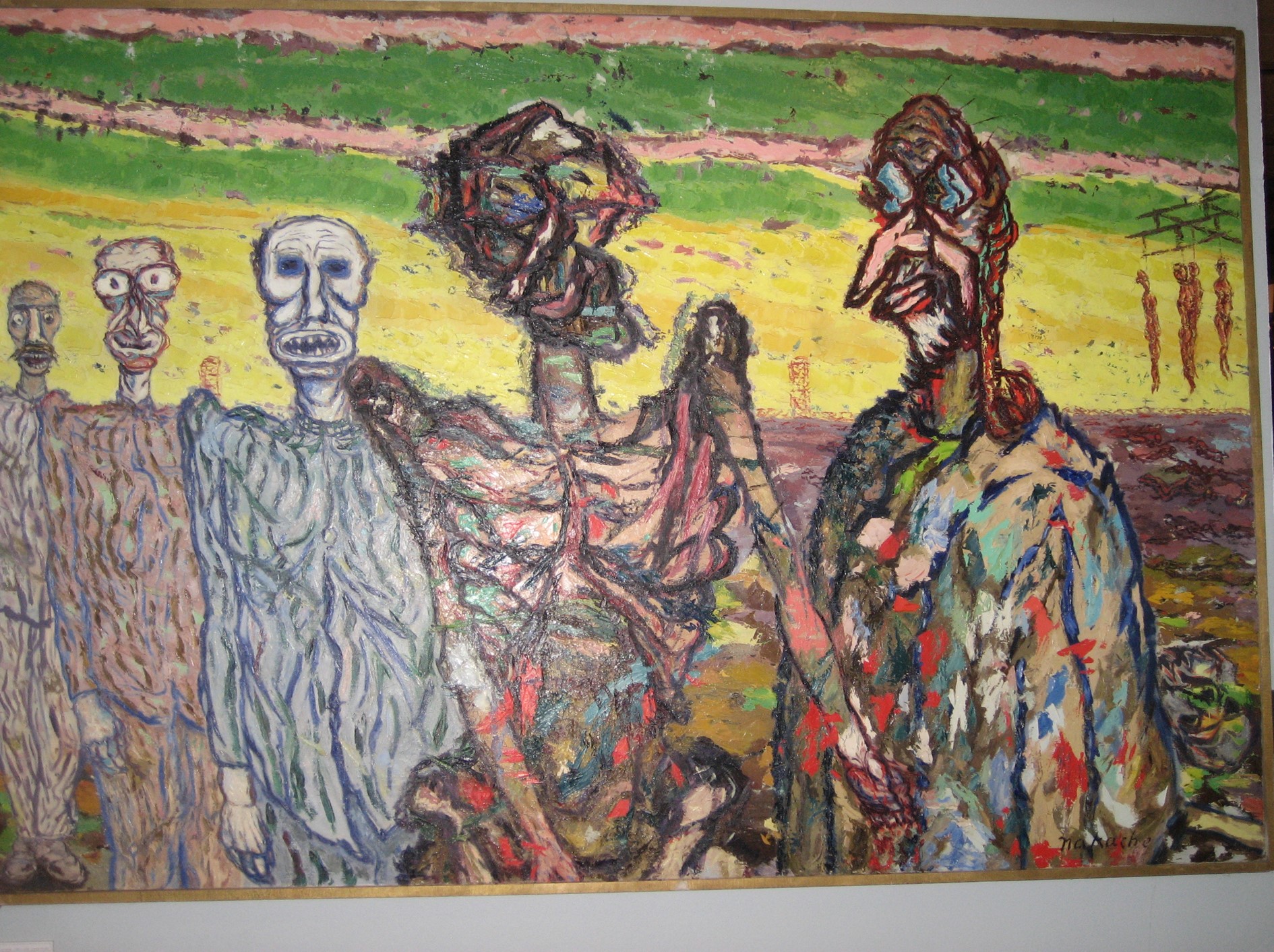
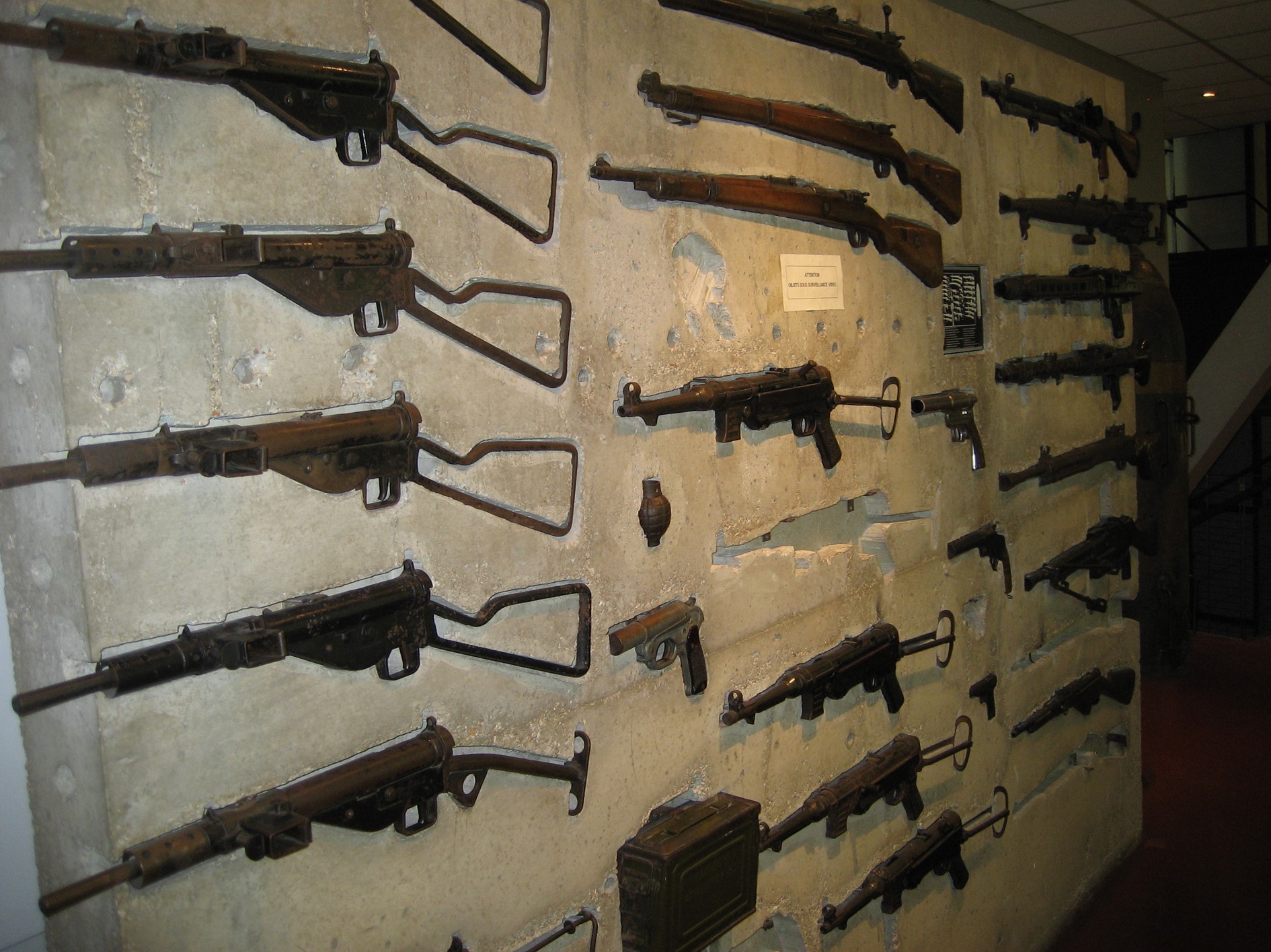
Resistors often acted through daily sabotage that went on in factories and farms across France. Workers and farmers sympathetic to the Resistance would often make minor miscalculations in designing tooling and equipment for factories. The result was flawed products—ball bearings that weren’t perfectly round or stamping machines in which the template had a flaw, rendering the finished goods useless. This would often result in months-long supply shortages for the Nazi war effort. Of course, when such sabotage was discovered, factory managers and entire design teams were often executed on the spot.
After the bus and train back to the city, we worked our way to the Champs-Élysées
to the Arc de Triomph.
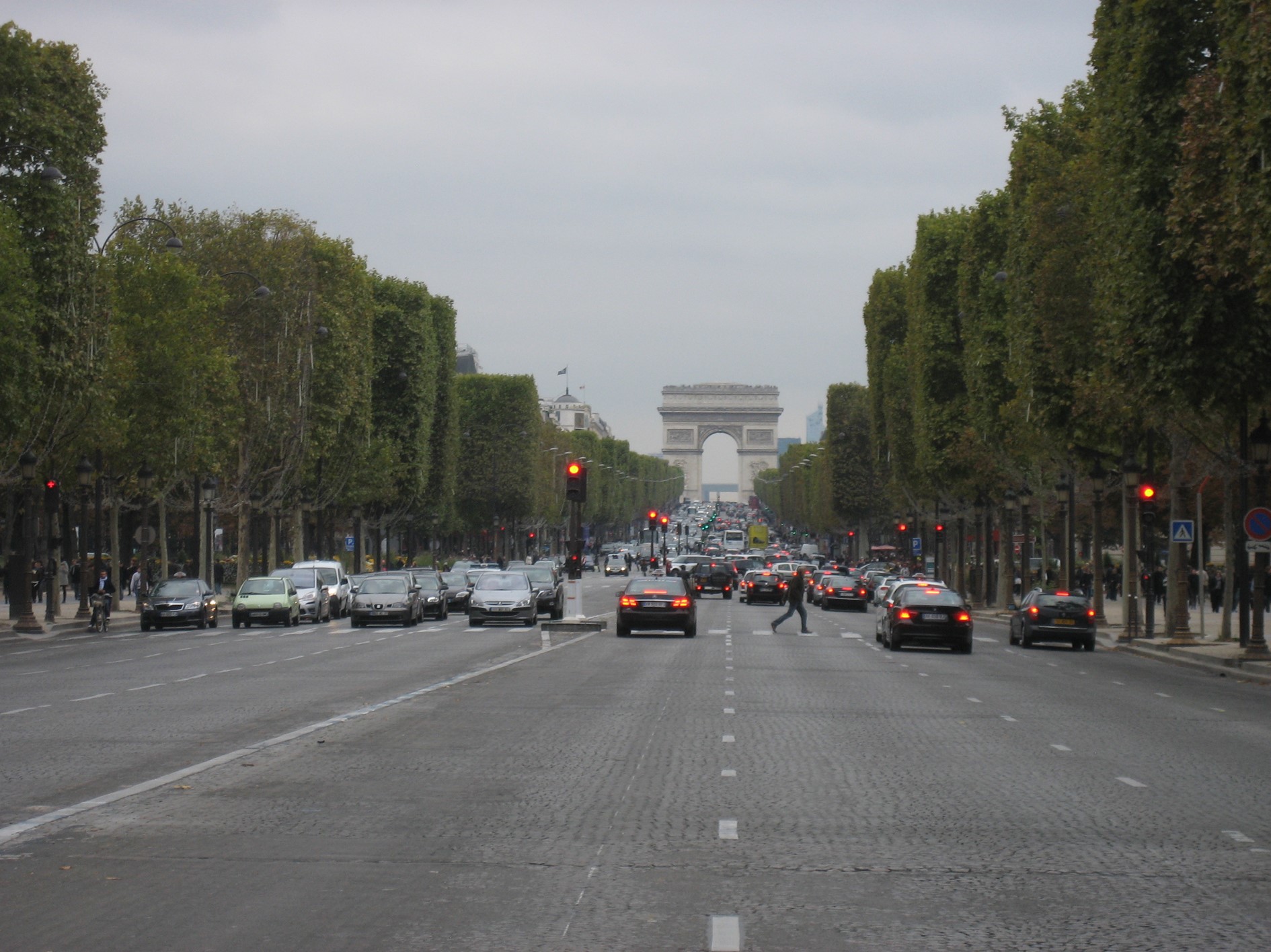
Here we stopped to enjoy a pizza and then returned to our apartment.
Dinner that evening was at the Le Vauban which was a short walk within sight of our apartment.
Monday – Rouen
We caught the 10:53 train from Paris to Rouen.
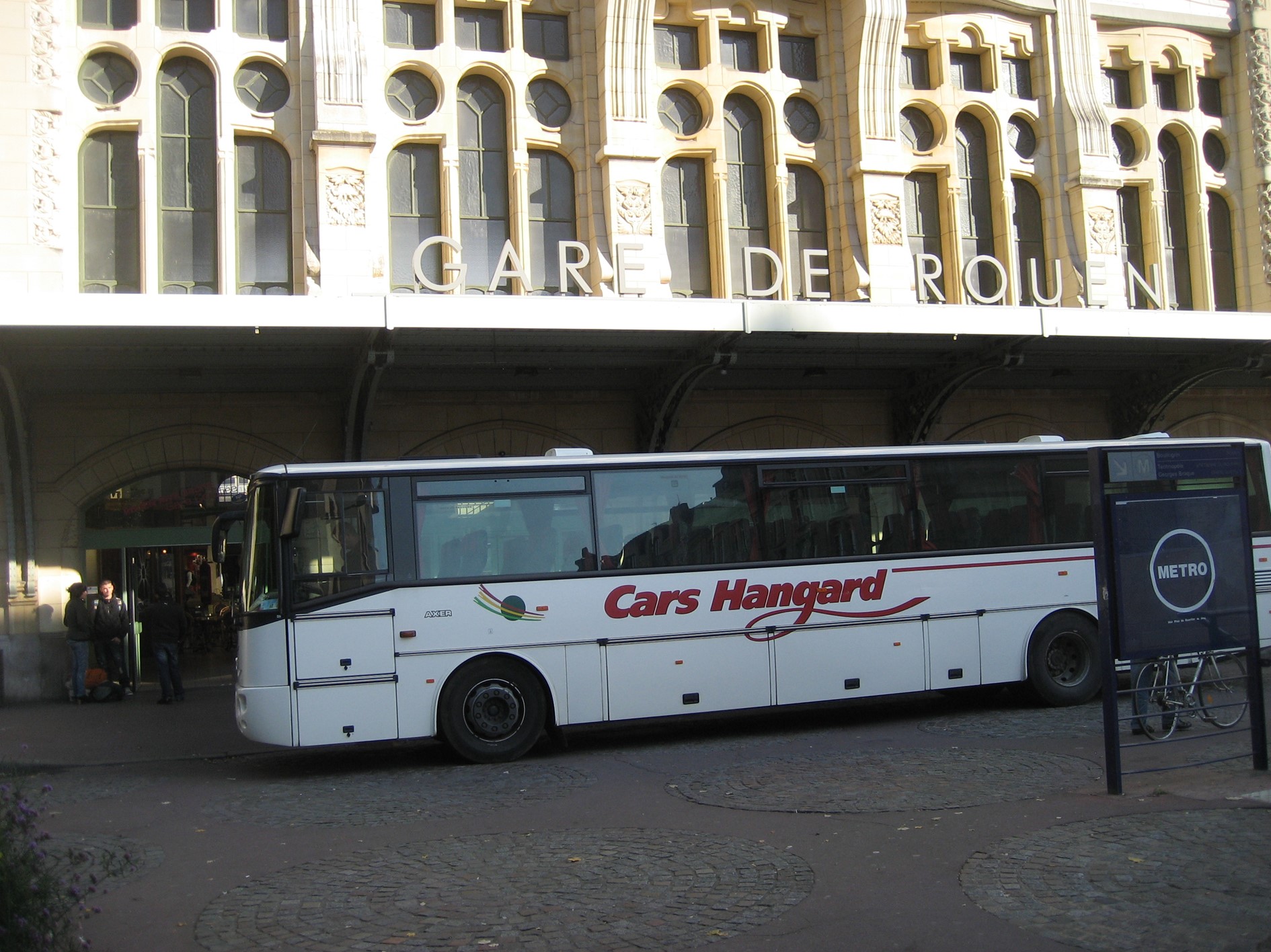
The train station itself was beautiful and the surrounding area was very picturesque.
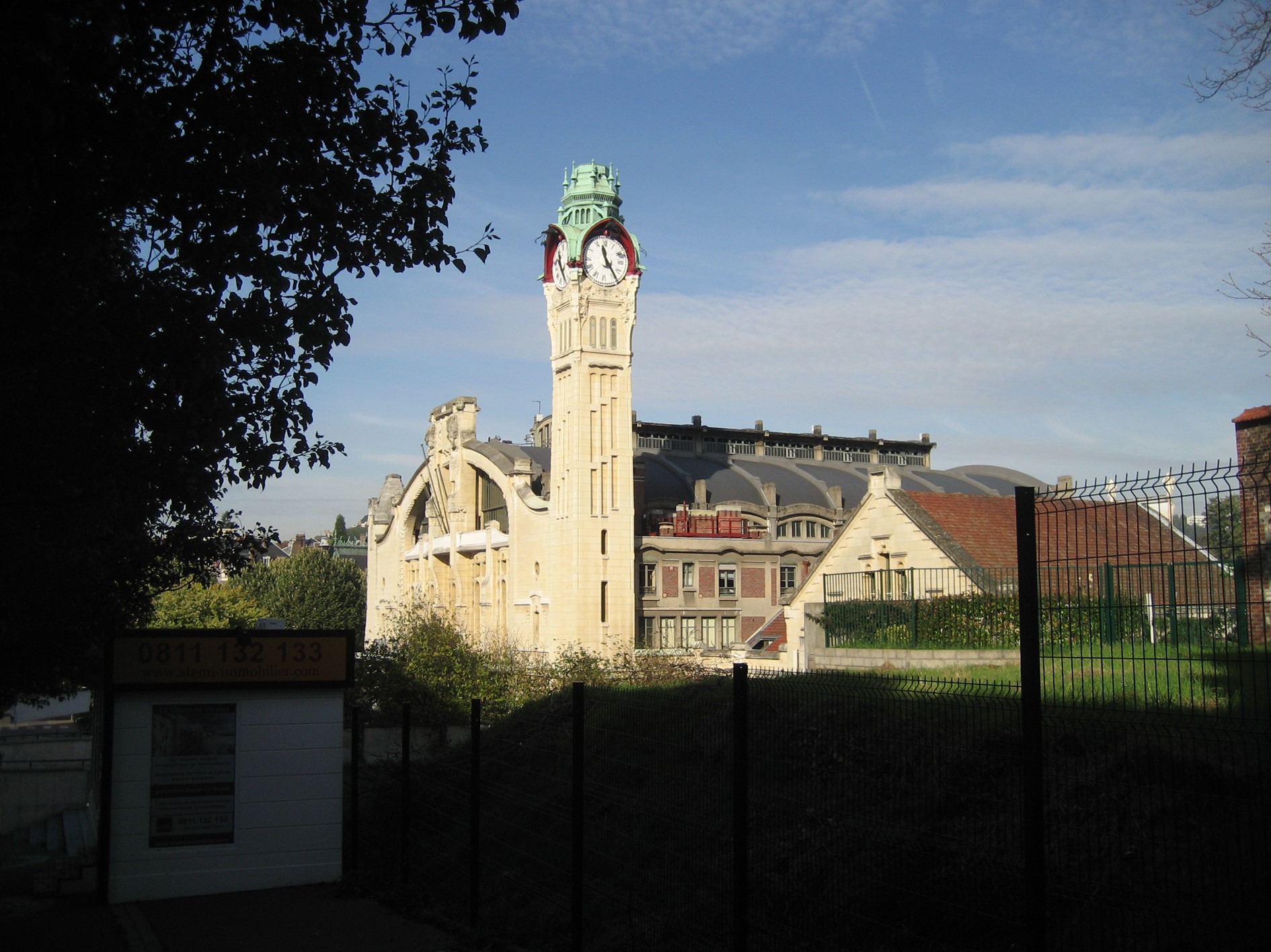
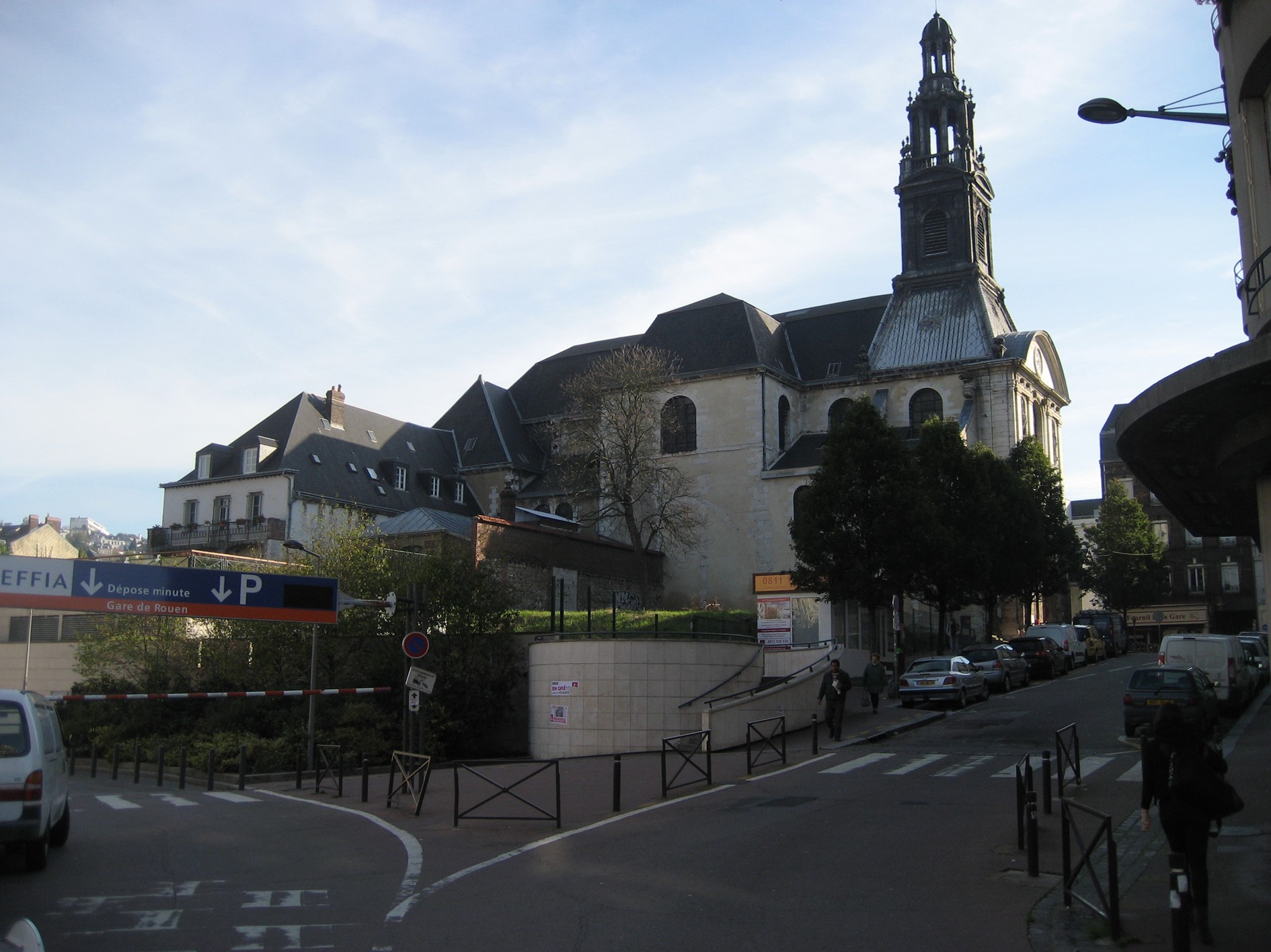
Upon arrival we visited Hertz to rent a car. We left the car parked in the Hertz lot with our luggage and set out to explore Rouen. It was a short walk to the site where Joan D’Arc was burned and is now buried.
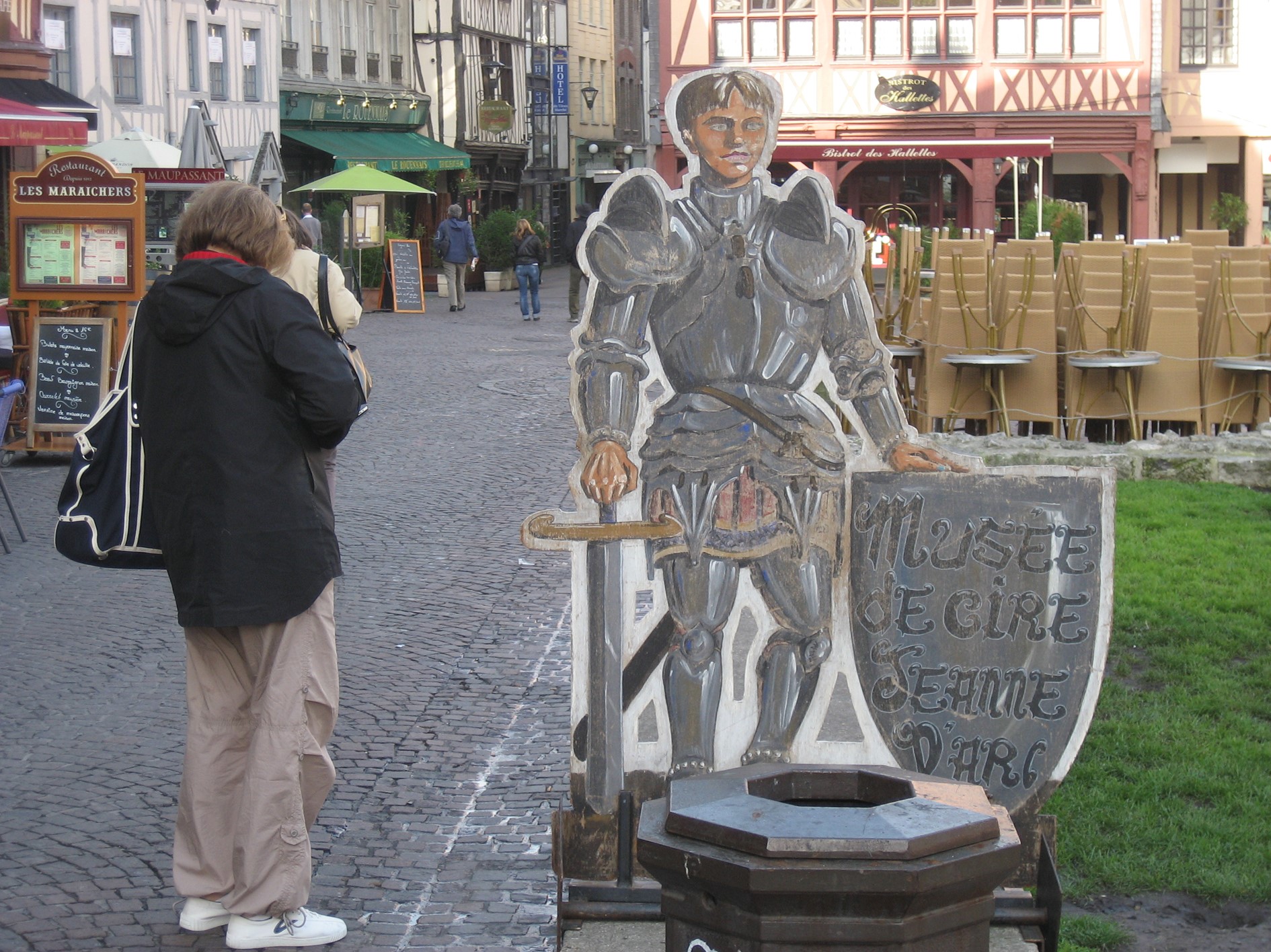
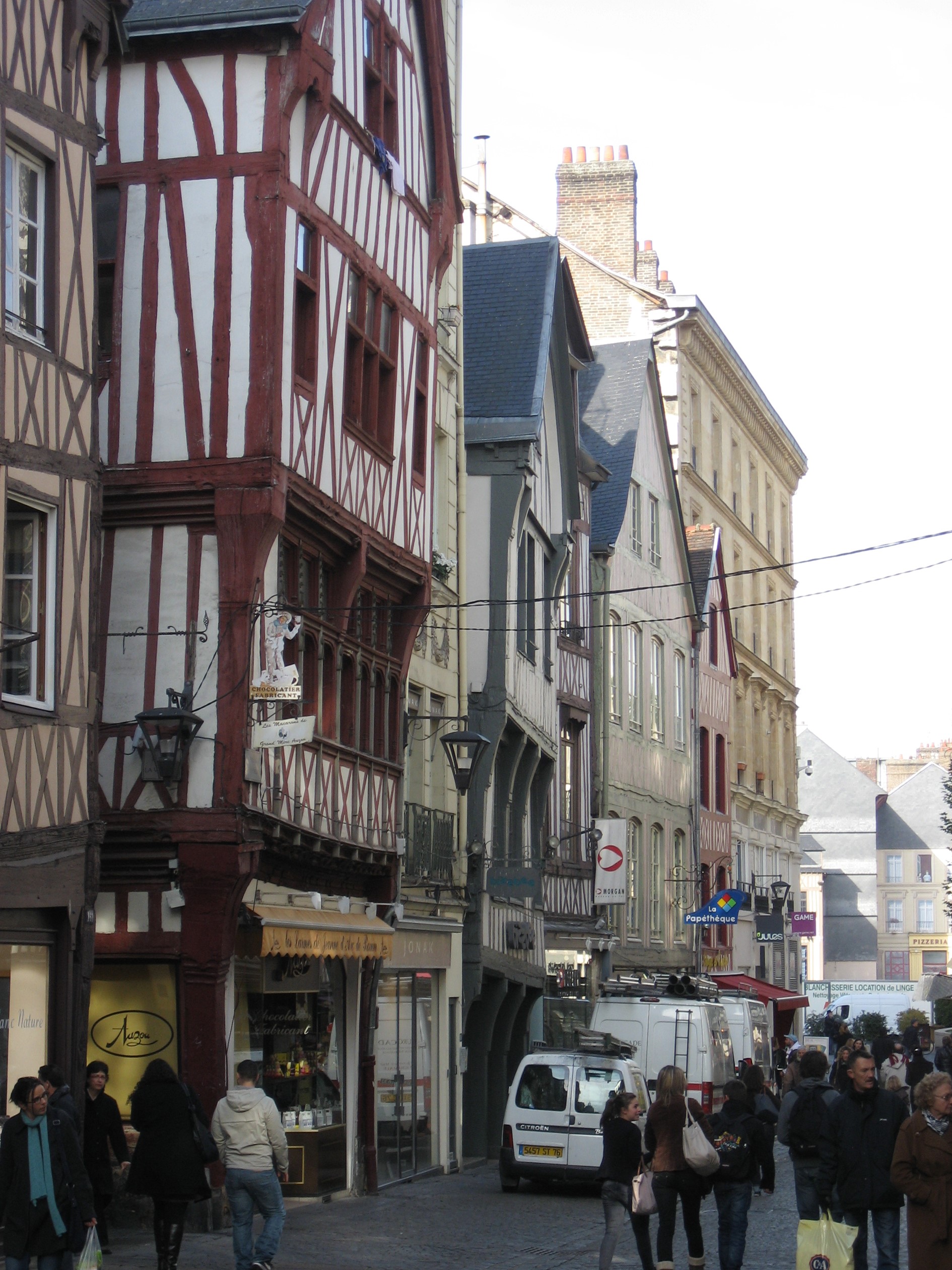
We also passed by the big clock (Gros Horloge) which only had an hour hand. Apparently that was close enough.
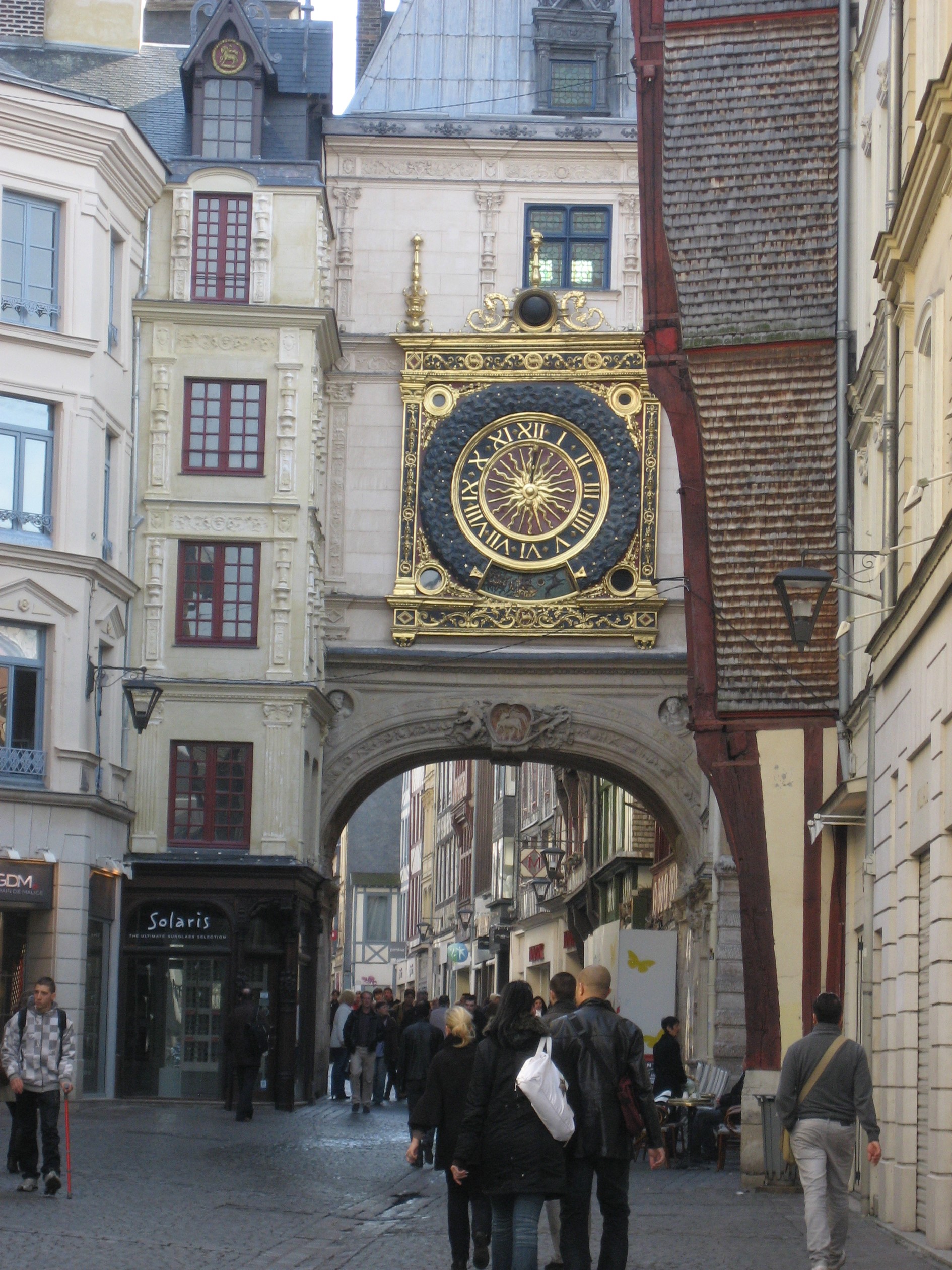
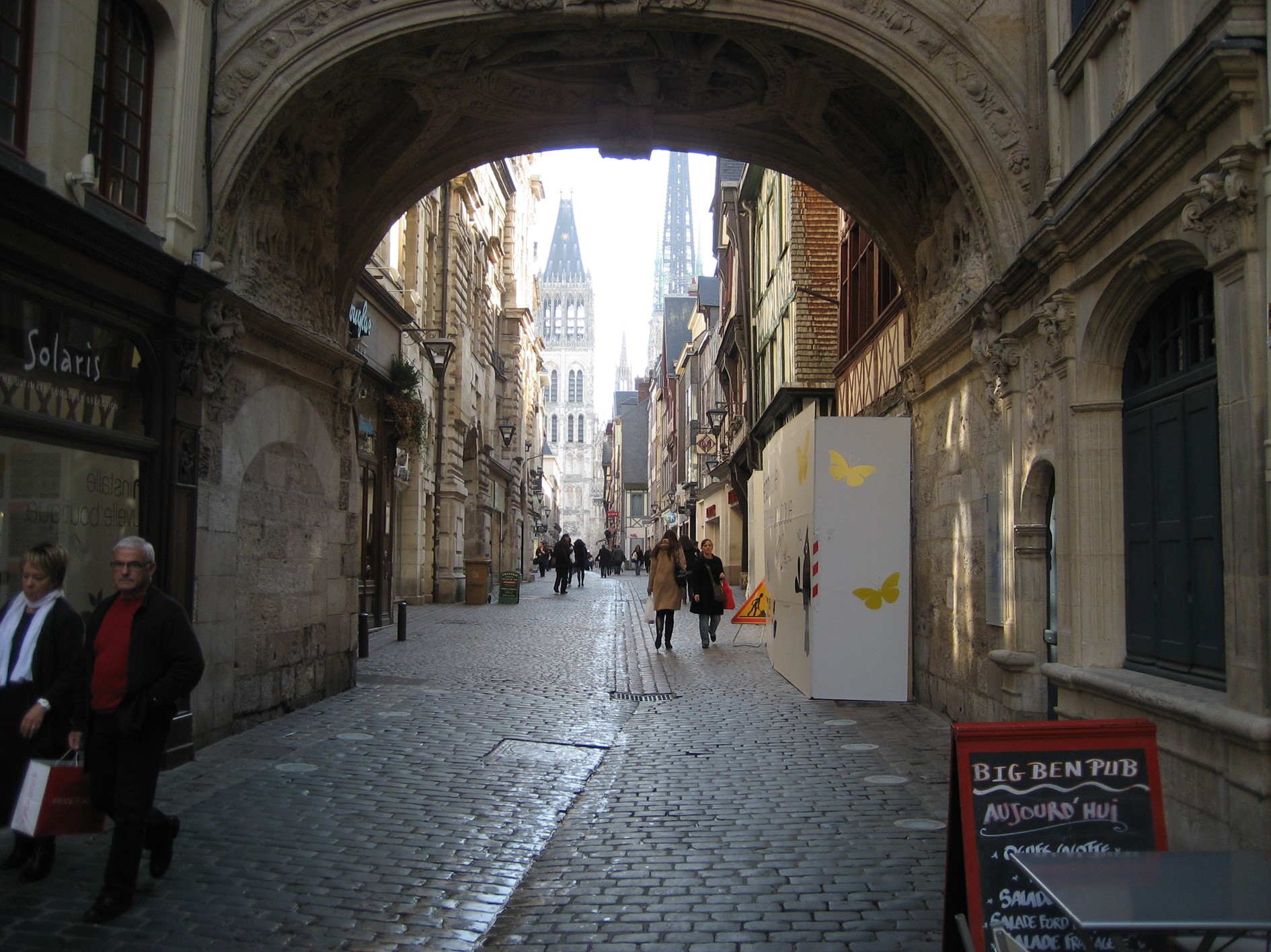
This was the home of Robert Cavelier De La Salle who explored the Mississippi in the United States.
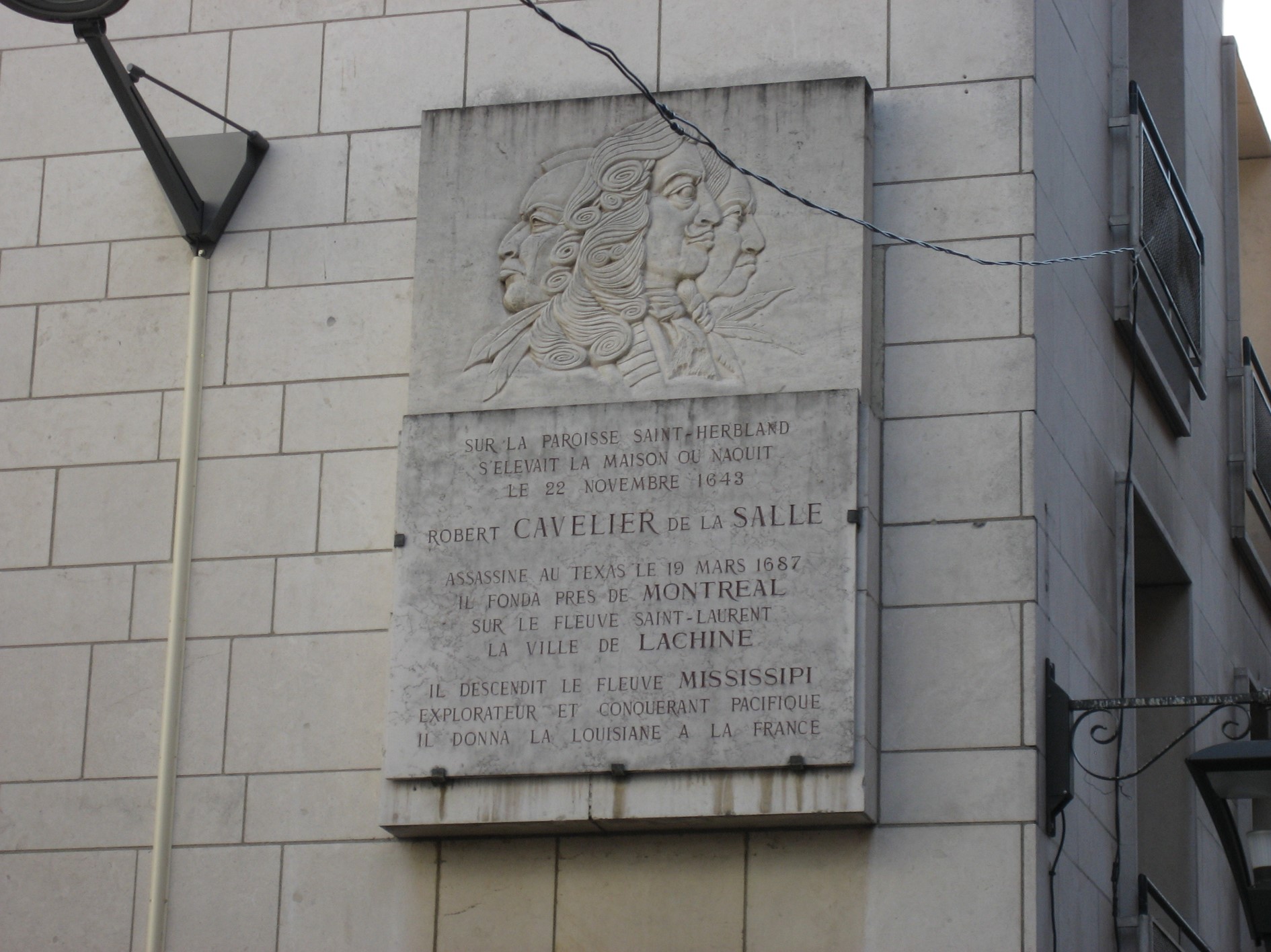
Many cities in France have churches called Notre Dame and Rouen is one of them.
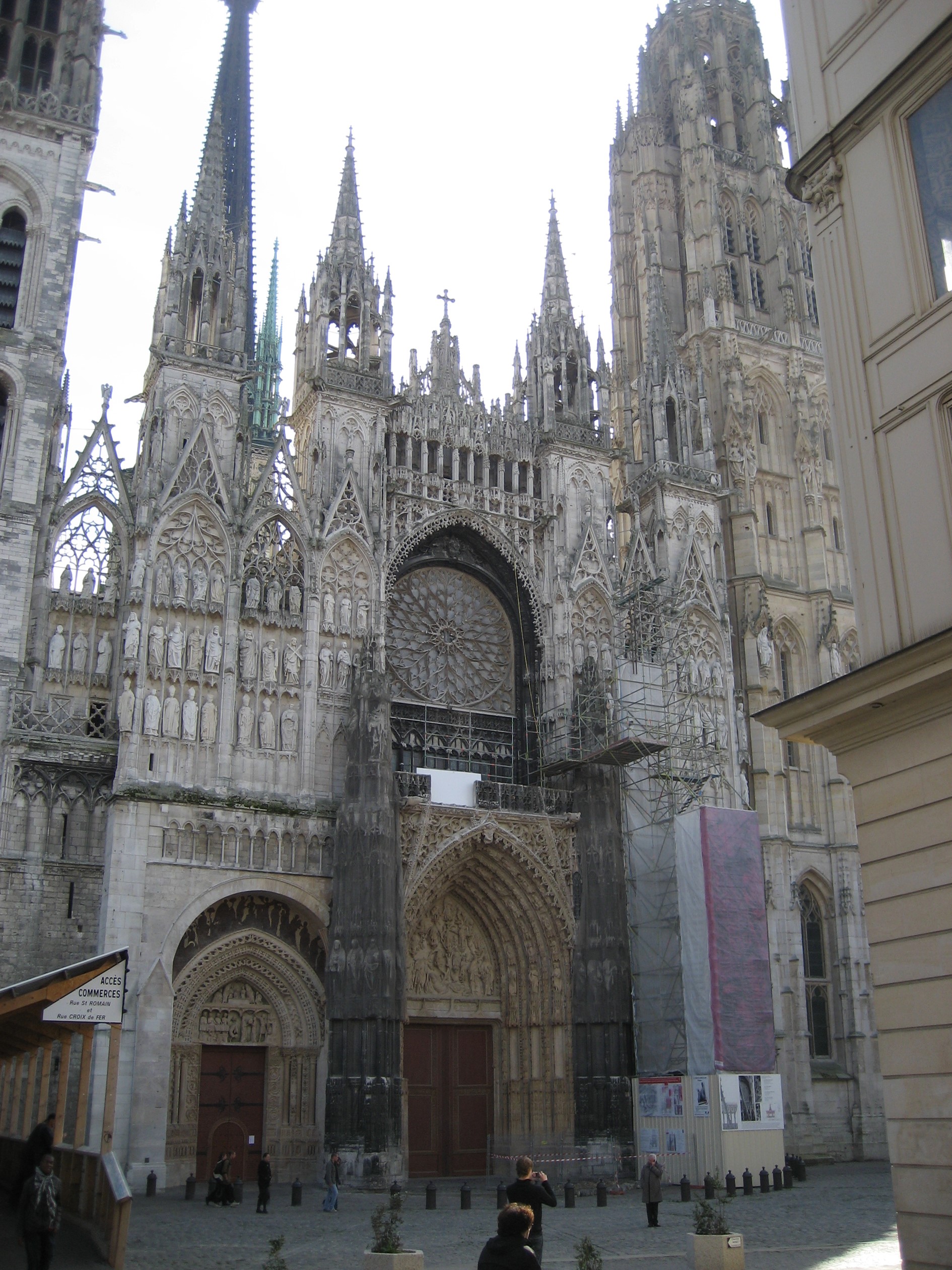
There is also a mausoleum which was the place used for mass burials during the plague years.
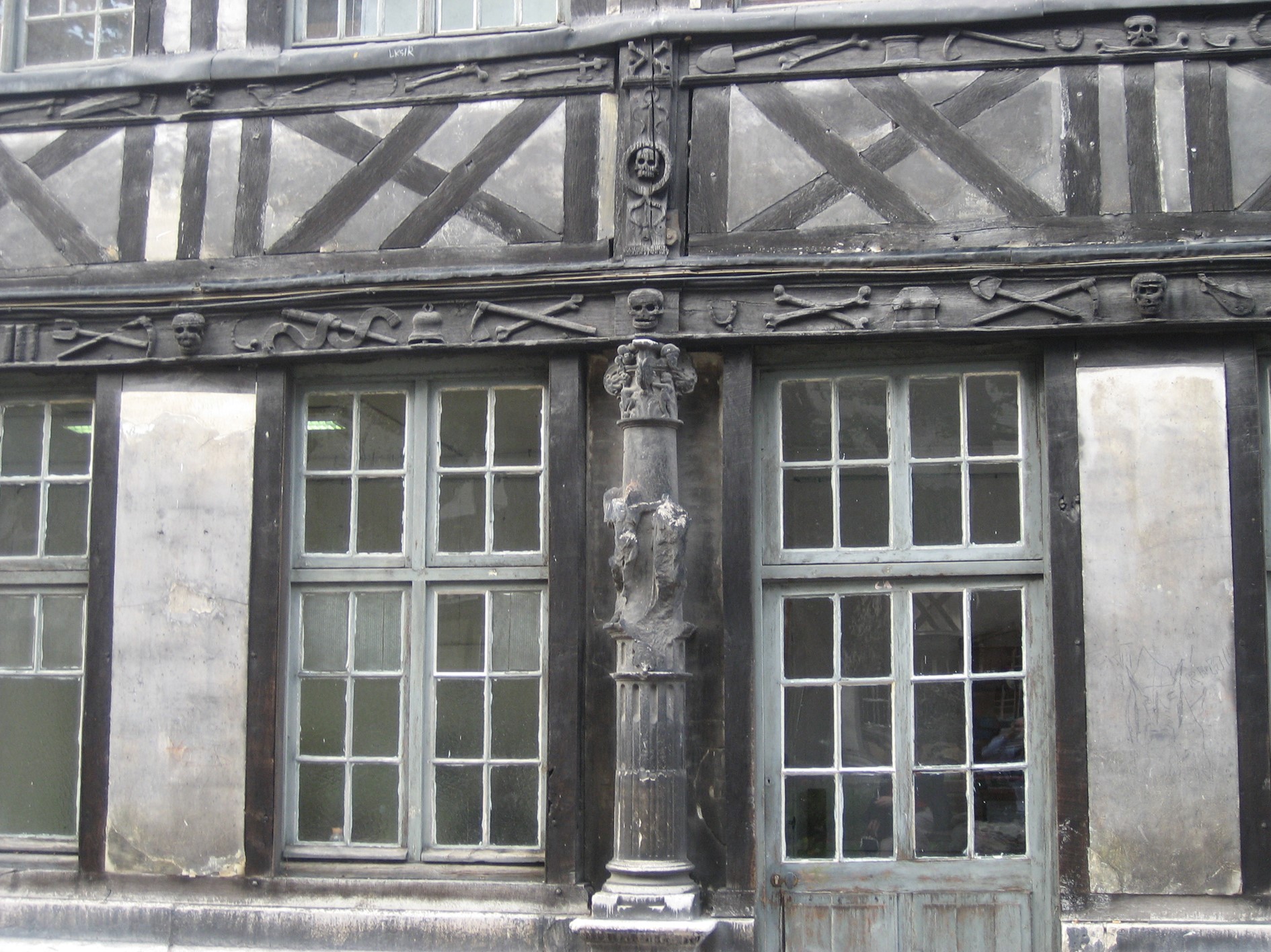
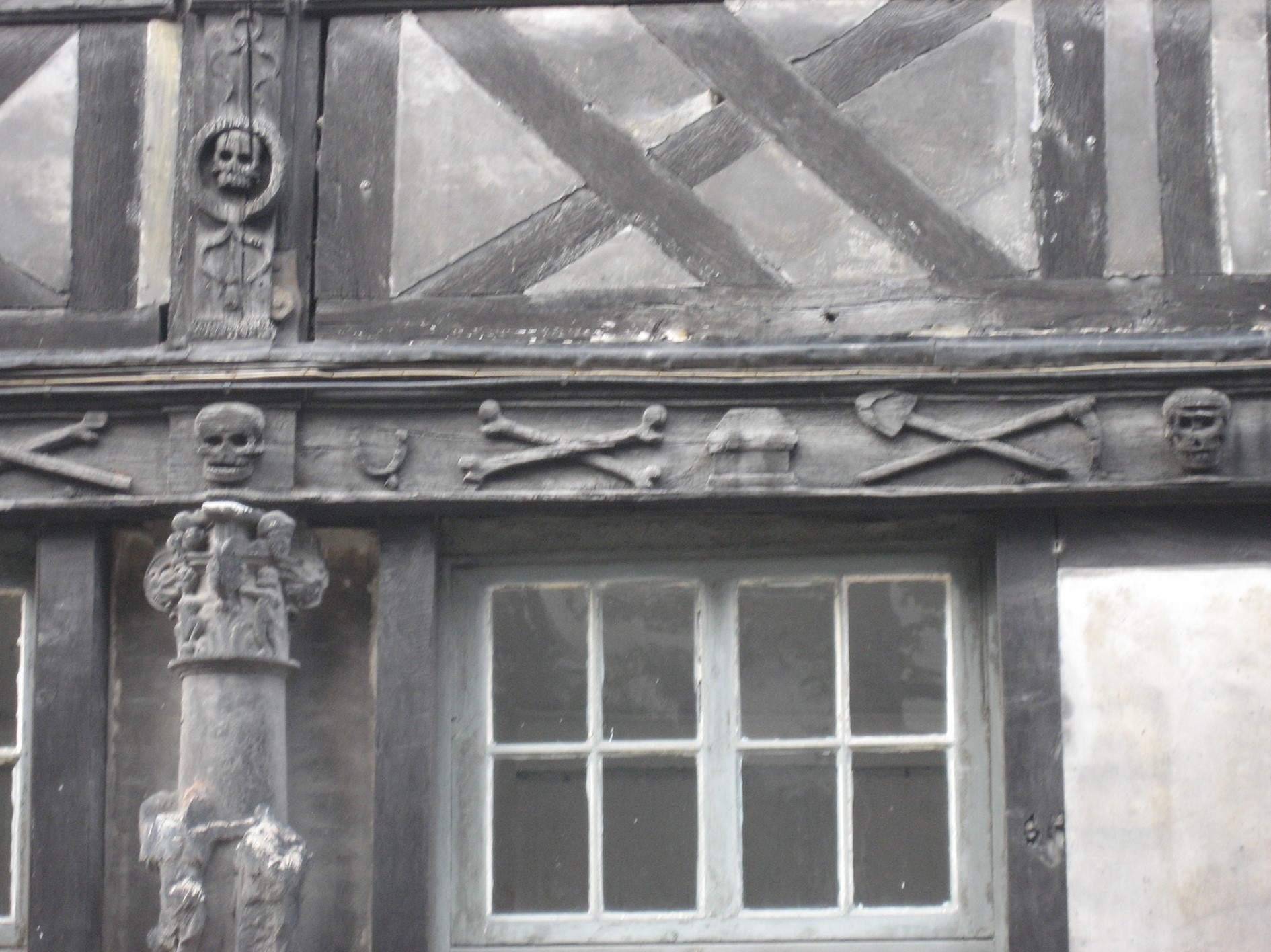
We walked back to the Rouen train station (Gare Du Rouen). Picked up our rental car and began the drive to Honfleur.
We arrived in Honfleur with about an hour of sunlight left. This was fortunate because finding the bed and breakfast where we had a reservation was quite a challenge. Eventually, we stumbled upon La Cour Sainte Catherine.
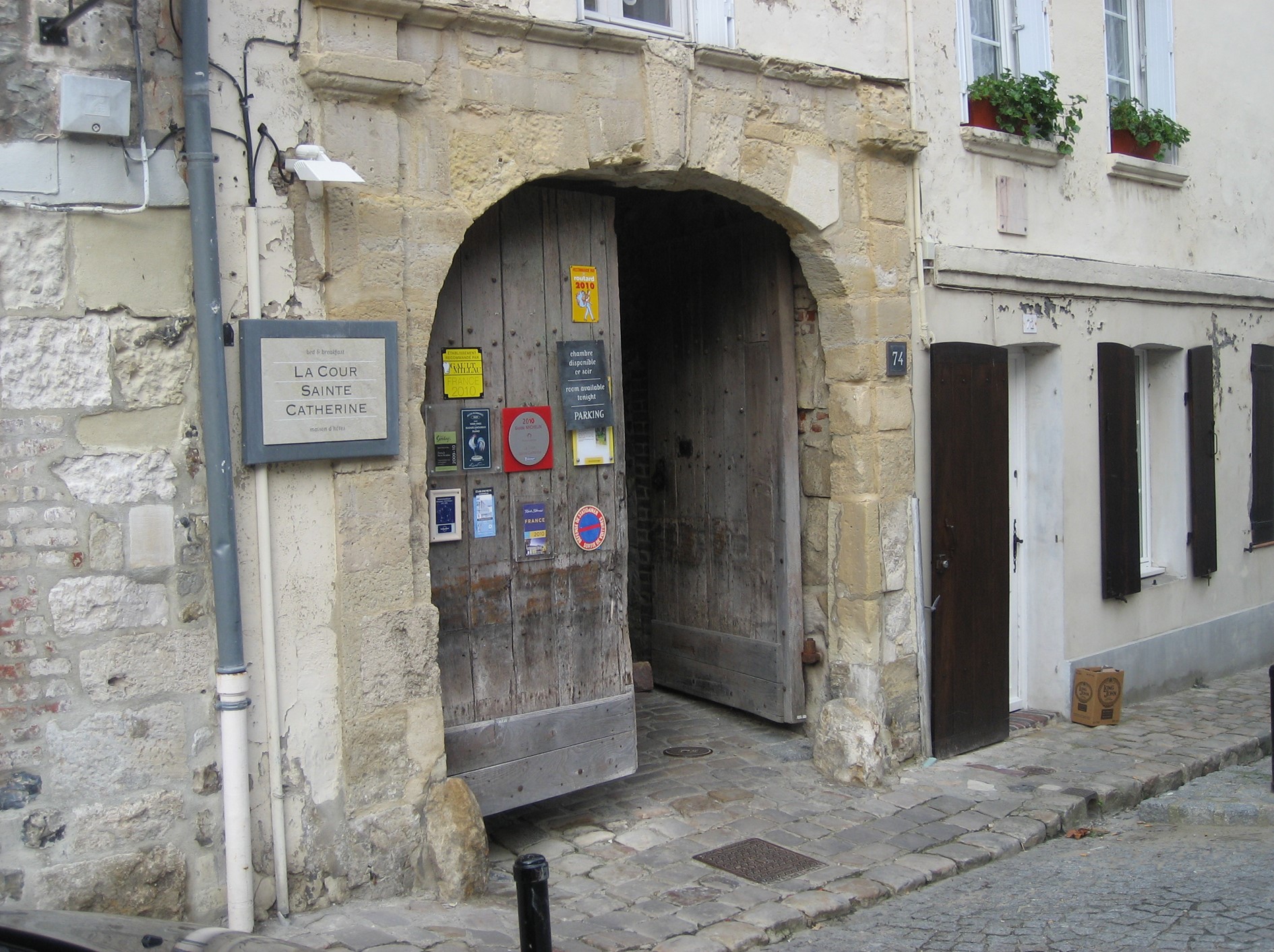
This was a charming old place that was slowly being renovated. There was a cat perched so as to keep track of the comings and goings of the guests.
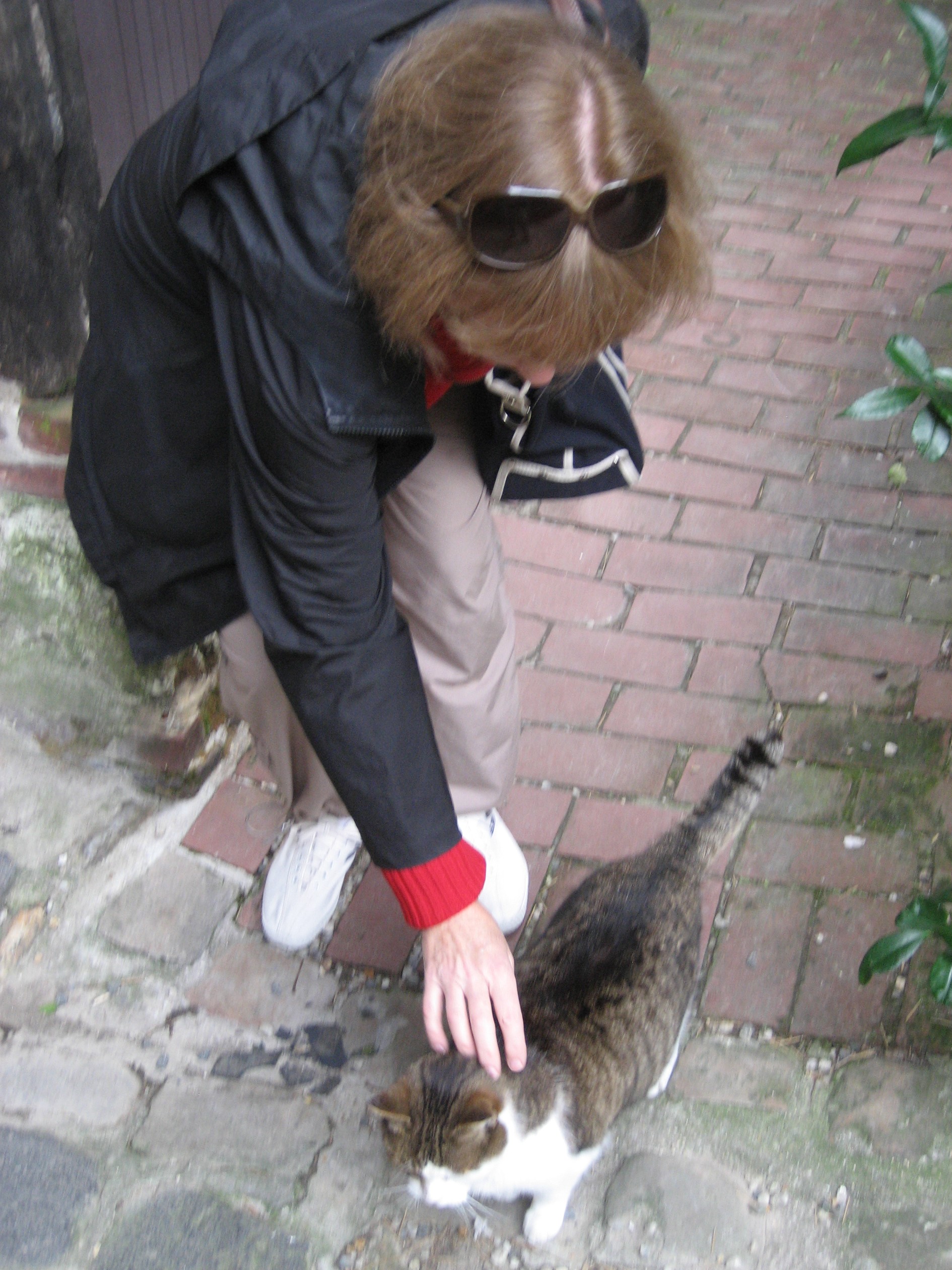
This was our favorite town. Below was the view walking downhill from our bed and breakfast.
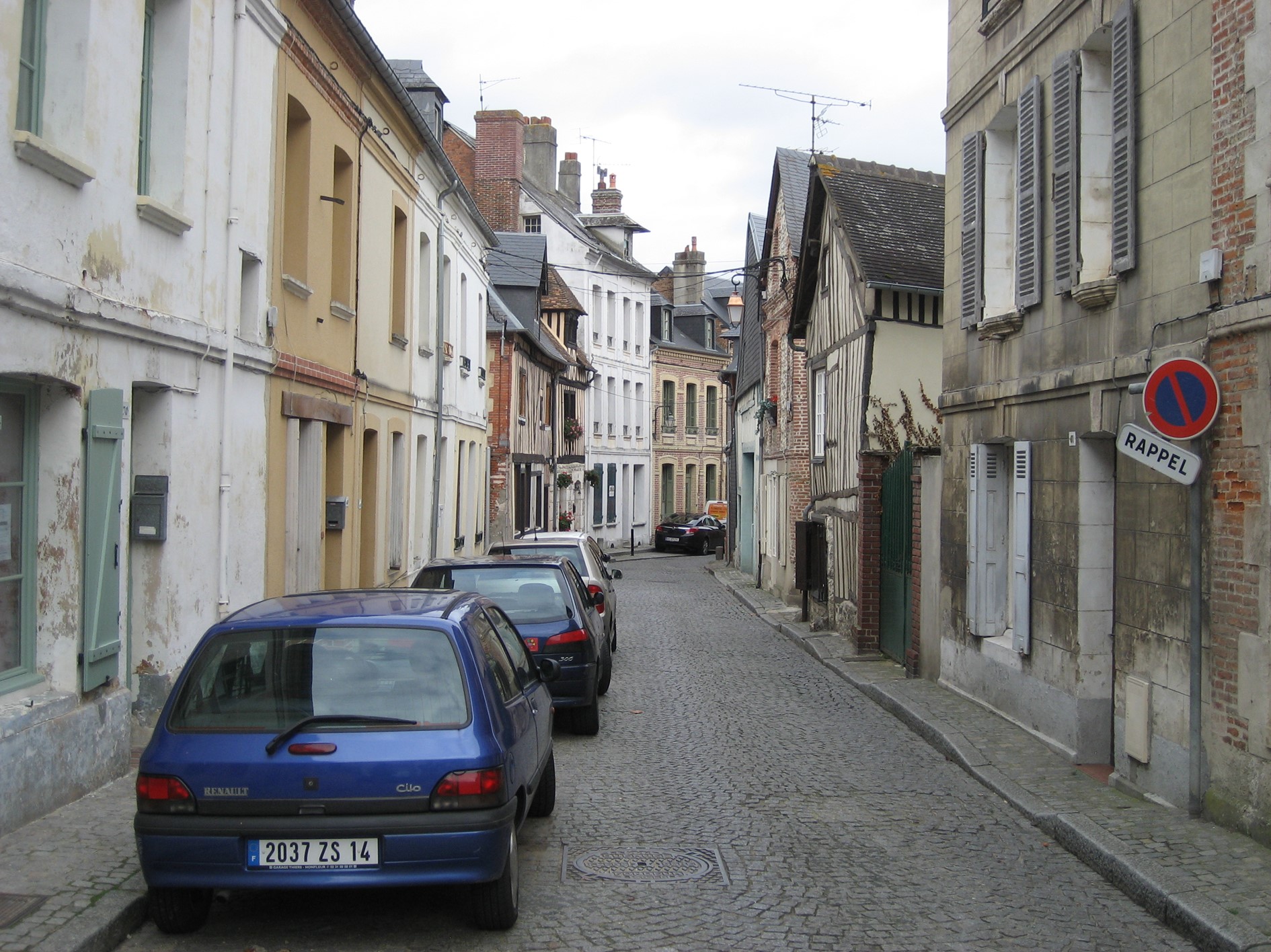
The major landmark is Saint Catherine Church.
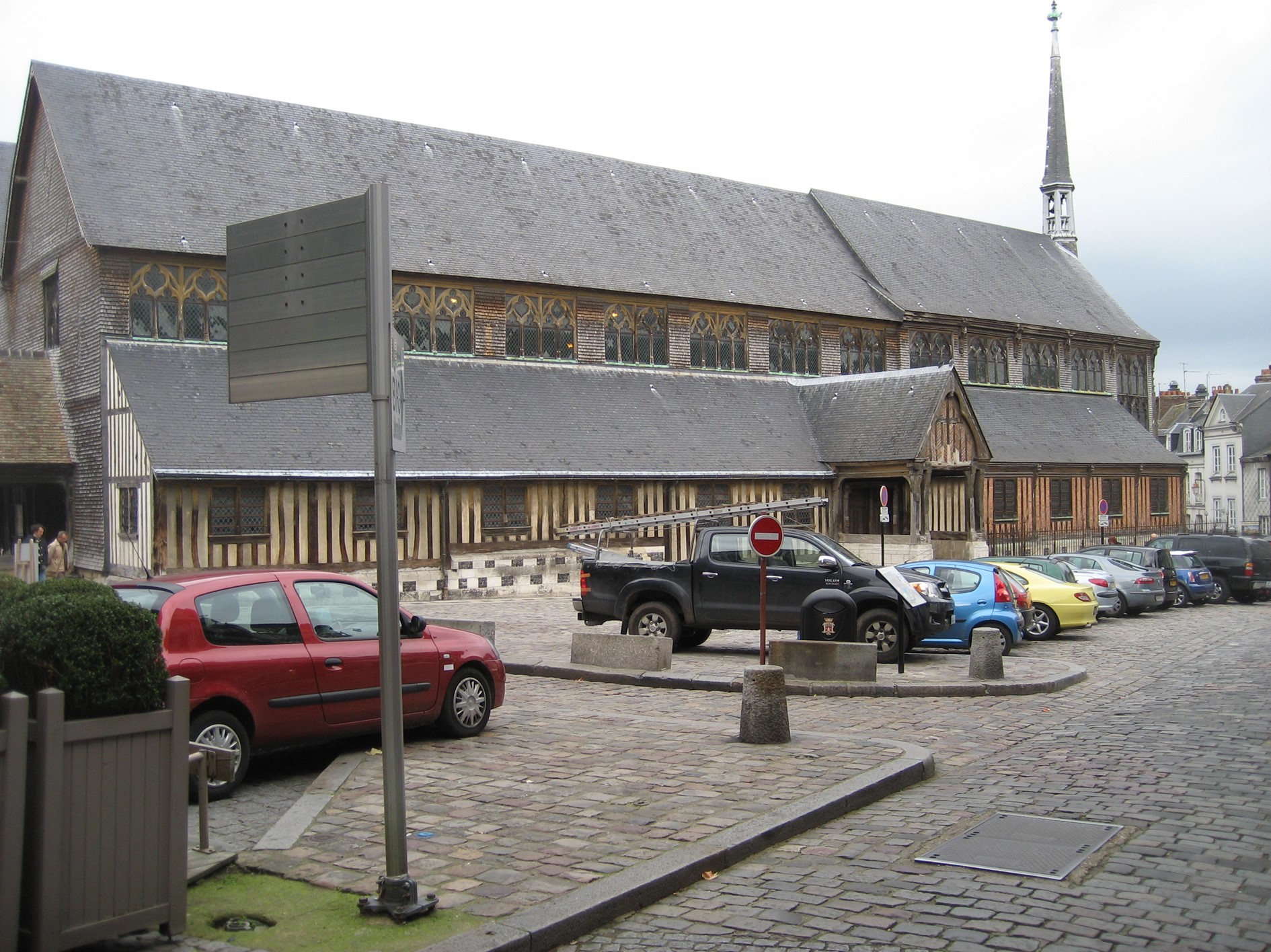
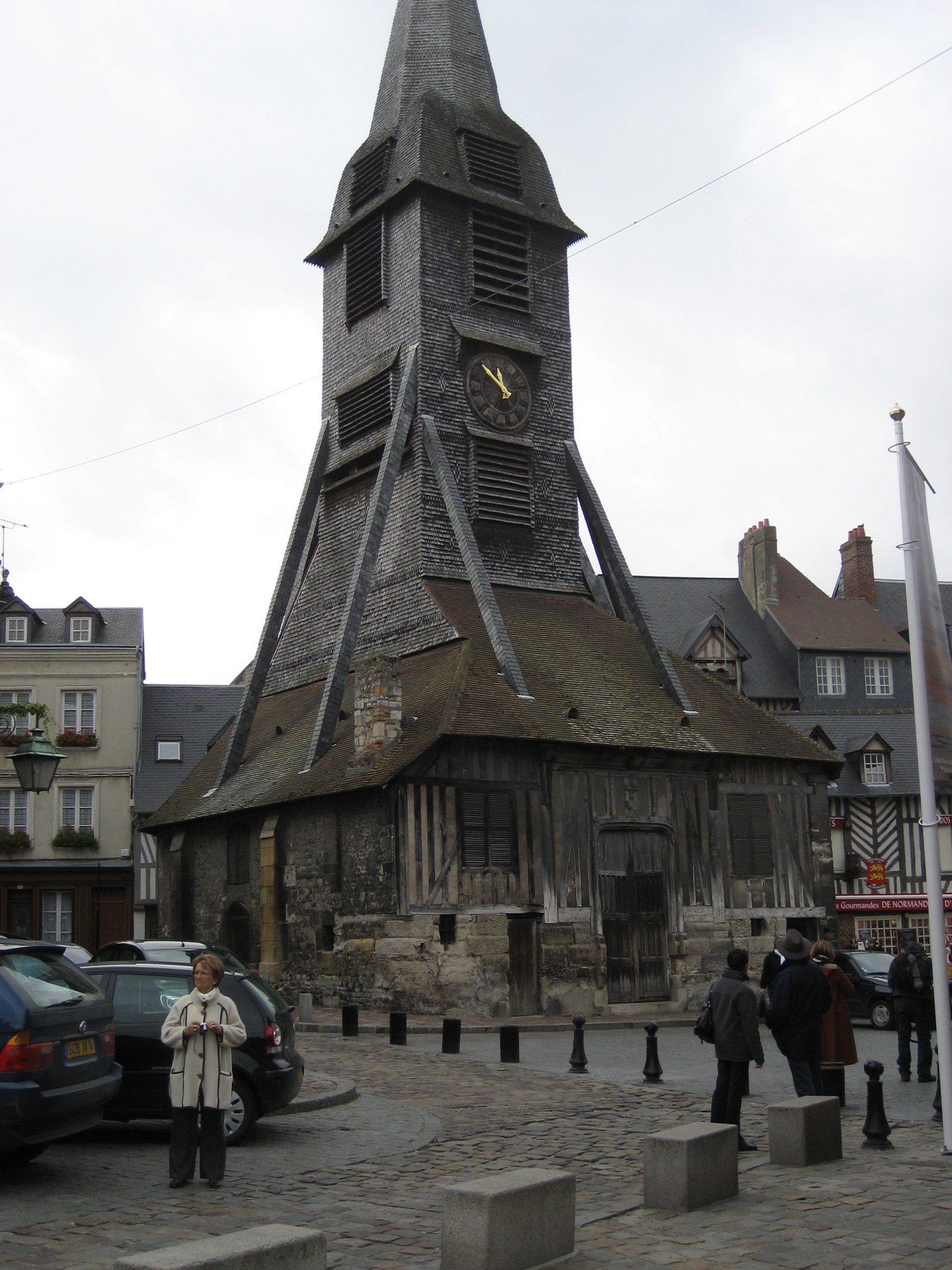
The city sits at the mouth of the Seine and has a very active fishing community.
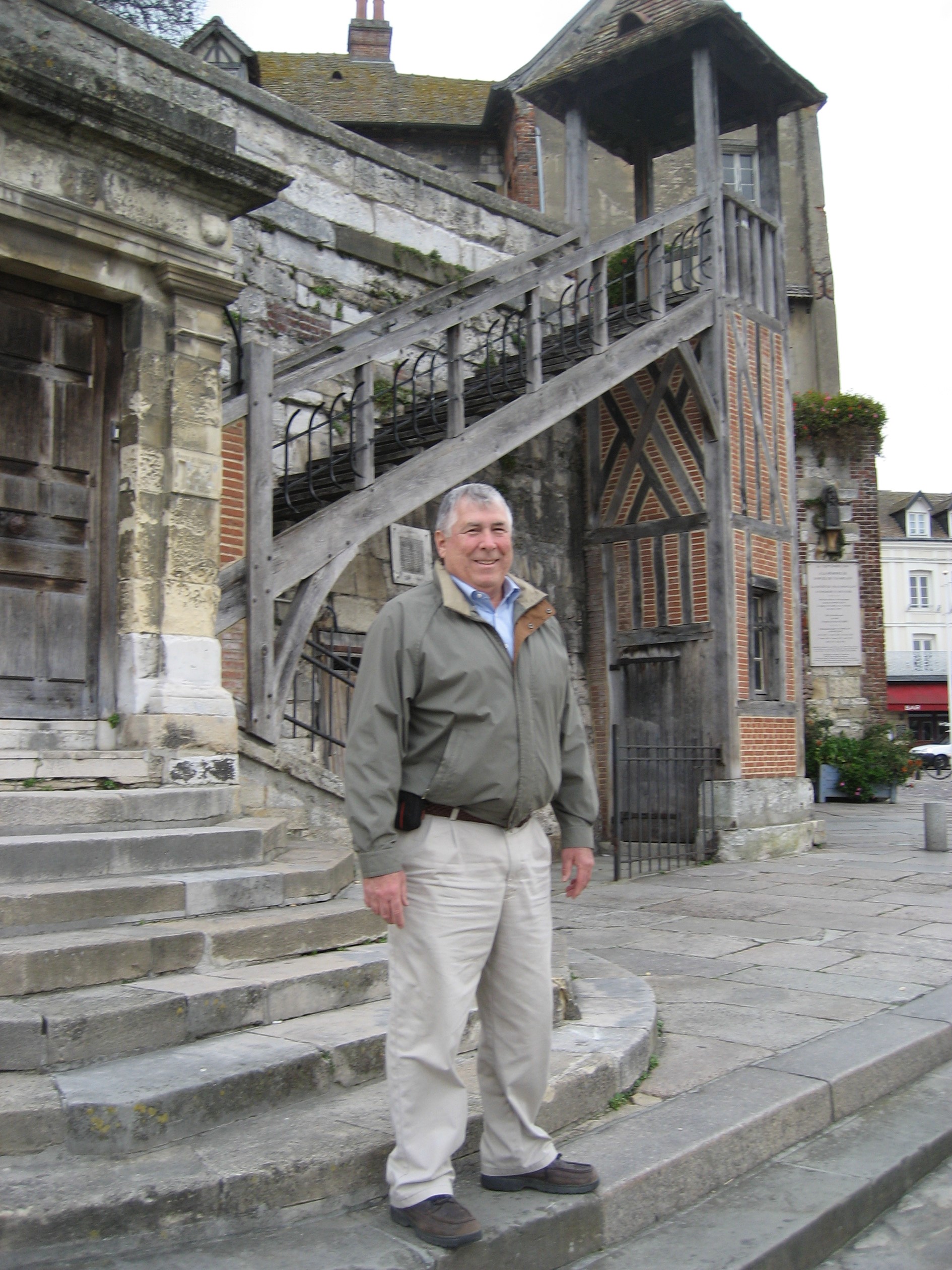
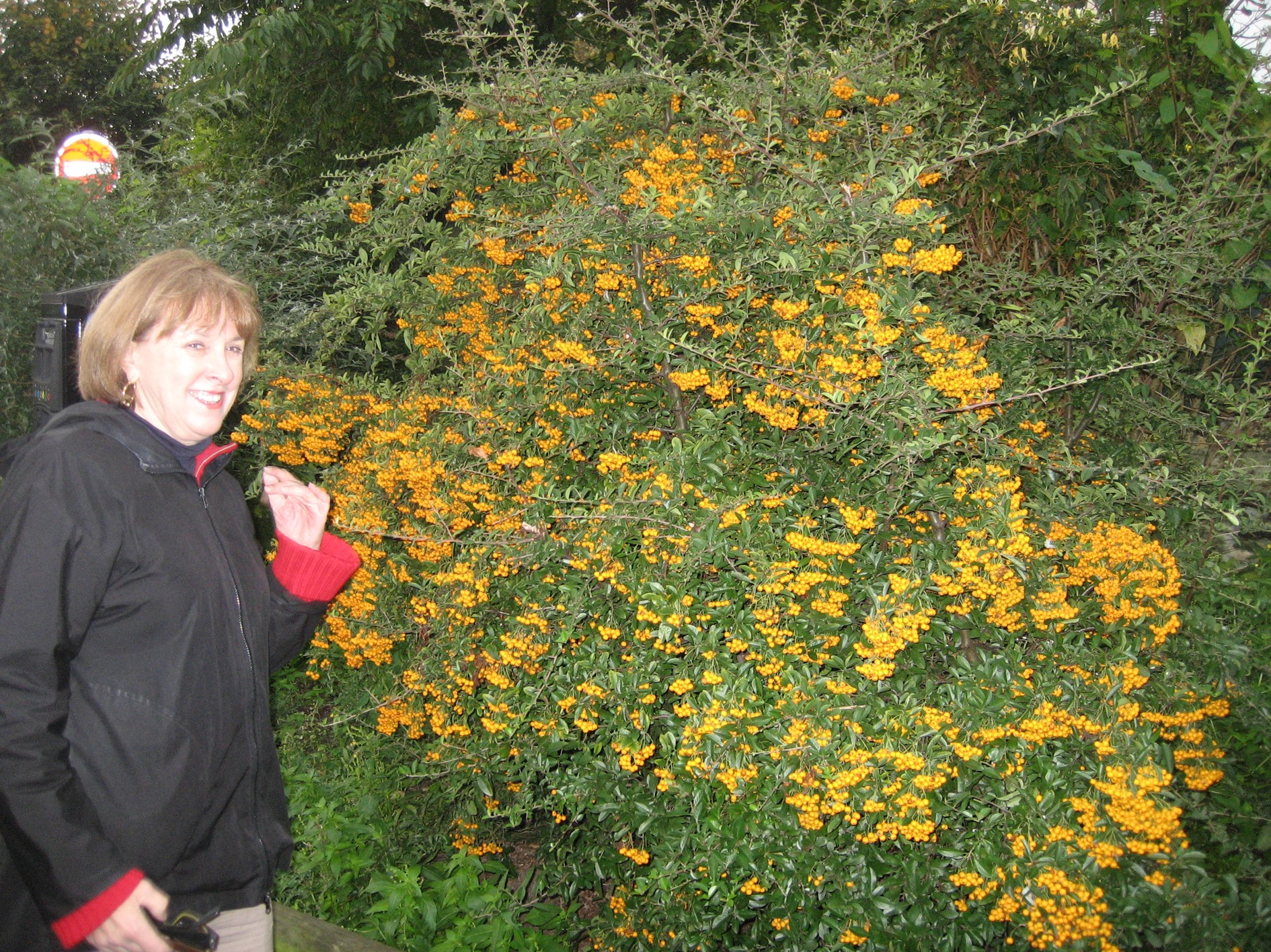
The city has very narrow streets which made for difficult driving but enjoyable walking.
Honfleur sits at the mouth of the Seine River. I believe it was used as a backdrop for the Popeye movie.
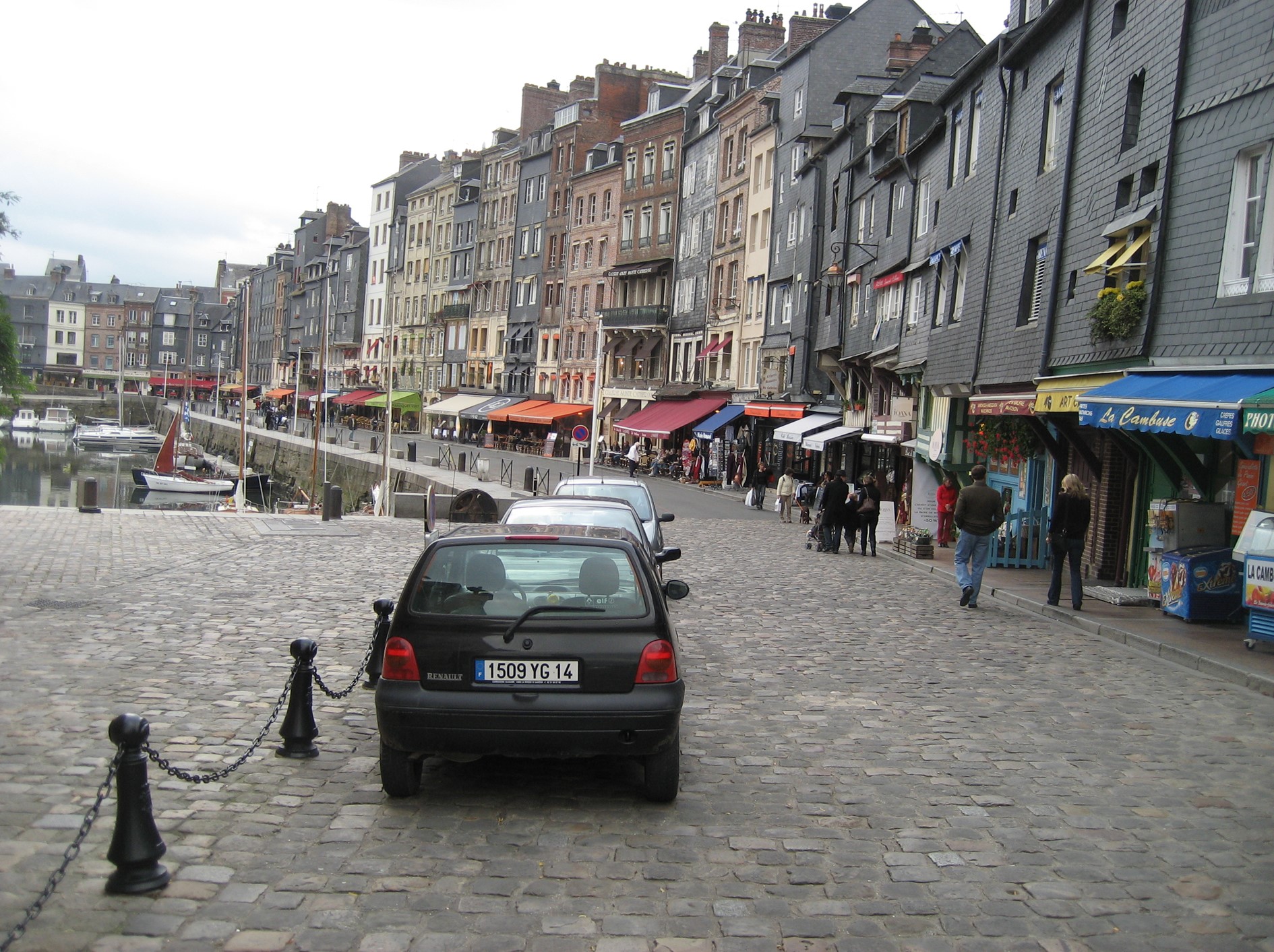
We had two highly rated choices for dinner in Honfleur. We selected La Tortue and we were not disappointed.
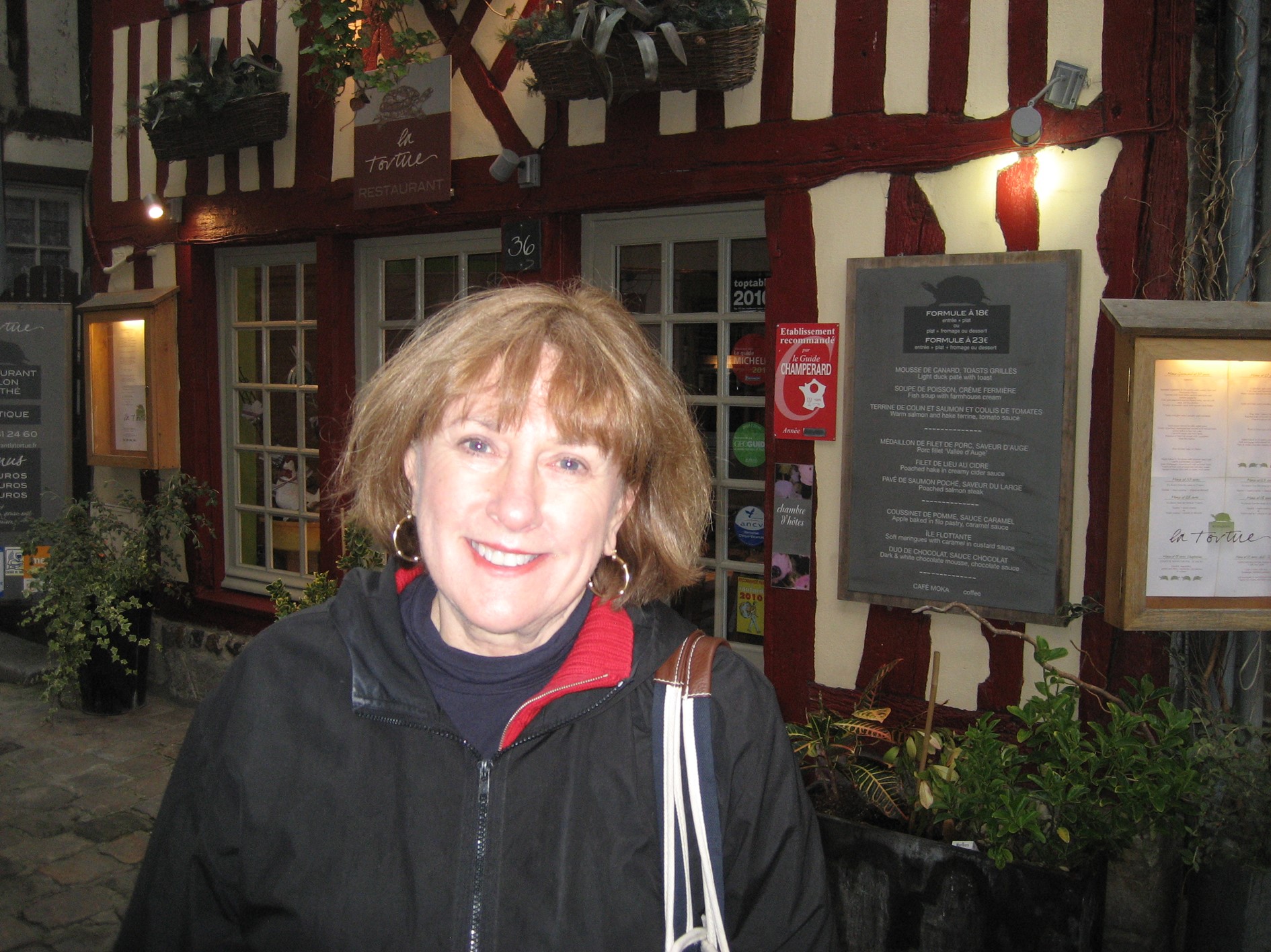
Tuesday – Honfleur
It was raining. We slept in and had a leisurely breakfast. We then packed up, loaded the car and began our drive to Caen.
Caen
The goal in Caen was the World War II museum. We carefully followed driving directions to Caen and to the museum. Unfortunately, our carefully mapped route in the city of Caen was blocked by police because of a union workers march protesting the French government’s move to delay retirements to age 62. With no guidance, we drove in circles for over an hour before we found an alternative route to the memorial.
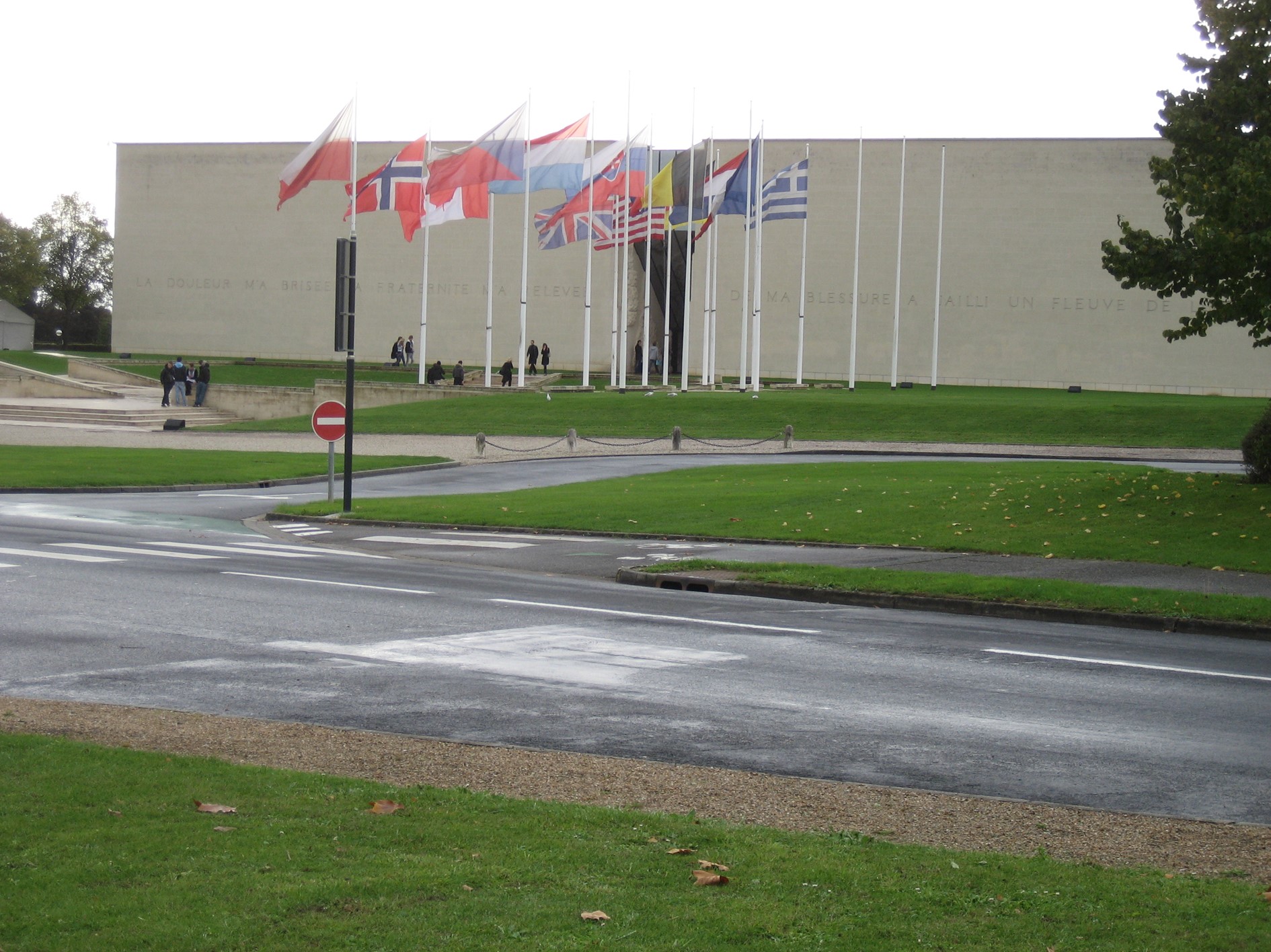
The memorial itself is overwhelming. There are numerous short films that show the progress of the war going back to the end of World War I. During this visit, I learned of the collapse of the French government that let to the easy occupation by Nazi Germany.
Marshal Philippe Pétain and the Vichy Regime willfully collaborated with the German occupation to a high degree. The French police and the state milice (militia) organized raids to capture Jews and others considered “undesirables” by the Germans in both the northern and southern zones.
The legitimacy of Vichy France and Pétain’s leadership was challenged by General Charles de Gaulle, who claimed instead to represent the legitimacy and continuity of the French Government. Following the Allies’ invasion of France in Operation Overlord, de Gaulle proclaimed the Provisional Government of the French Republic (GPRF) in June 1944. After the Liberation of Paris in August, the GPRF installed itself in Paris on 31 August. The GPRF was recognized as the legitimate government of France by the Allies on 23 October 1944.
We spent almost 4 hours in the museum before driving on to Bayeuz.
Bayeux
Bayeux is only six miles from the D-Day beaches and was the first city liberated after the landing.
The Bayeux Cathedral sits in the center of the town and is a beautiful landmark.
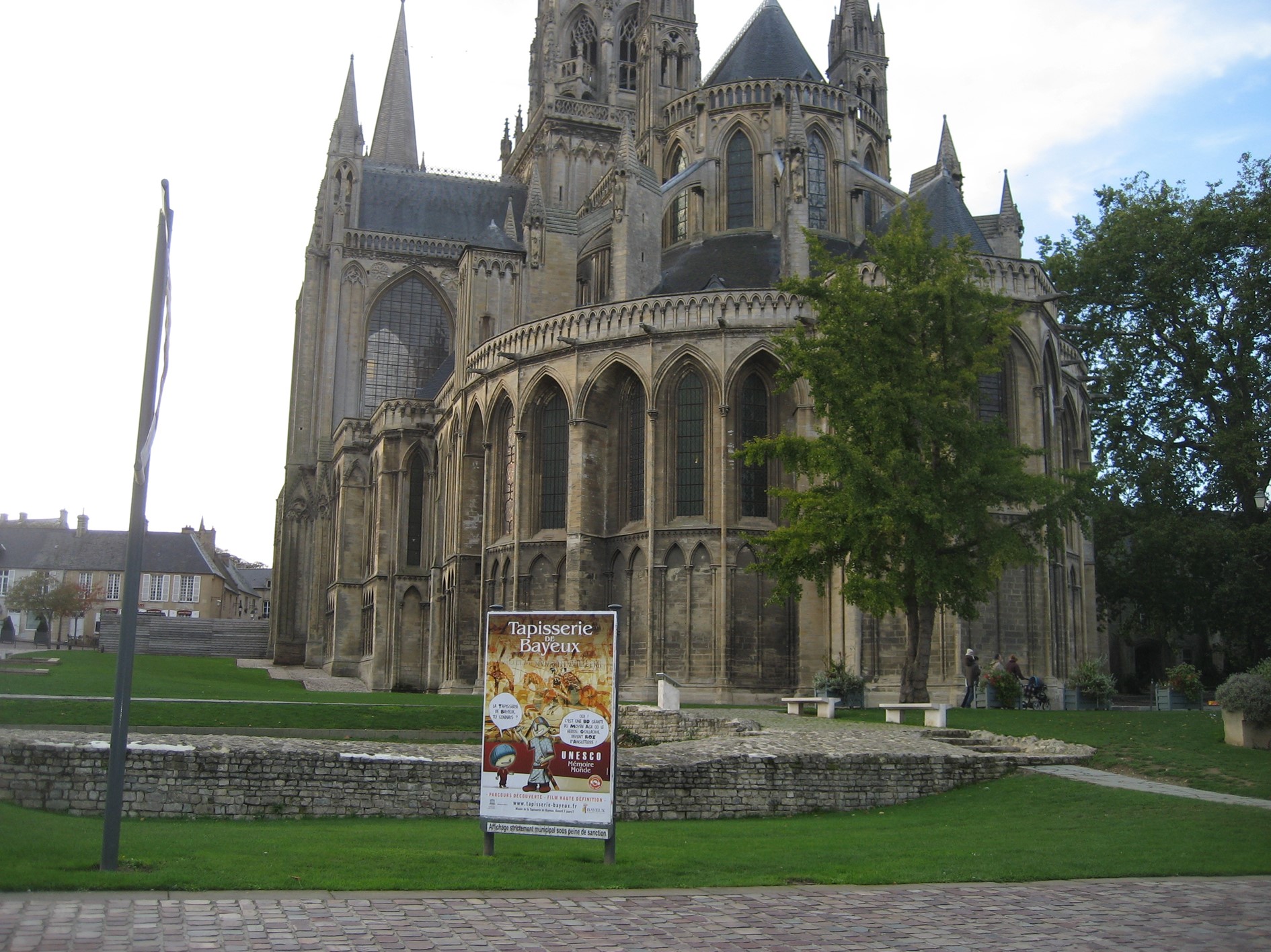
We stayed at the hotel Le Bayeux. Even with no reservation, they gave us a very nice room on the first floor and provided a breakfast the next morning.
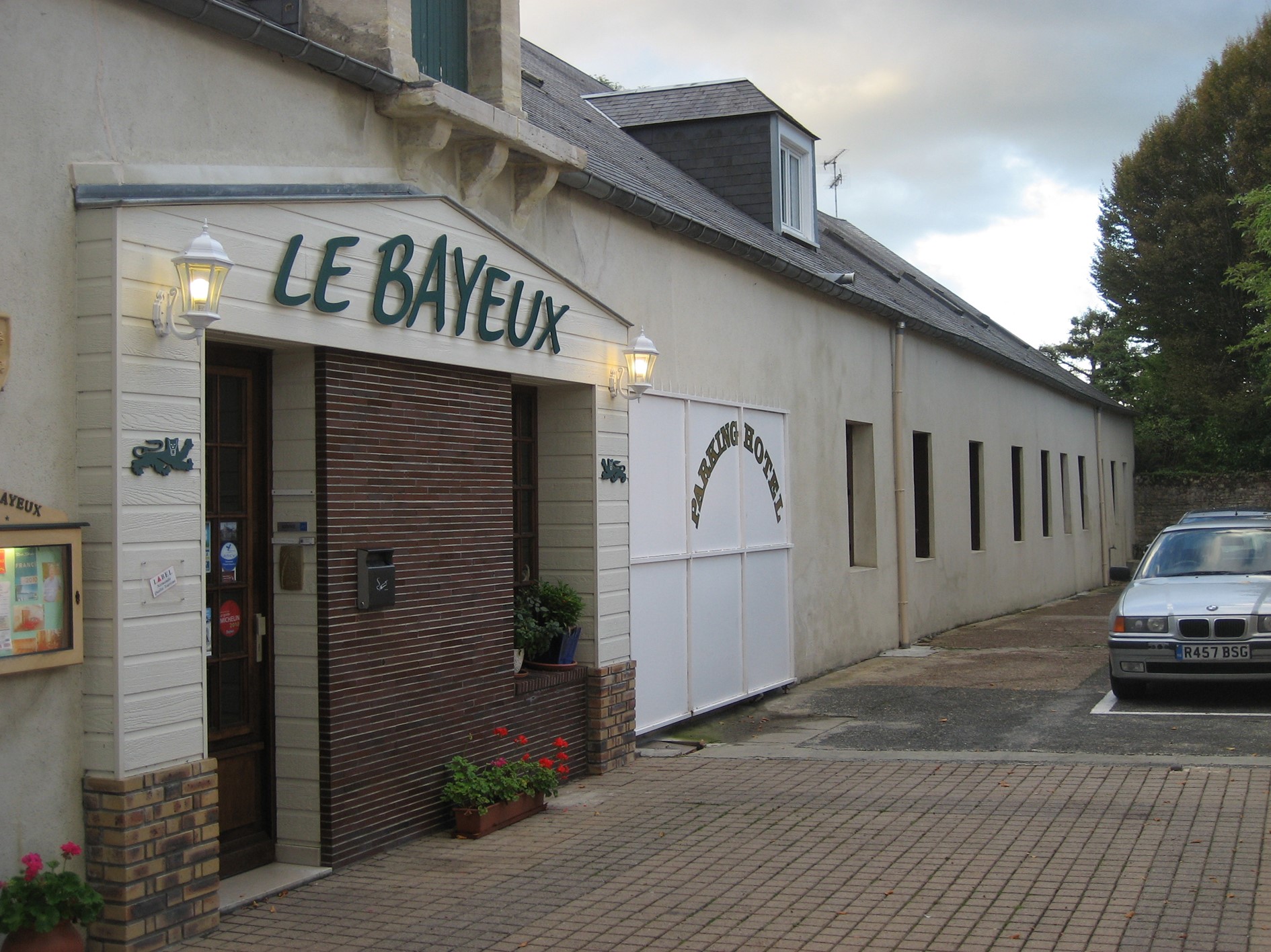
Dinner that evening was at L’Assiett Normand which was recommended by the Rick Steves’ book.
Wednesday – Bayeux
The primary thing to see in Bayeux is the Bayeux Tapestry. This is a 70-yard long hand-embroidered linen cloth depicting the war between William (the bastard) the Conqueror and Harold at the Battle of Hastings in 1066. After winning this battle, William was renamed ‘the conqueror’ and became the King of England.
In the courtyard is a full-sized replica of one of the boats used by William to cross the Channel.
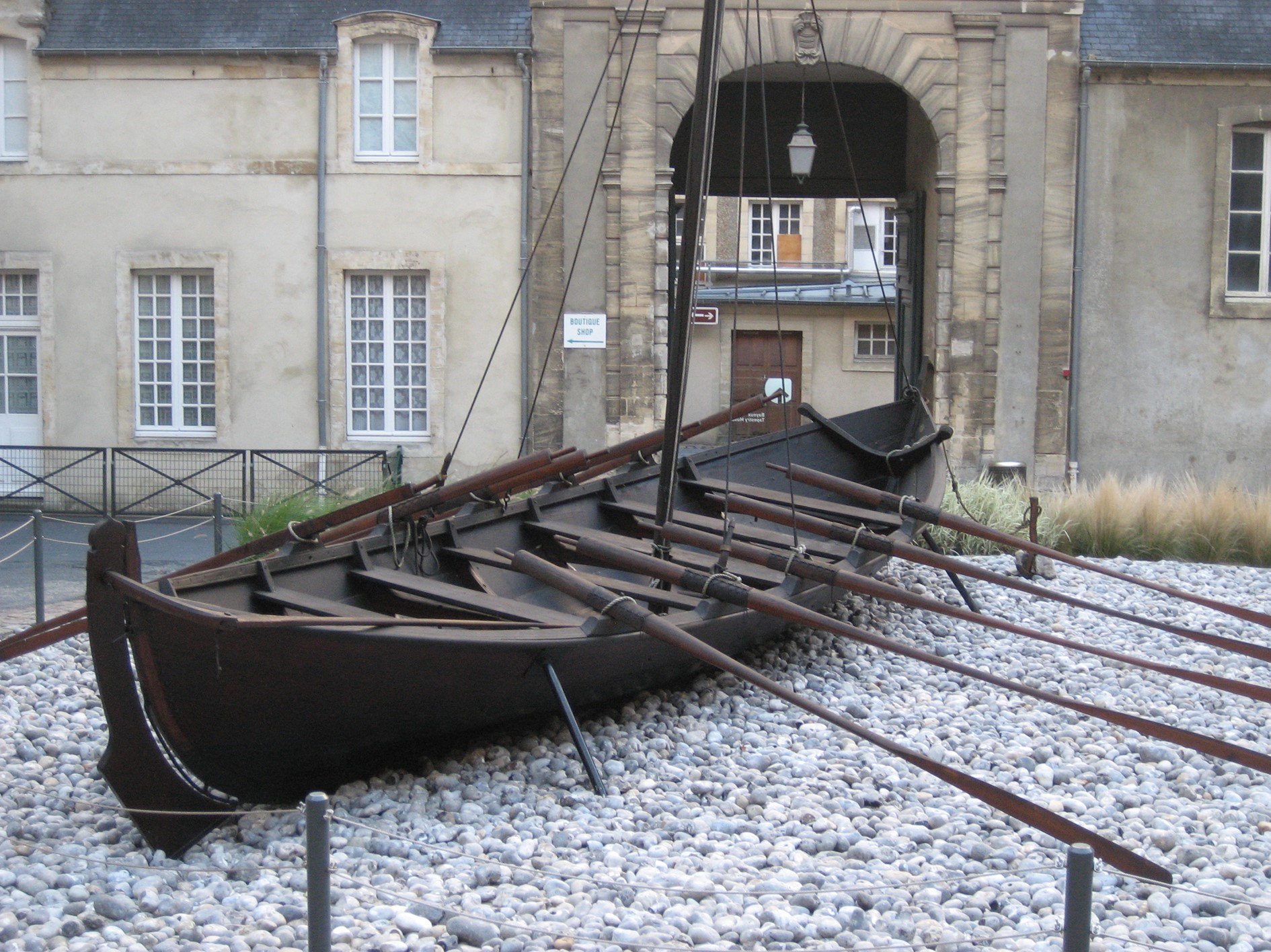
The museum does not allow photographs of the tapestry because it is sensitive to light. Trust me, it is very impressive.
After viewing the tapestry, we checked out, loaded our car and headed toward the Normandy beaches and Point du Hoc.
Point du Hoc
Our arrival in Pointe du Hoc was heralded by a statue symbolizing the cooperation among all of the Allied Countries to defeat Nazi Germany.
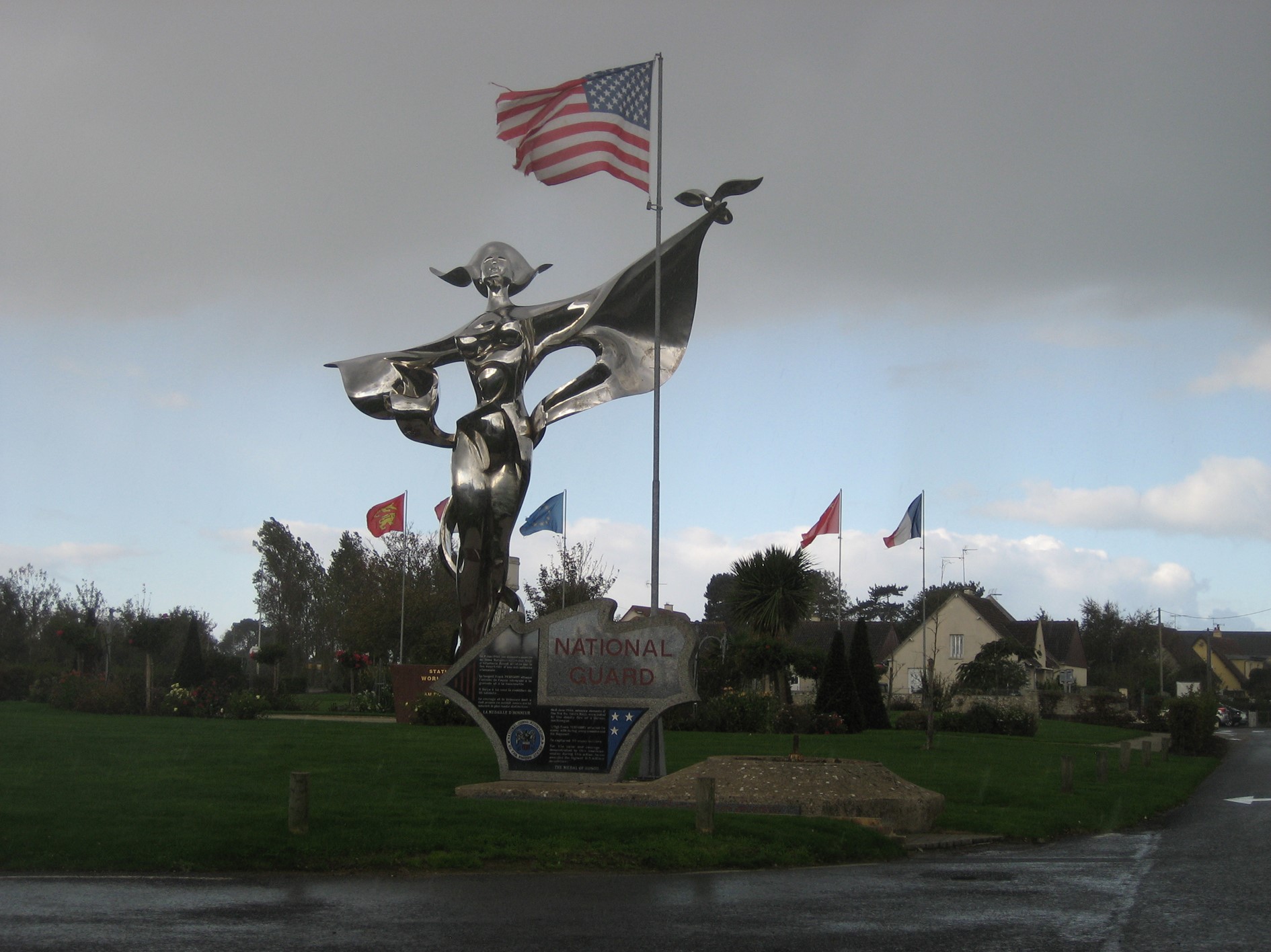
The Ranger Memorial lays out the situation. Pointe du Hoc was a well-armed position at a strategic location with views of both Utah Beach and Omaha Beach.
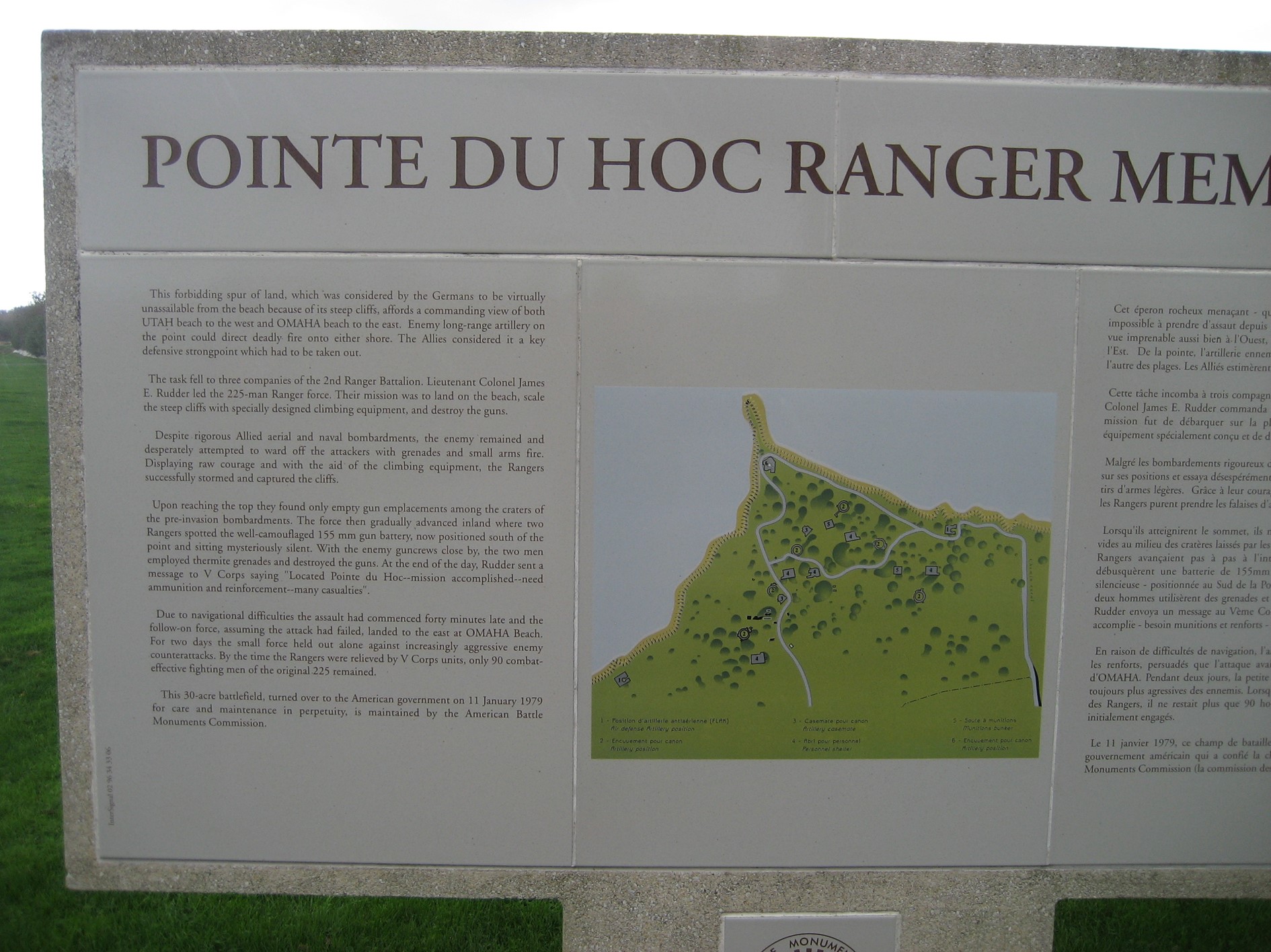
The Rangers trained for months in preparation for the assault on this position. The approach from the sea is straight up sheer cliffs.
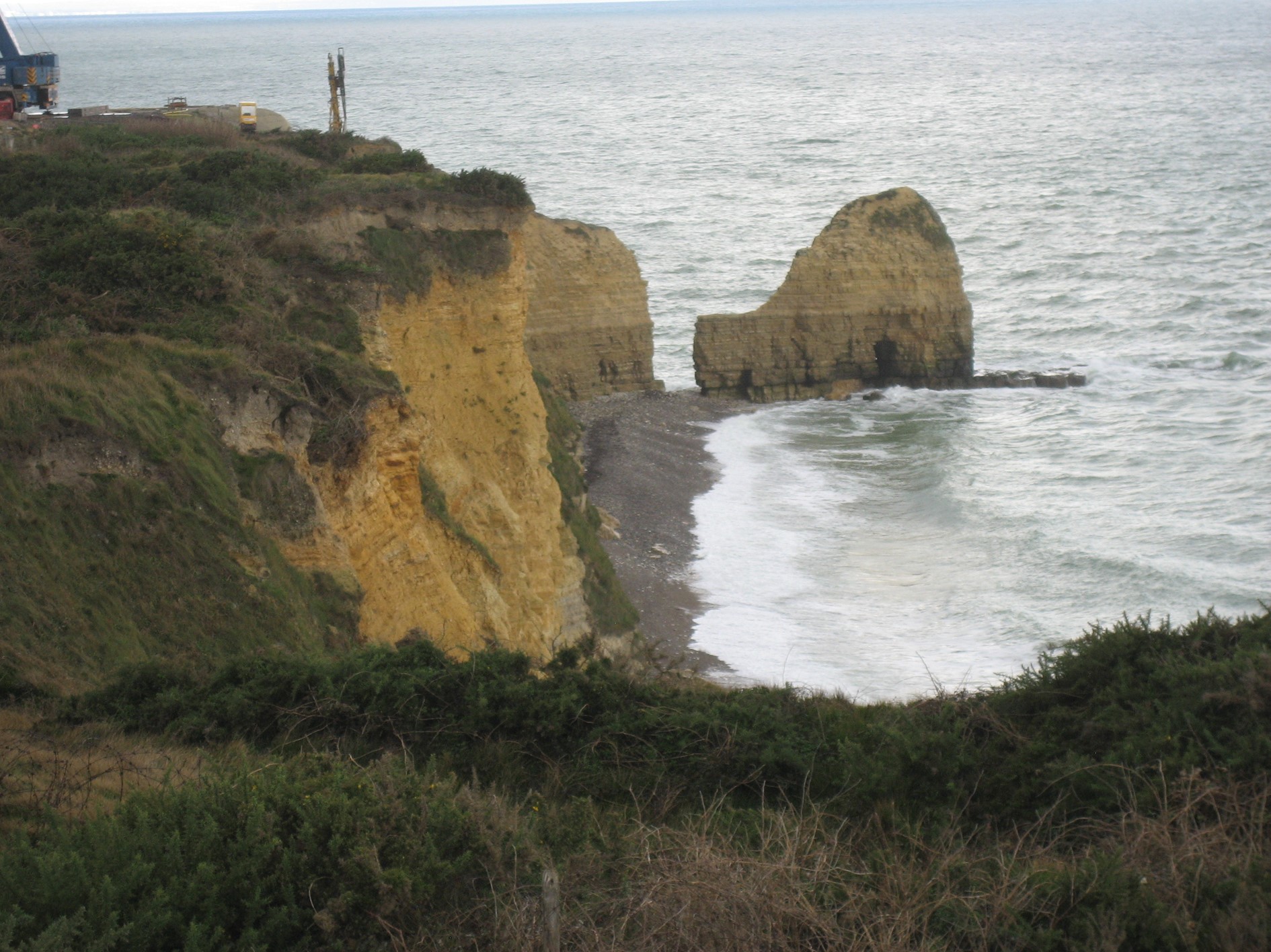
Before the Ranges assault, Navy battleships and Allied aircraft bombarded the position, attempting to take out the guns. Craters everywhere are testament to the huge shelling this place took.
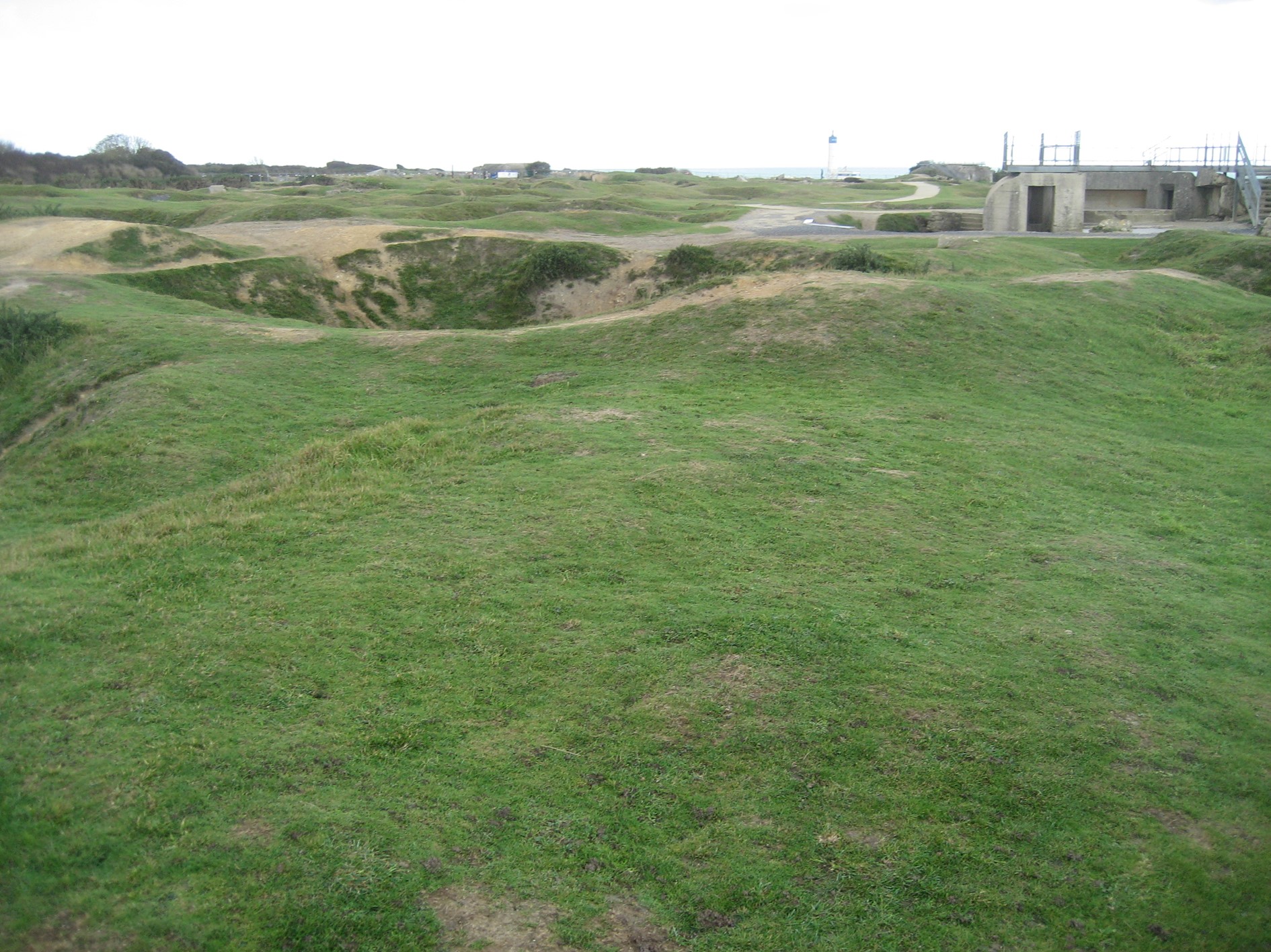
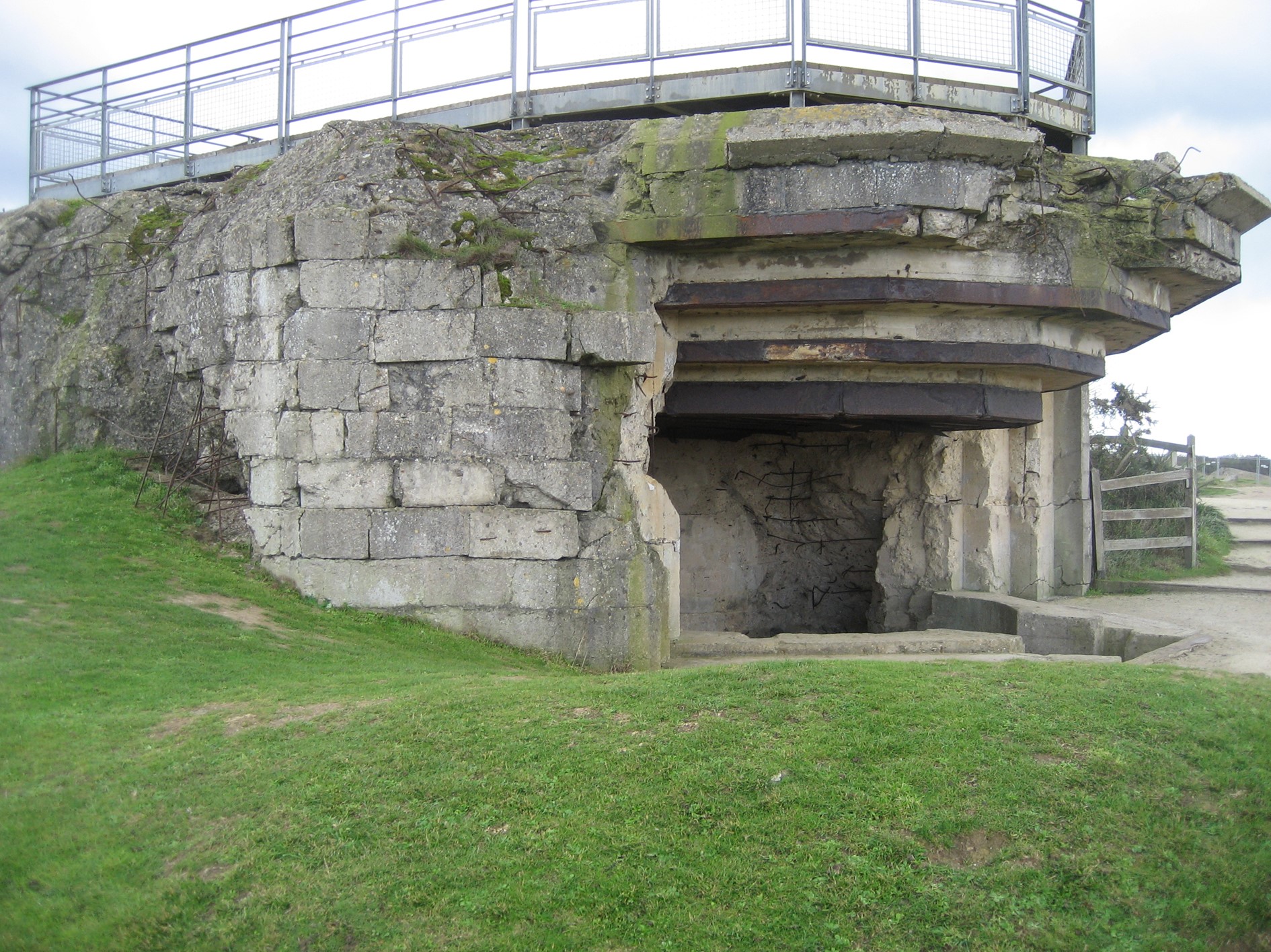
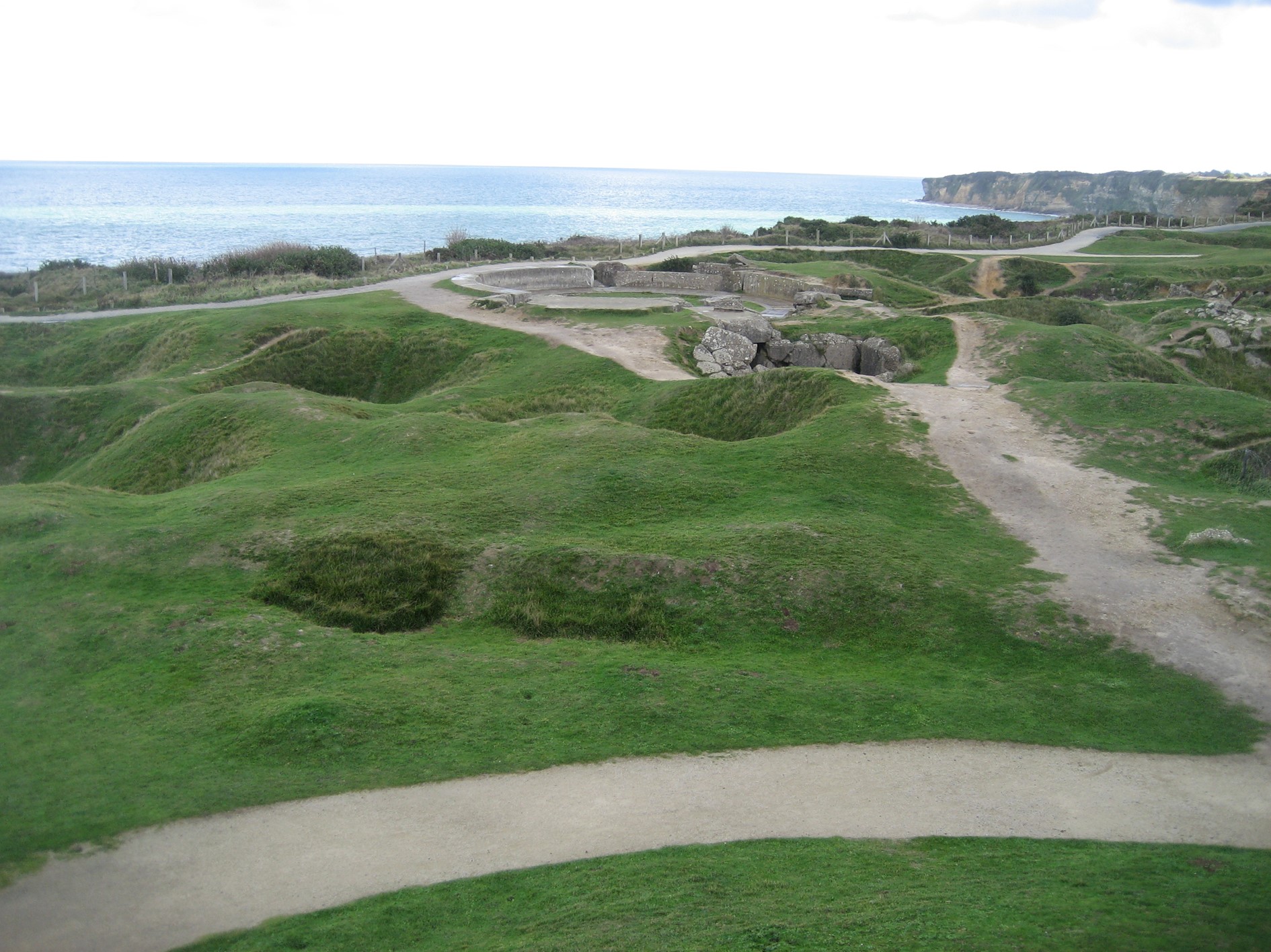
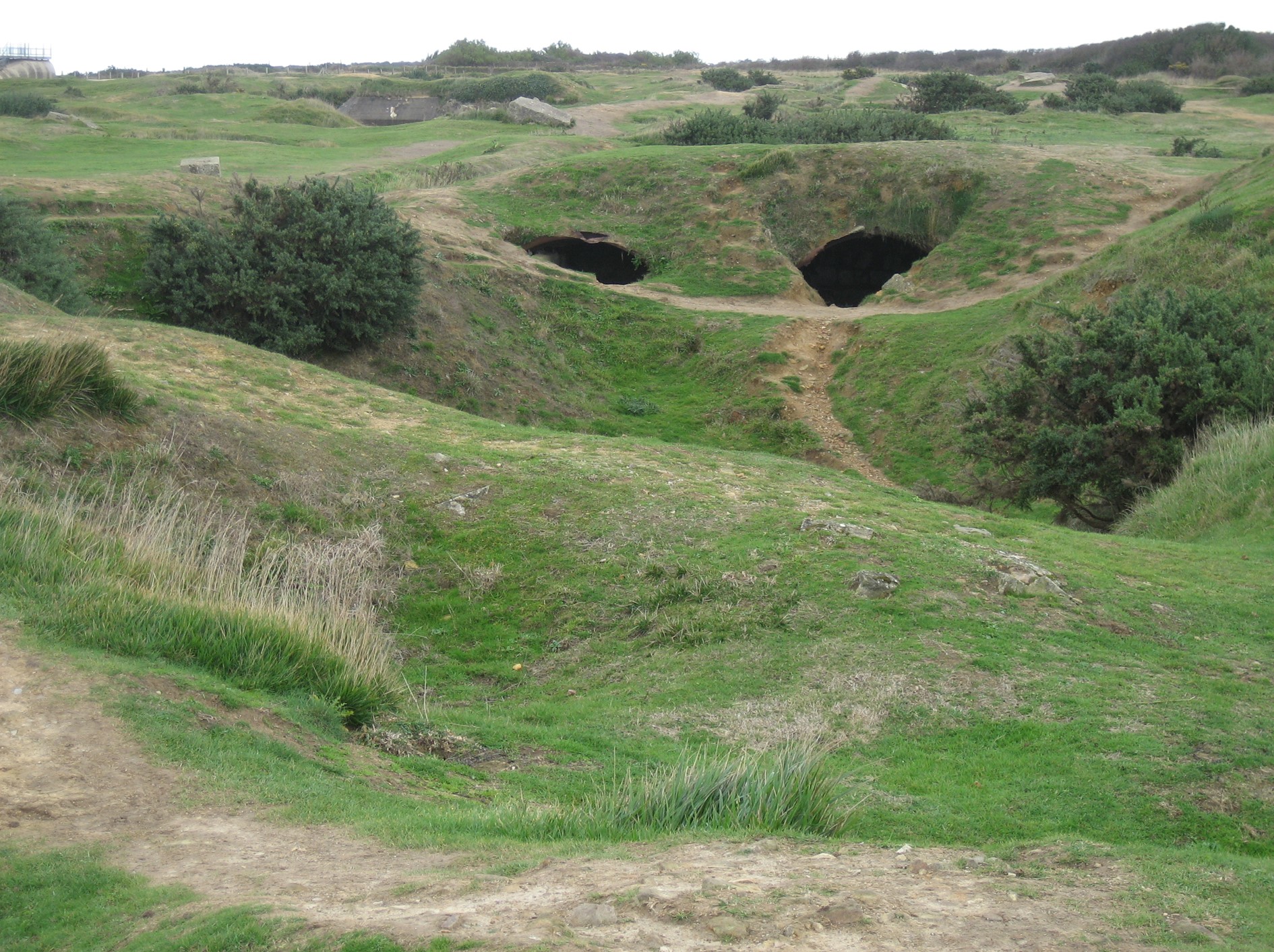
According to the literature, of the 225 Rangers that began the mission, only 90 survived the assault and when they successfully took the position, they found that the Germans had already removed all but one of the cannon and replaced them with telephone poles.
After Pointe du Hoc, we drove for about 15 minutes to Omaha Beach, scene of one of the largest military assaults in history.
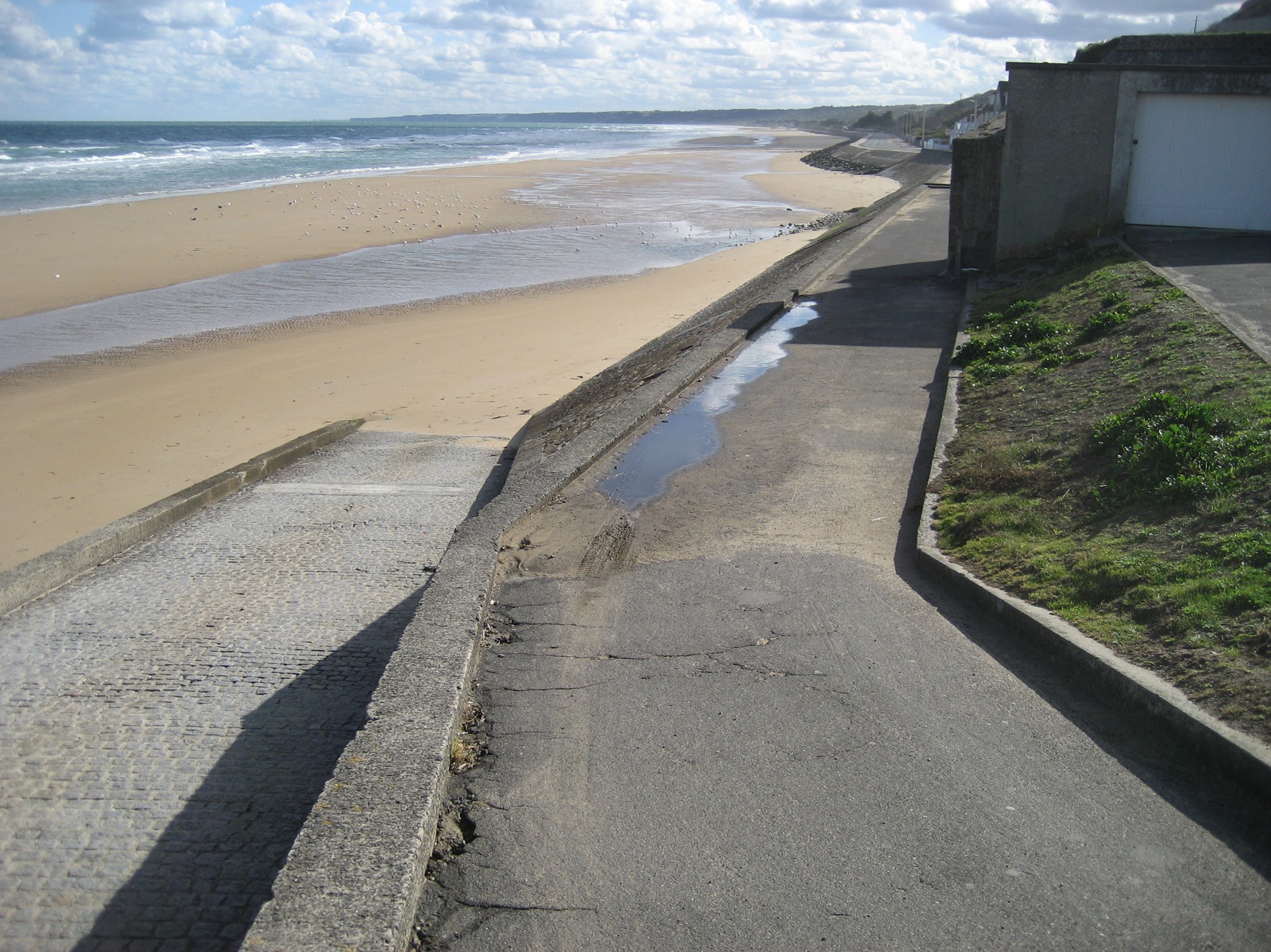
Omaha Beach
The beach at Omaha Beach sector was about 7,000 yards long with a gentle slope that forms a crescent with bluffs located at each end. The tidal range averaged about 300 yards between the low and high water mark. At the high water mark, the ocean ends at a shingle that reaches up to several feet high.
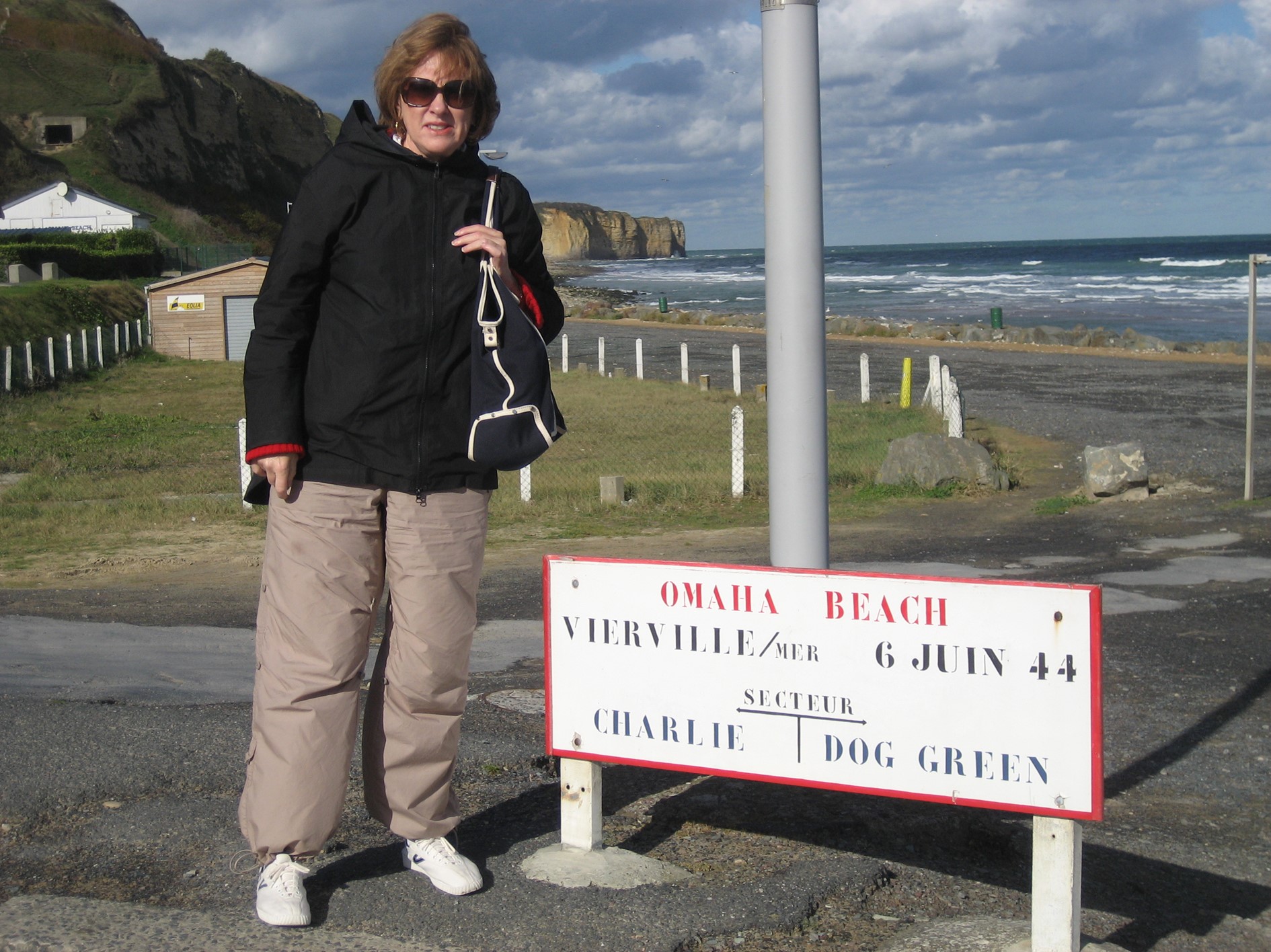
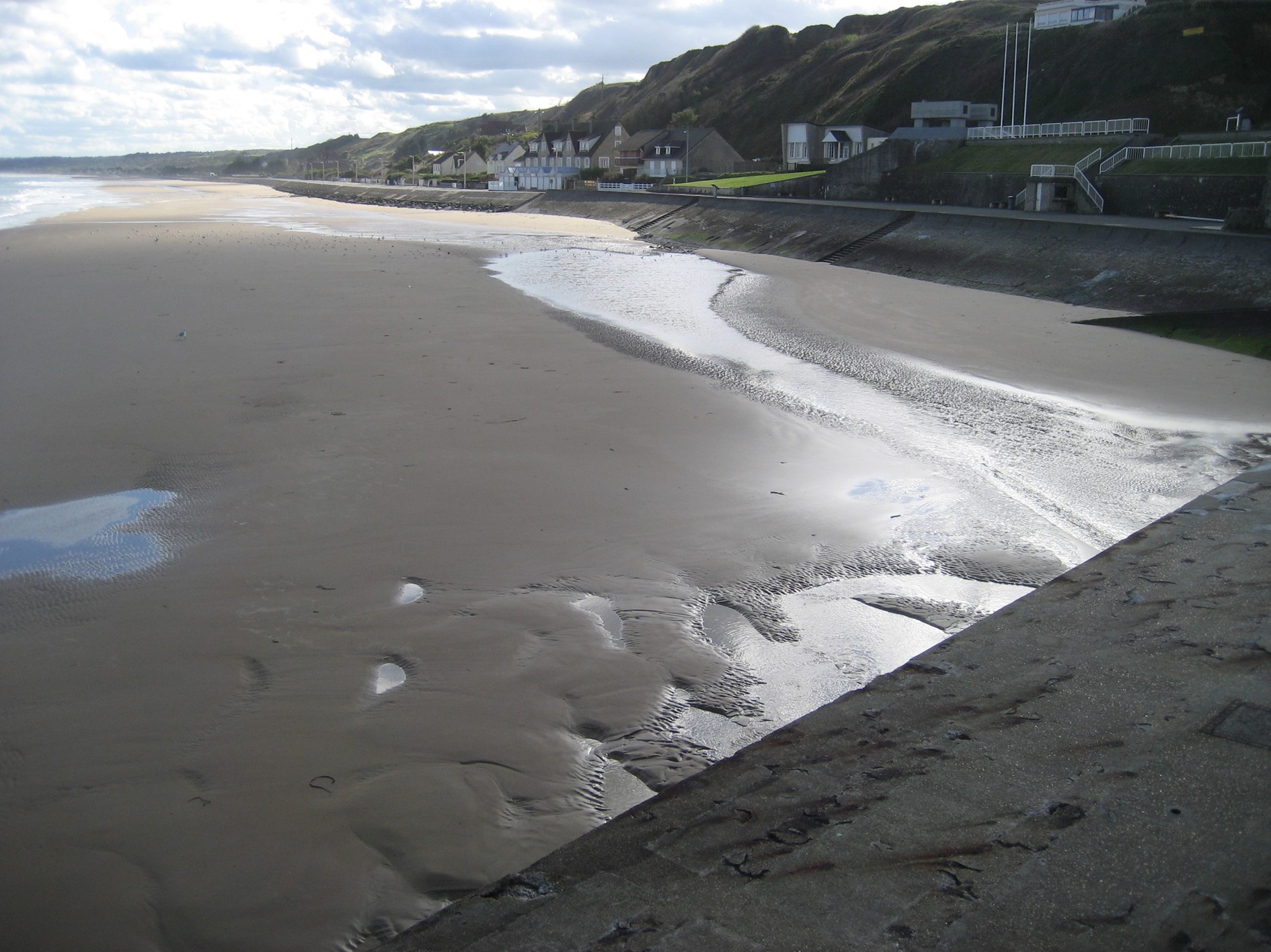
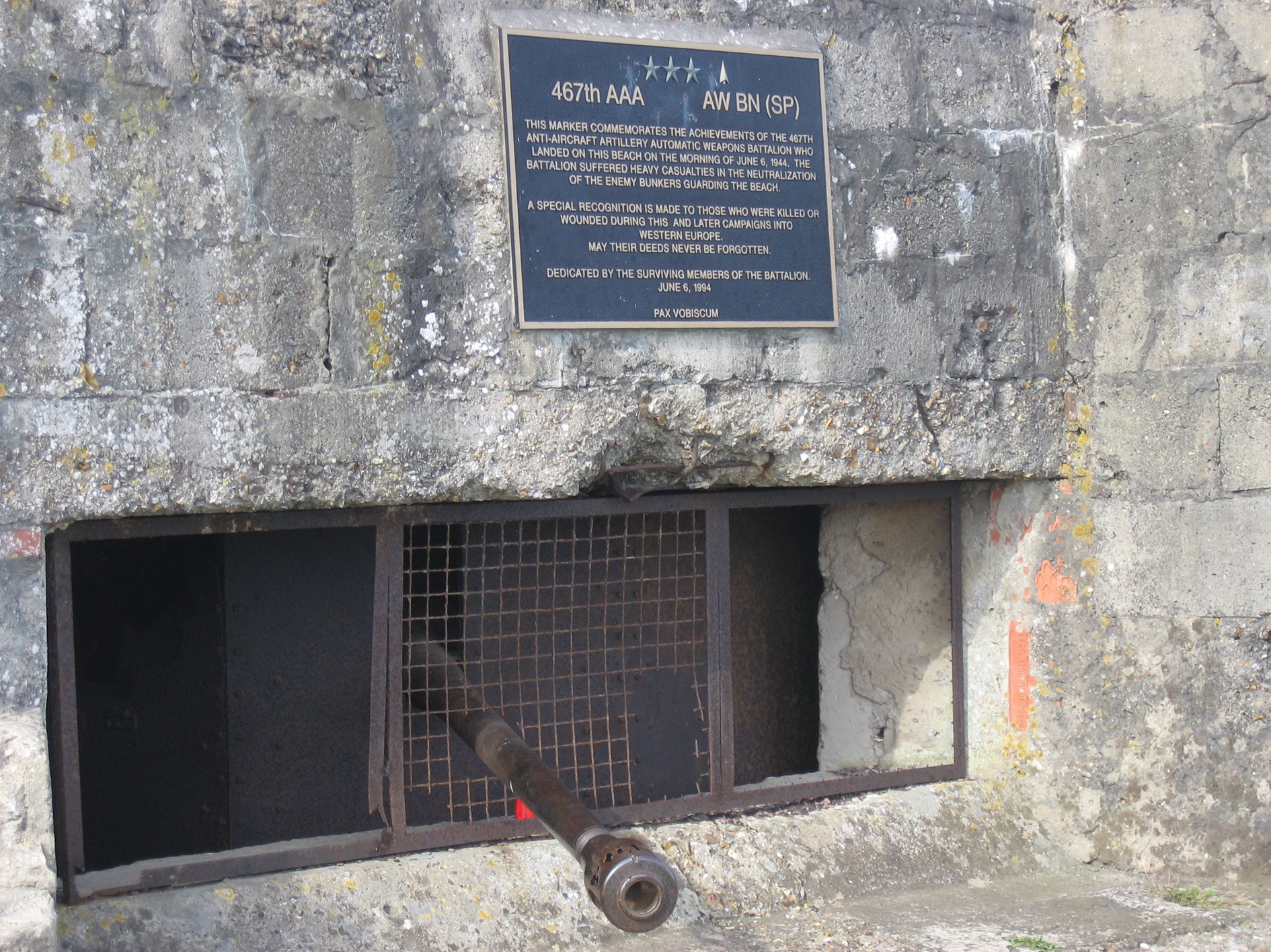
From Omaha Beach, we drove another 15 minutes to the D-Day United States cemetery. The French gave this property to the United States to bury its dead and to create a memorial to the soldiers who gave their lives to free France from tyranny.
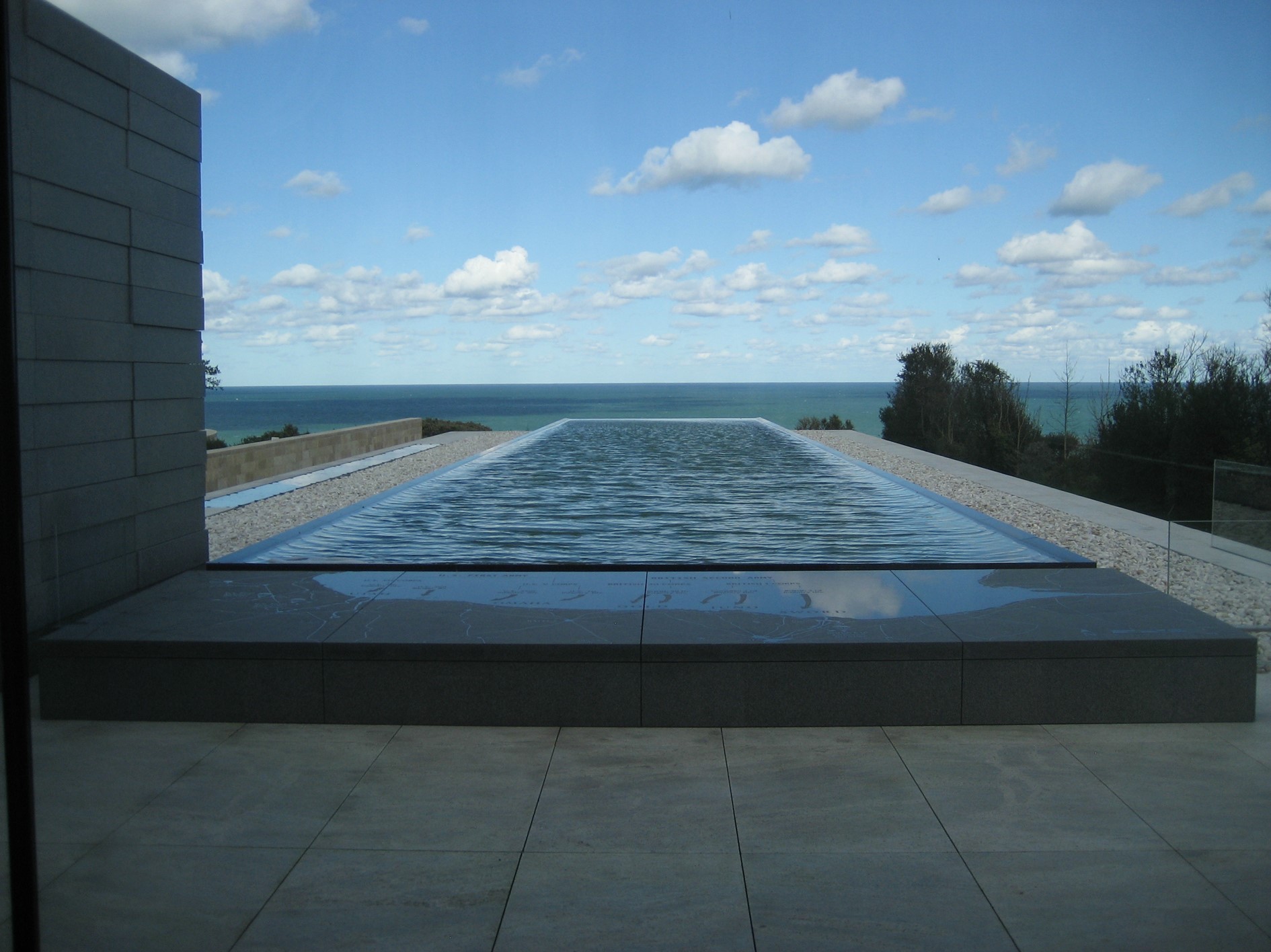
Some 9,000 Americans are buried in these graves.
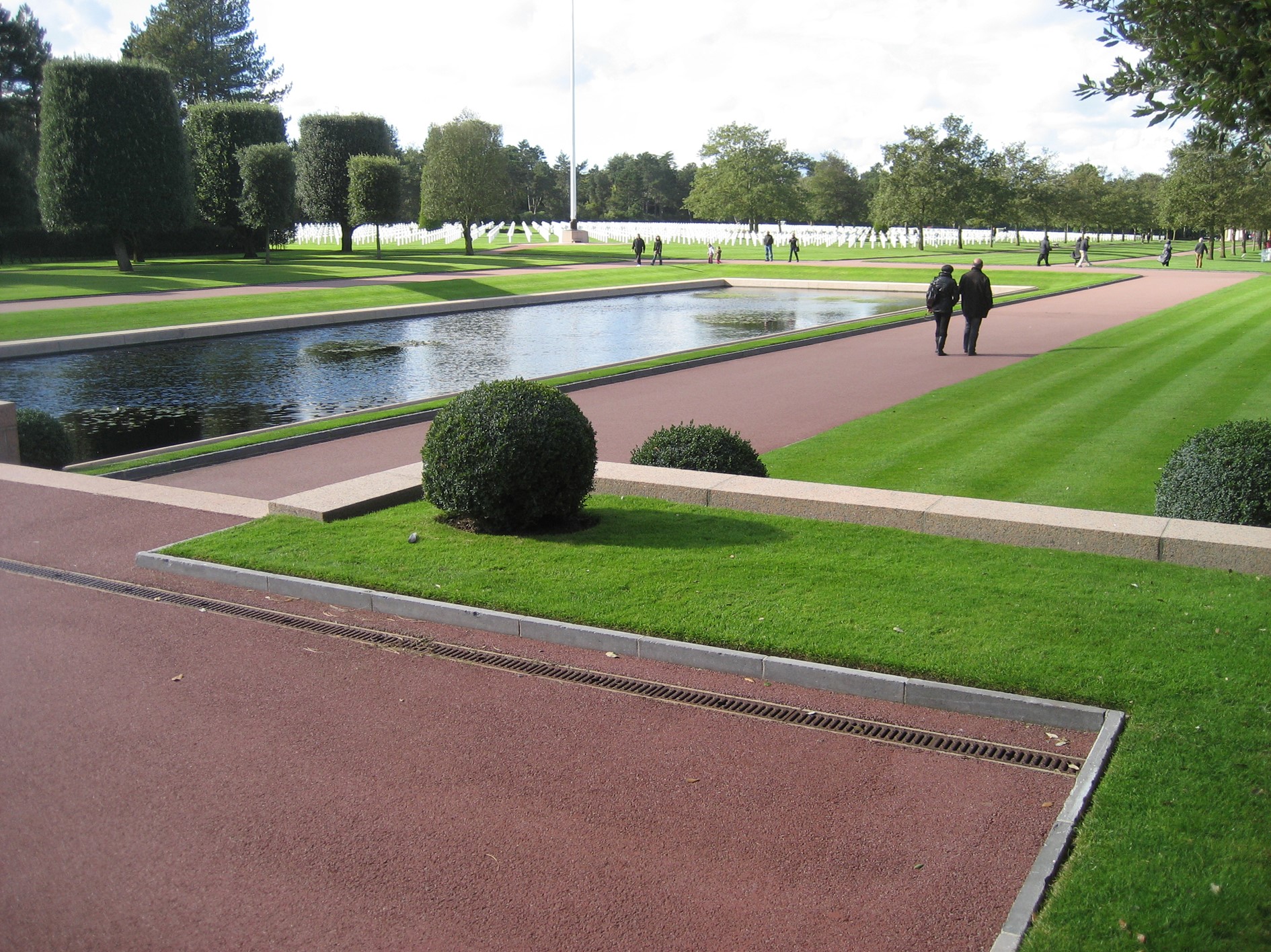
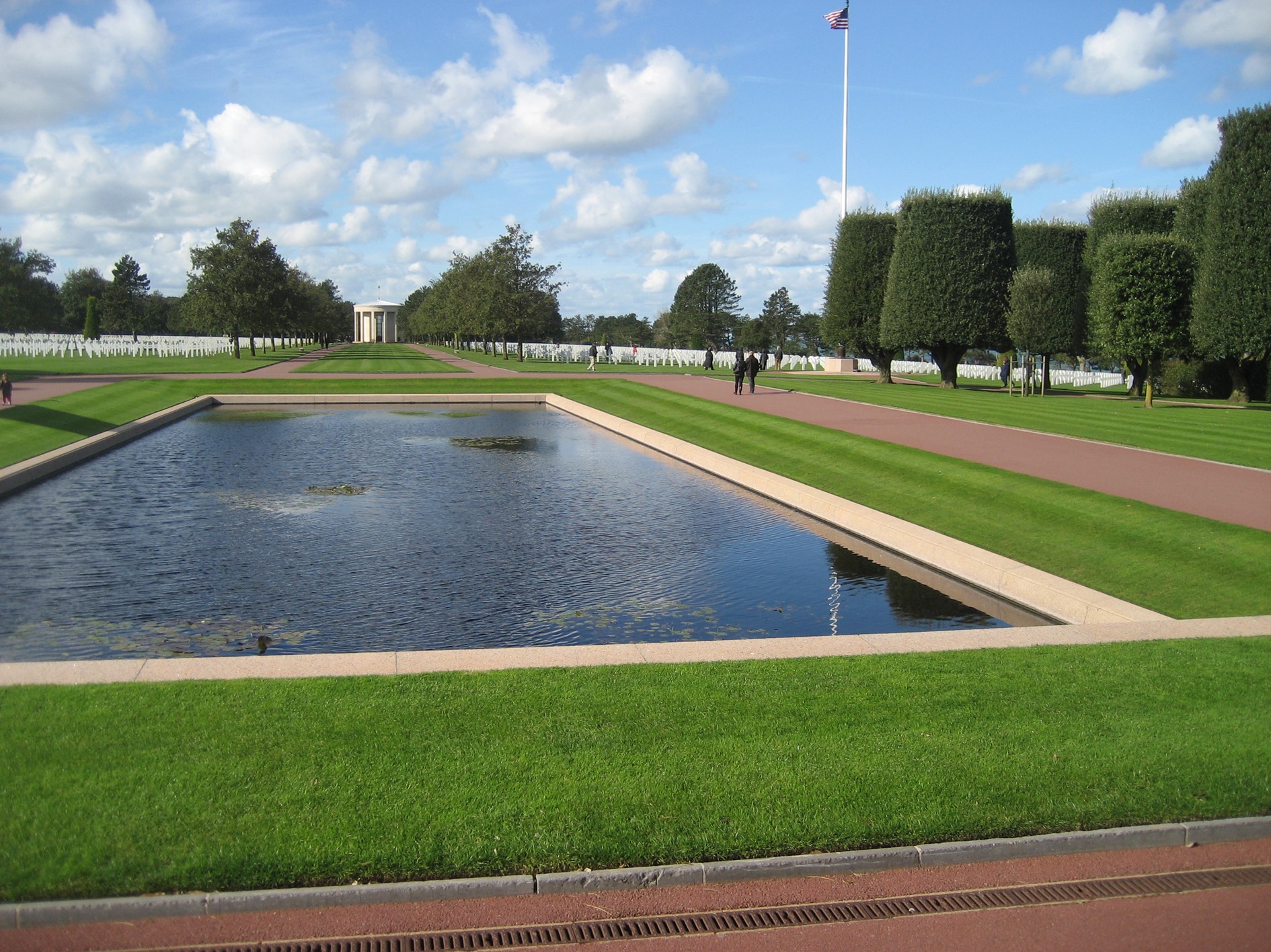
Arromanches
We then drove to Arromanches which was the site of the British landing in Normandy. This is where Winston Churchill and the British intentionally sunk hundreds of ships to create a synthetic harbor for use in landing all of the vehicles and supplies necessary to prosecute the war. The harbor was nicknamed Port Winston.
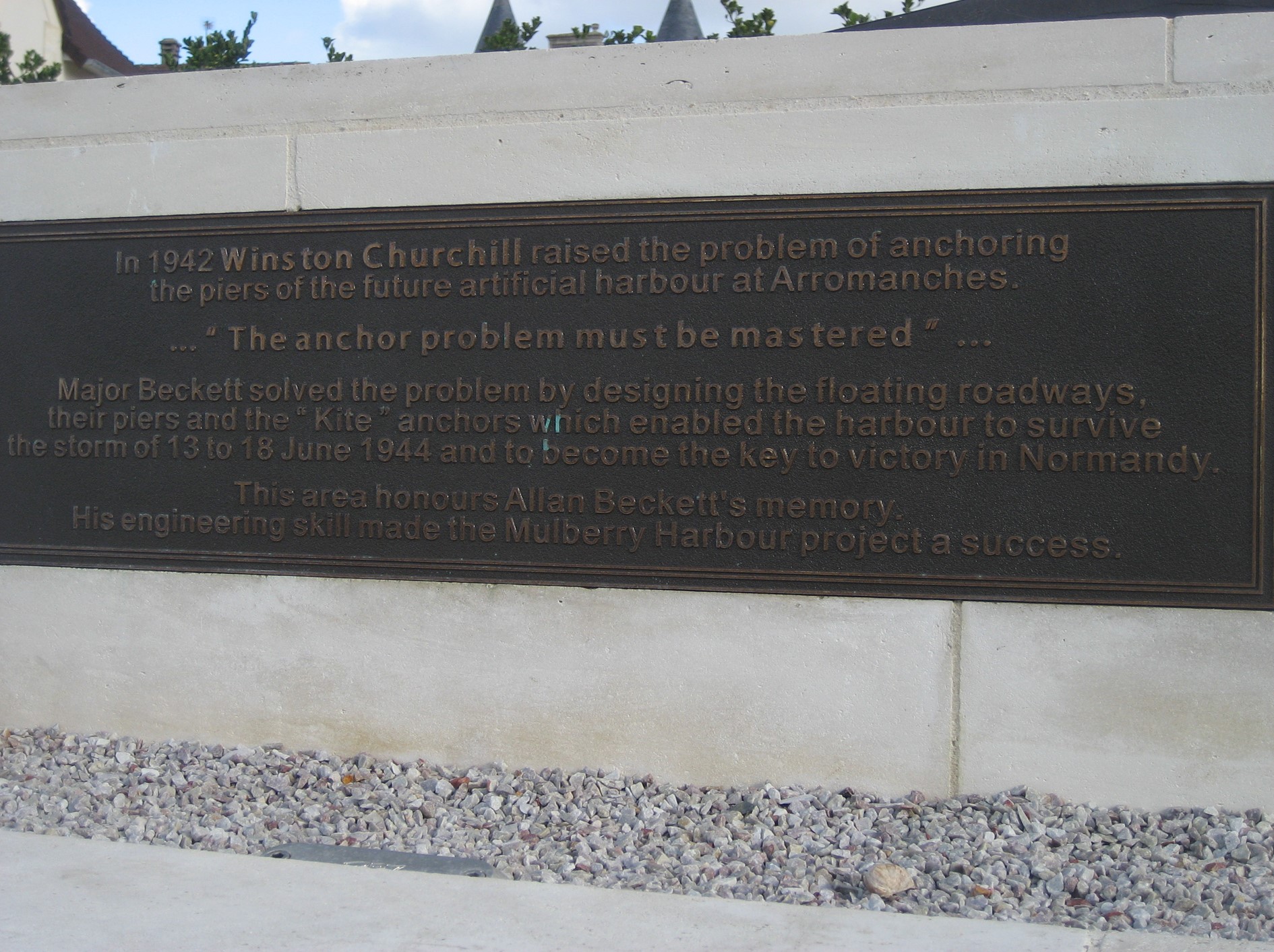
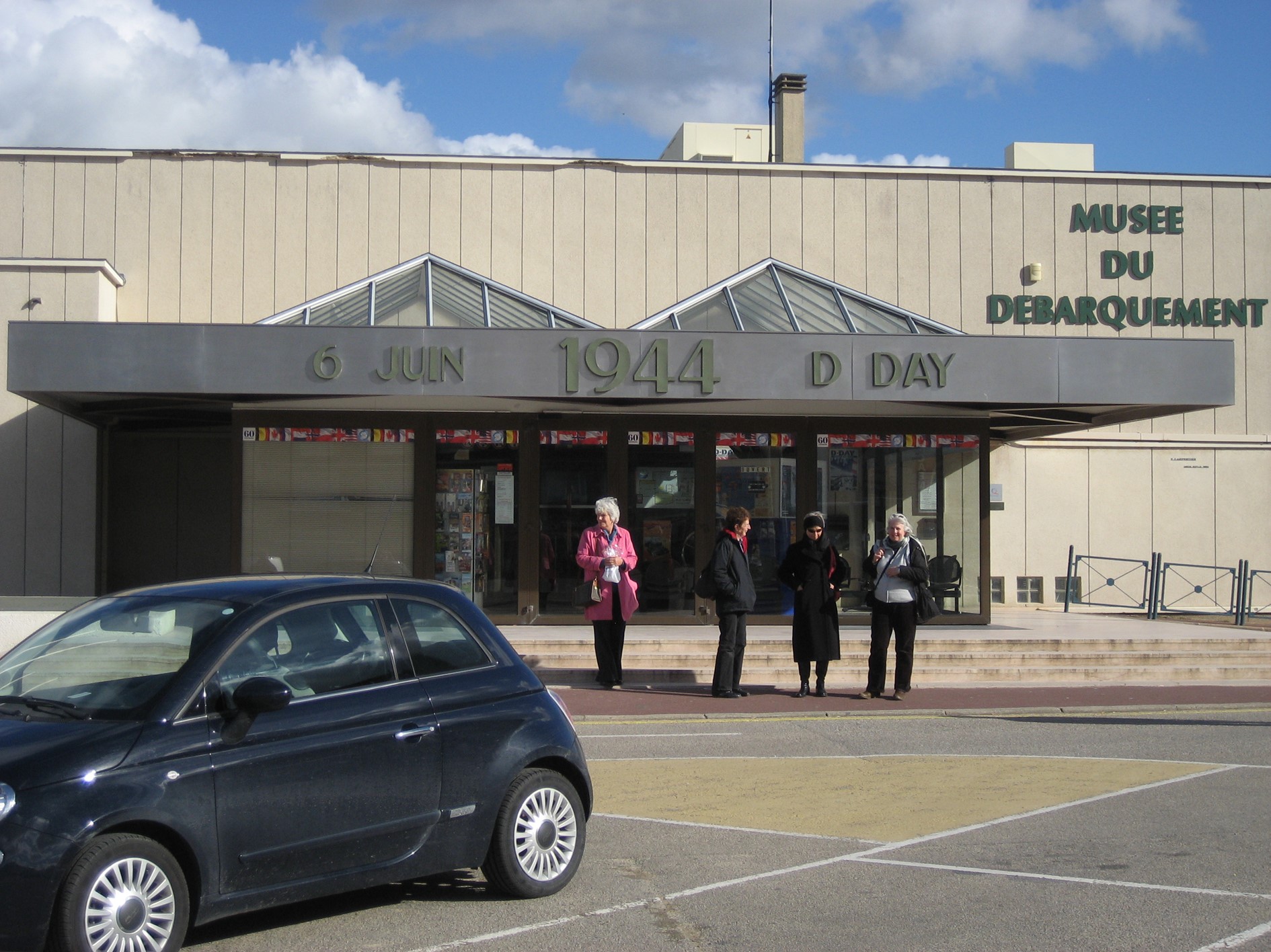
Out from the beach one can still see the hulks of ships that were sunk to create the harbor. We were told that it is possible to see the remains of an anti-aircraft gun on one of the ships.
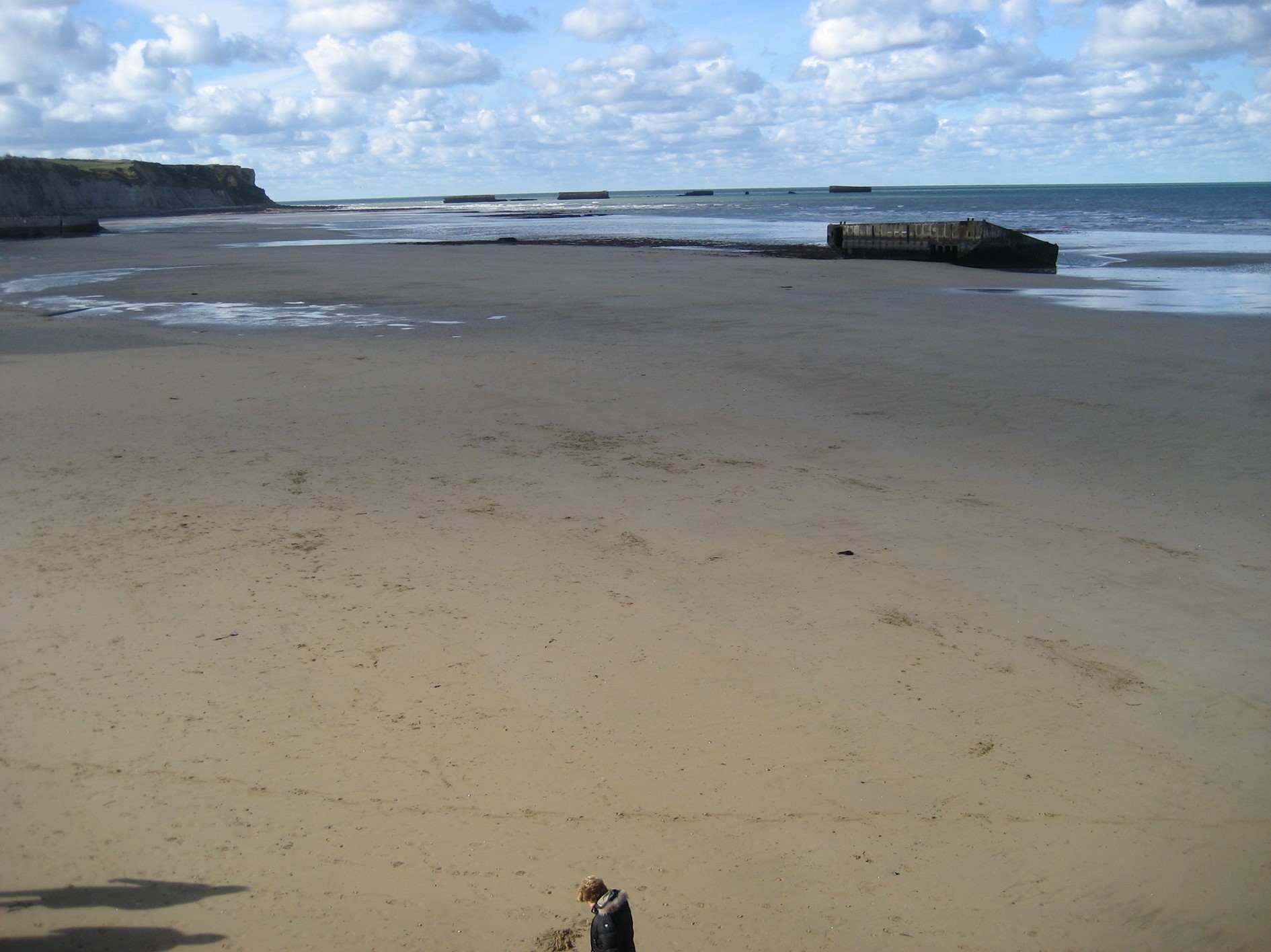
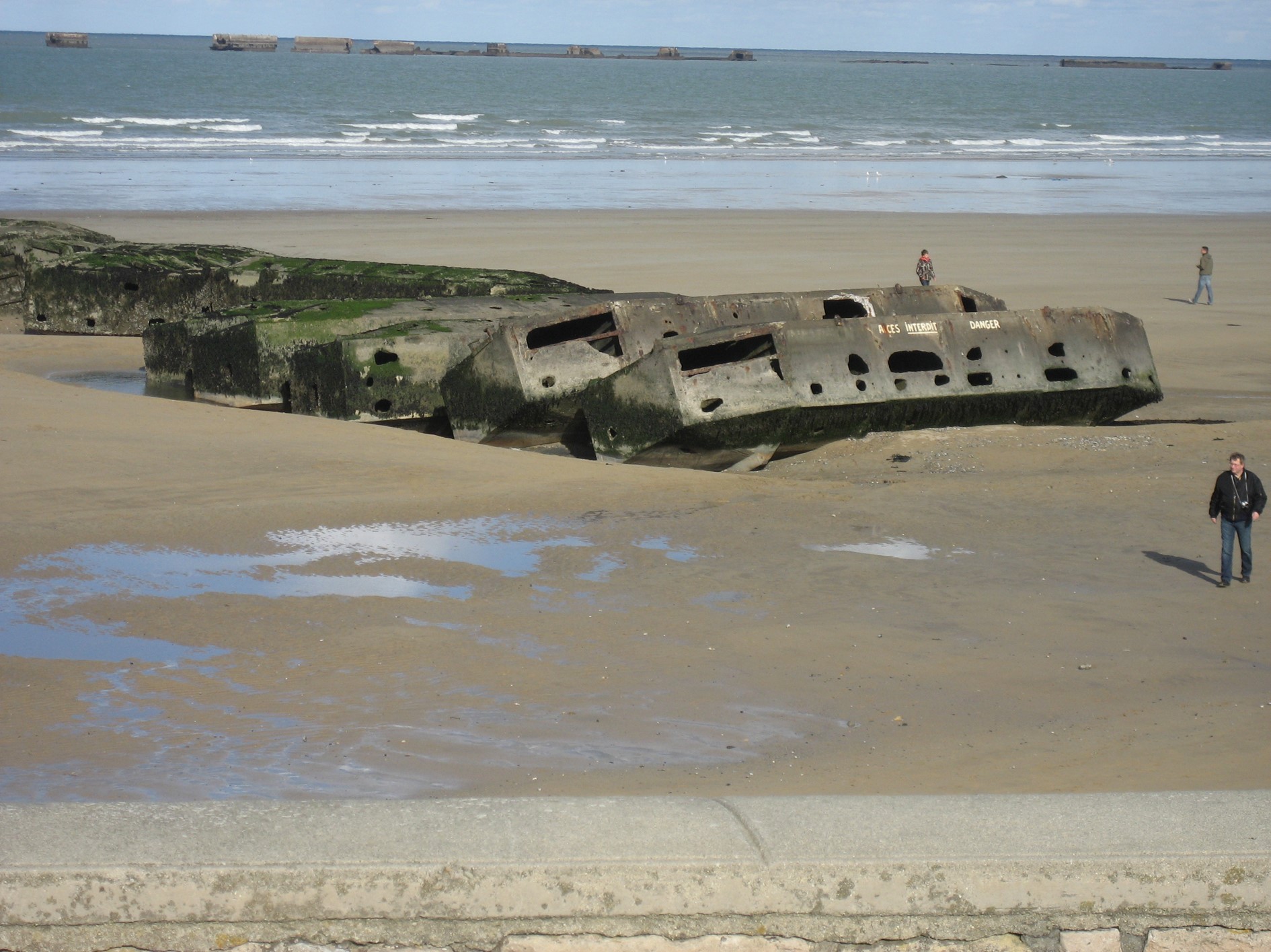
Below is a restored anti-aircraft gun is on display at the museum.
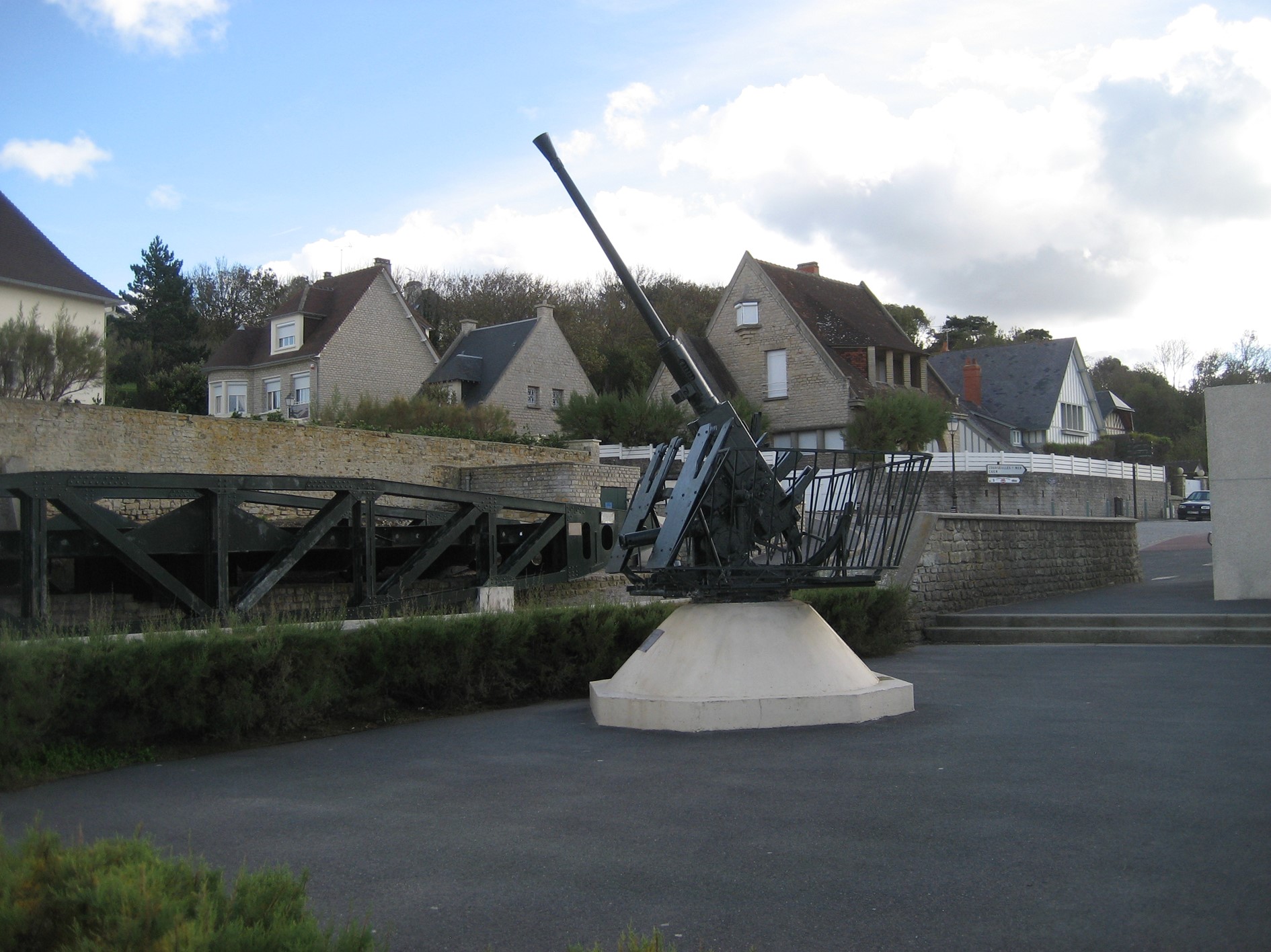
Below is a restored section of a bridge span used to create the synthetic harbor.
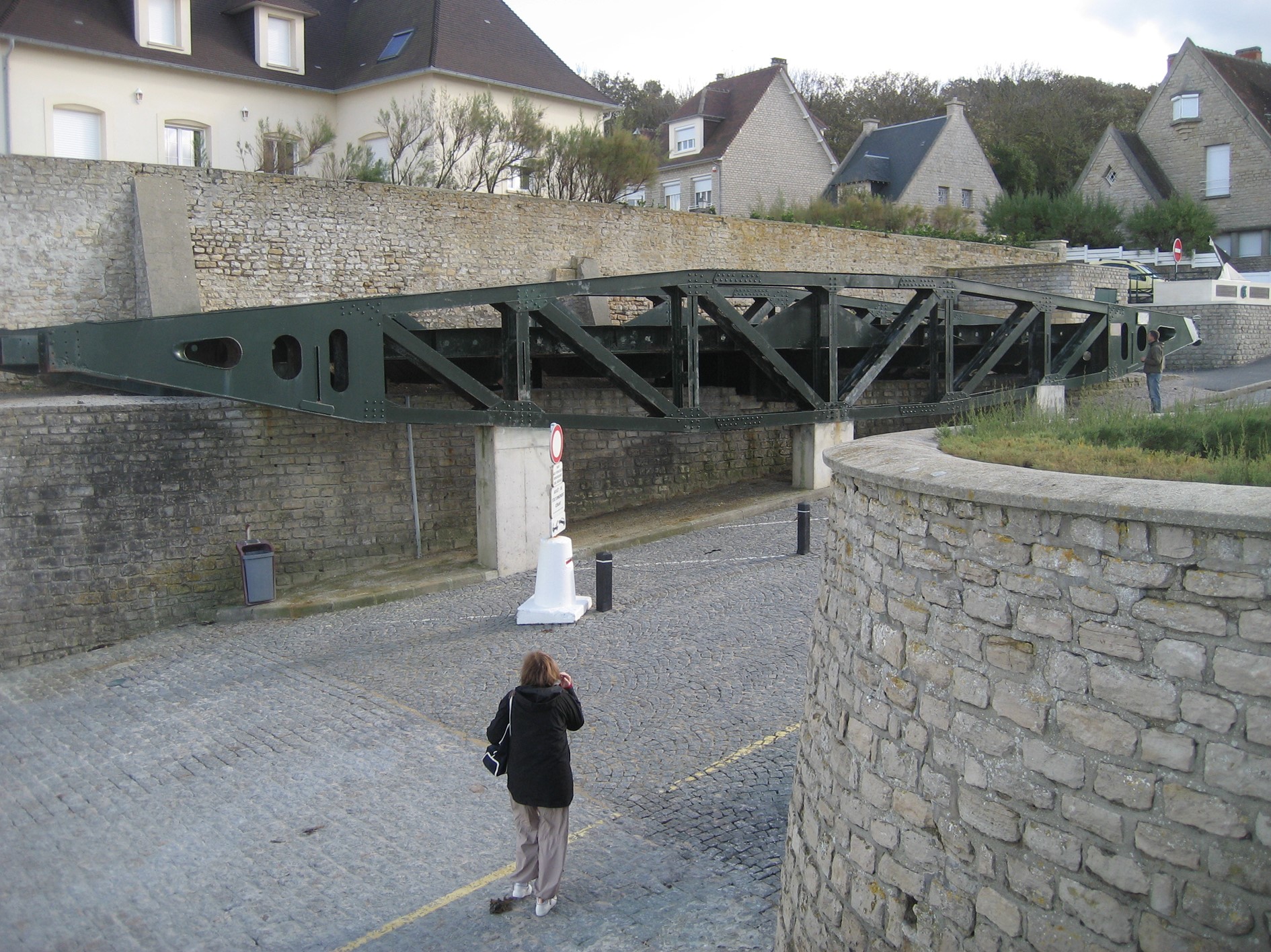
A little further up the beach, we found the remains of an old German pillbox that defended the beaches.
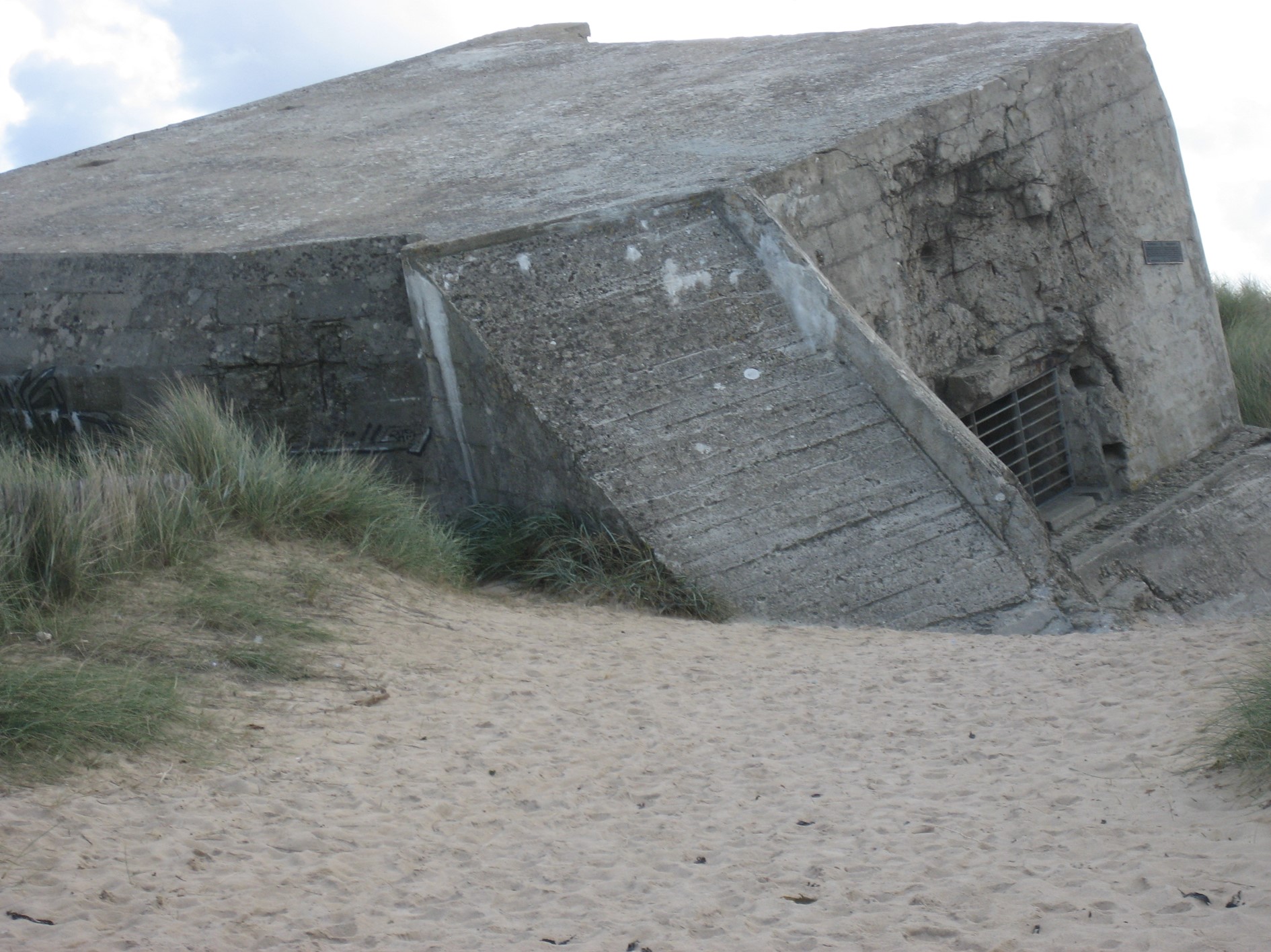
This ended our tour of the beaches of Normandy. Our rental car was down below a half tank of gas and it was time to return it to Hertz.
This was a tumultuous week in France with the strikers shutting down the petroleum refineries, garbage collection and airports. We were not concerned about running out of gas, but we were concerned about the cost of returning the car on empty and having Hertz charge us for the fuel.
Fortunately, we got lucky. On the highway on the way back to Rouen we spotted a gas station with only a few cars in the queue. We pulled in behind 2 other cars and it was quickly our turn. By the time we filled up, there were over 30 cars in line for gas. As I said, we got lucky.
During the drive back to Rouen, we decided to turn in the car and catch a train back to Paris rather than search for a hotel without a reservation.
When we got to the train station, we found that a) the Hertz office was closed and b) the train schedule had been completely disrupted by the strike. However, there was a train for Paris leaving in about 1 1/2 hours.
We utilized the Hertz drop box to turn in our keys and went across the street to have some wine and food while waiting for the train.
The trip back to Paris was uneventful and it was great to be back in the apartment for a comfortable night’s sleep.
Thursday – Paris
We returned to our favorite shop for breakfast. They had wonderful breads, good coffee and scrabbled eggs.
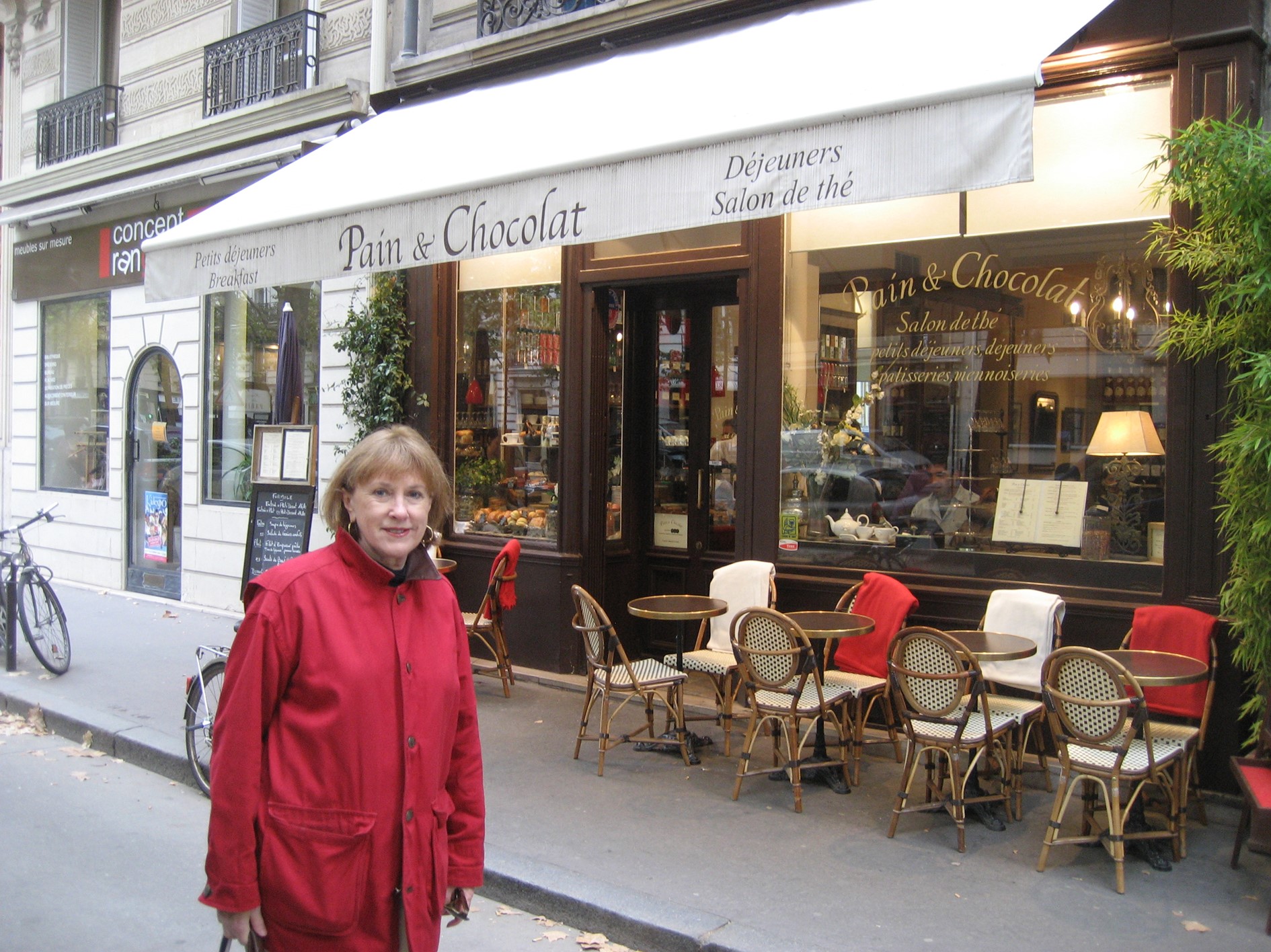
Then we started walking for the Musee d’Orsay. This museum has a most impressive collection of impressionist art. They don’t allow cameras, however.
Dinner Thursday night was at Palace Thai. This was a wonderful Thai restaurant and was probably the best food of the trip. Our waiter (who may have been the owner) was from Cambodia but had visited his relatives in Chicago on several occasions.
Friday – Paris
After another breakfast at Pain & Chocolat we set out to view more art. We had read that La Grande Palais had a special collection of Monet and we wanted to see the exhibit. Unfortunately, the lines were just too long.
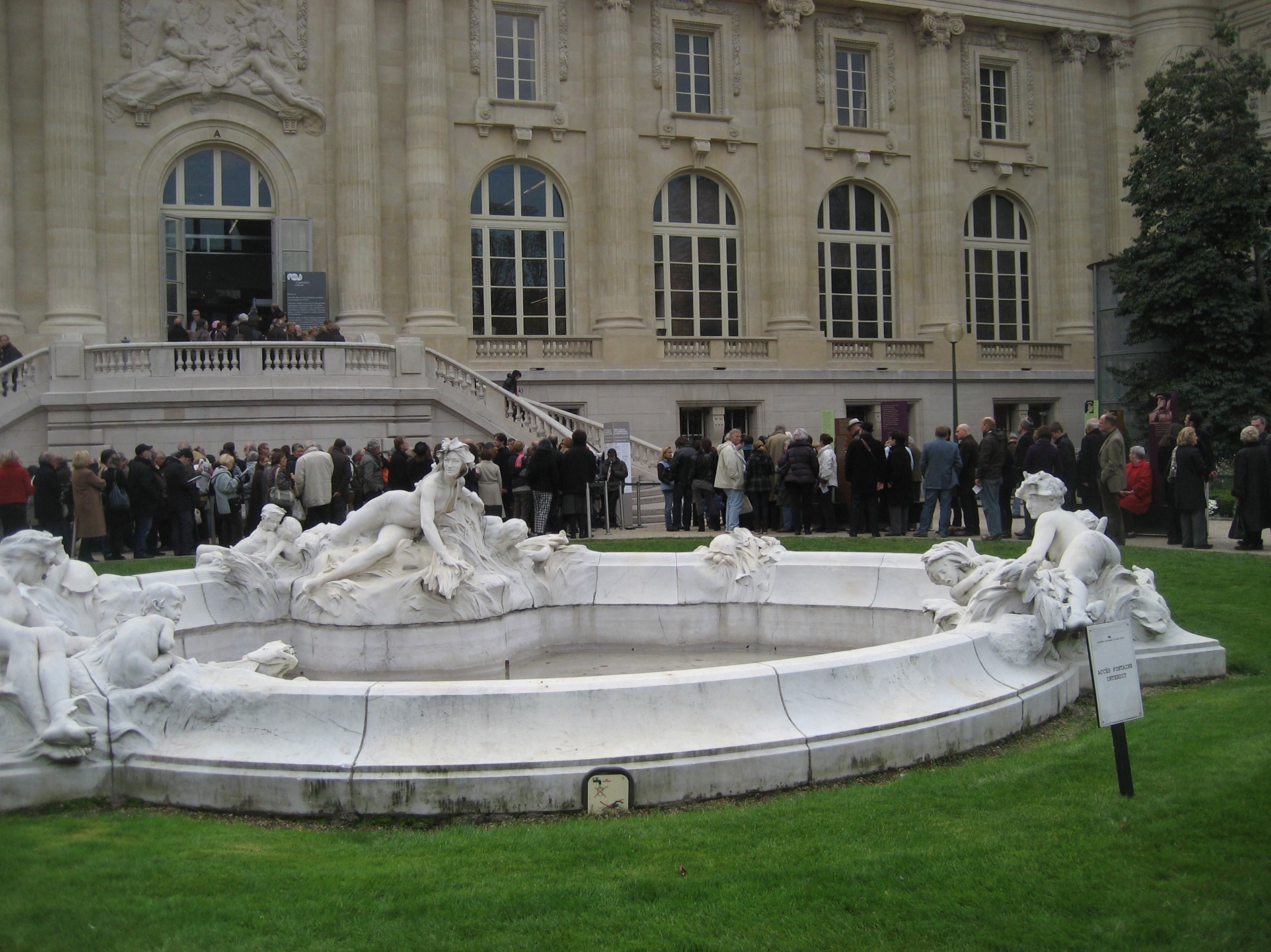
We elected to not spend our time in Paris standing in lines. The picture above was at about 1 pm. We returned 3 hours later and the situation was much worse. We had to skip the Monet exhibit.
So instead, we headed up the Champs-Élysées
to the Arc de Triomphe.
The Champs-Élysées is a very fashionable street in Paris. All of the high-end retailers have stores on this boulevard. Not necessarily in that same category, McDonald’s also has a restaurant within sight of the Arch de Triomphe.
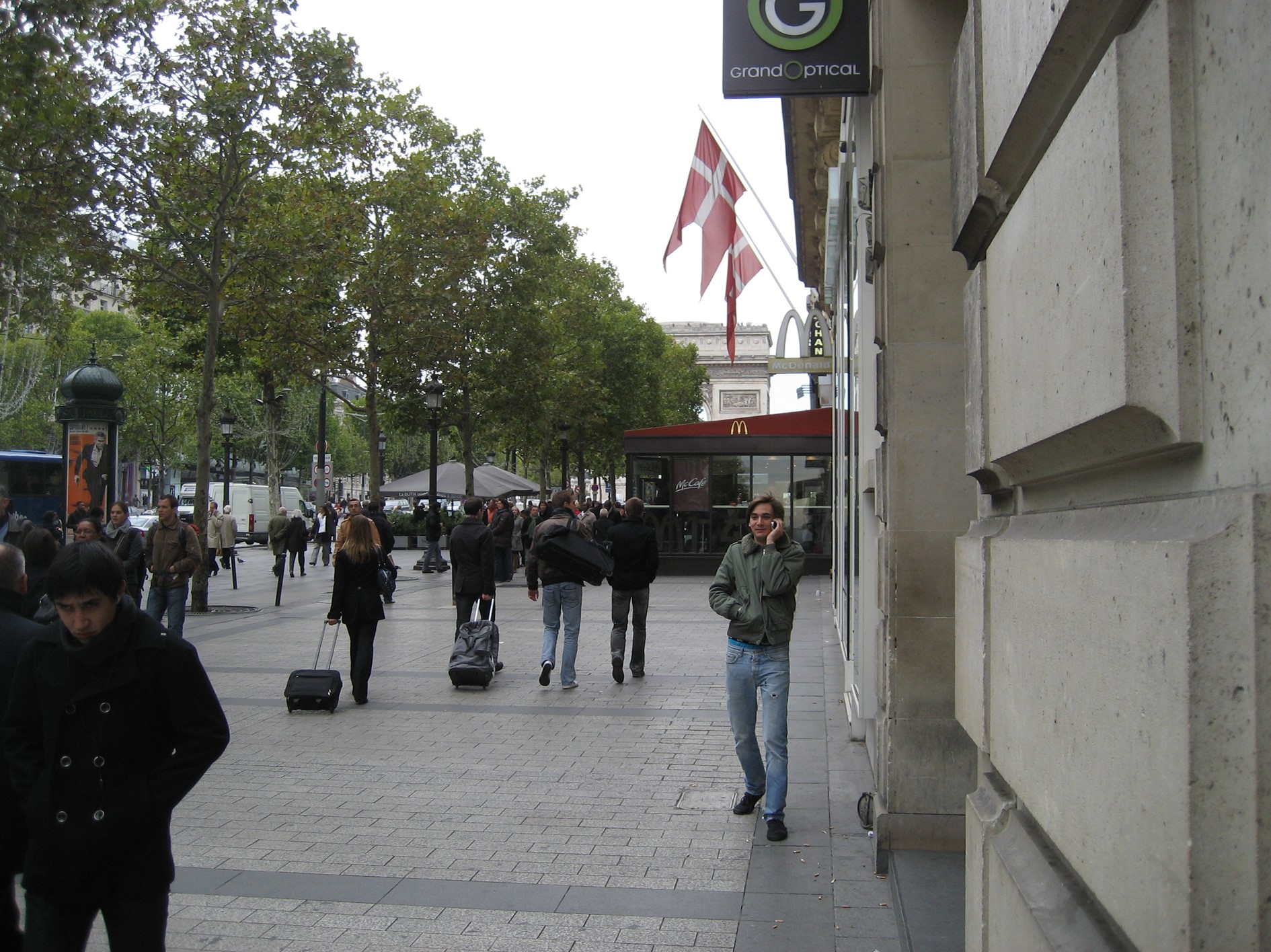
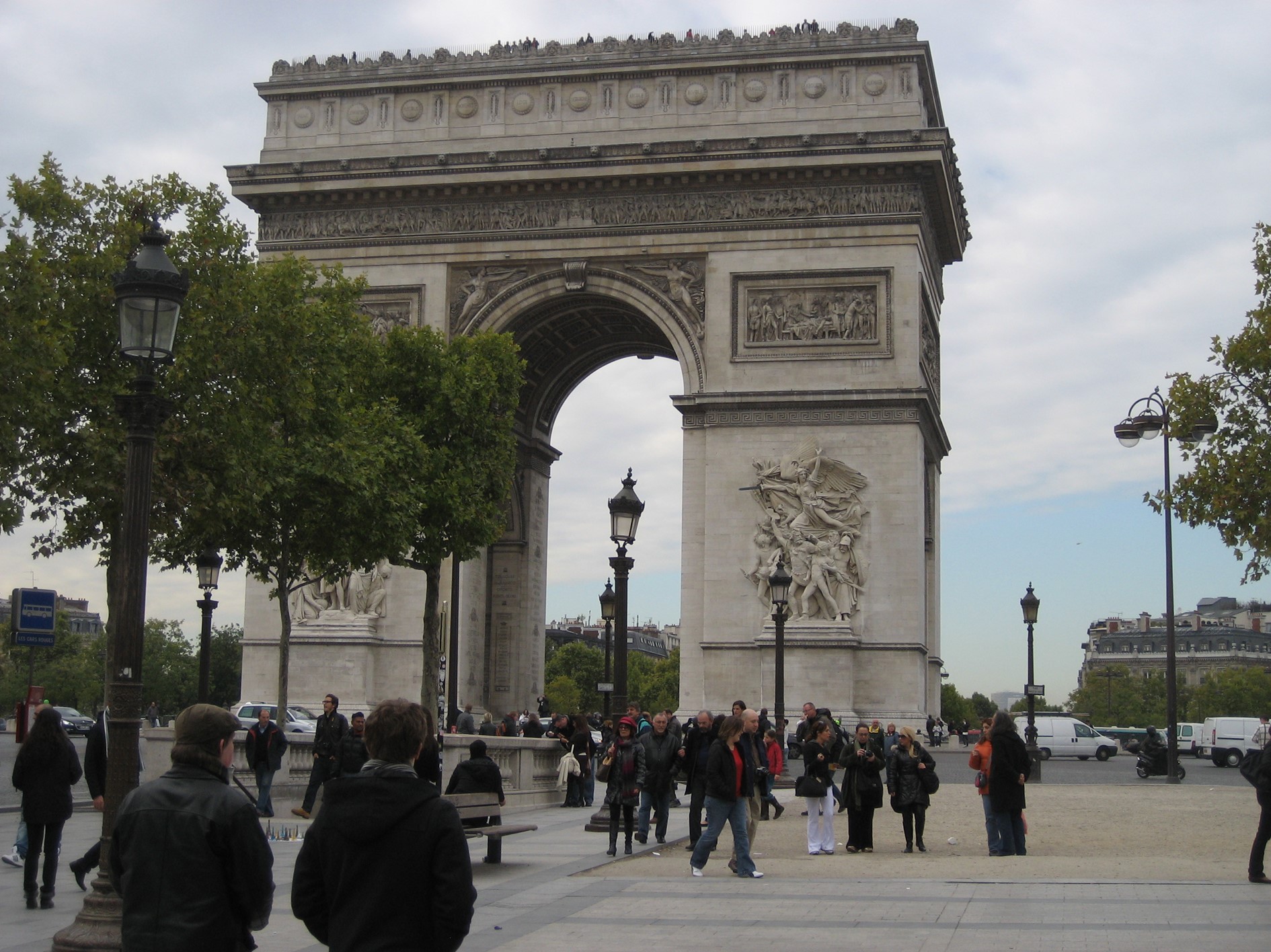
The Arch de Triomphe provides an elevator most of the way up with 3 flights of stairs remaining to the top.
The view from the top is nothing short of spectacular. In the distance, one can see the modern business section of Paris.
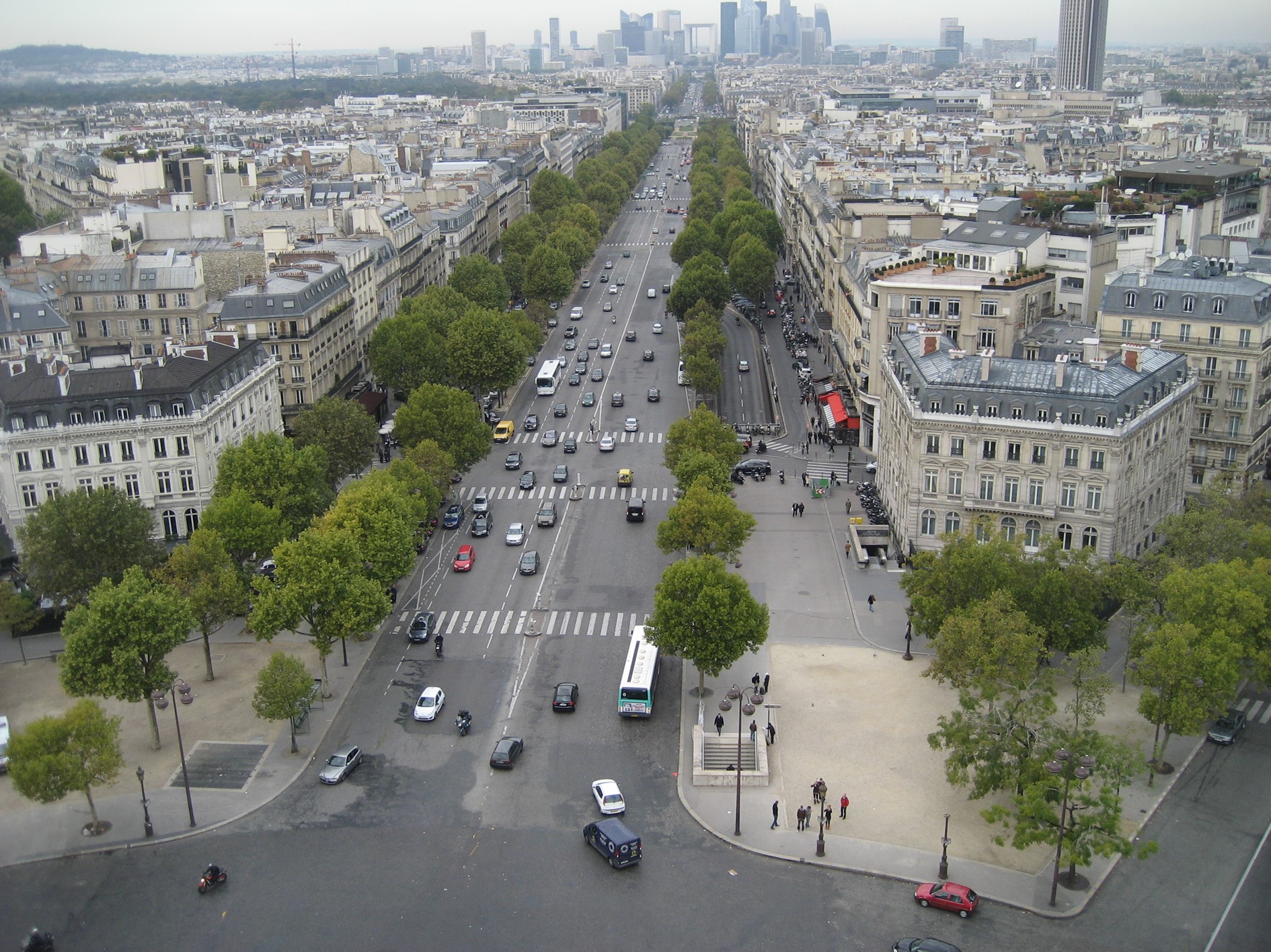
Moving around to a different view (below), the gold dome slightly left of center is Napolian’s Tomb which is close to the apartment in which we are staying.
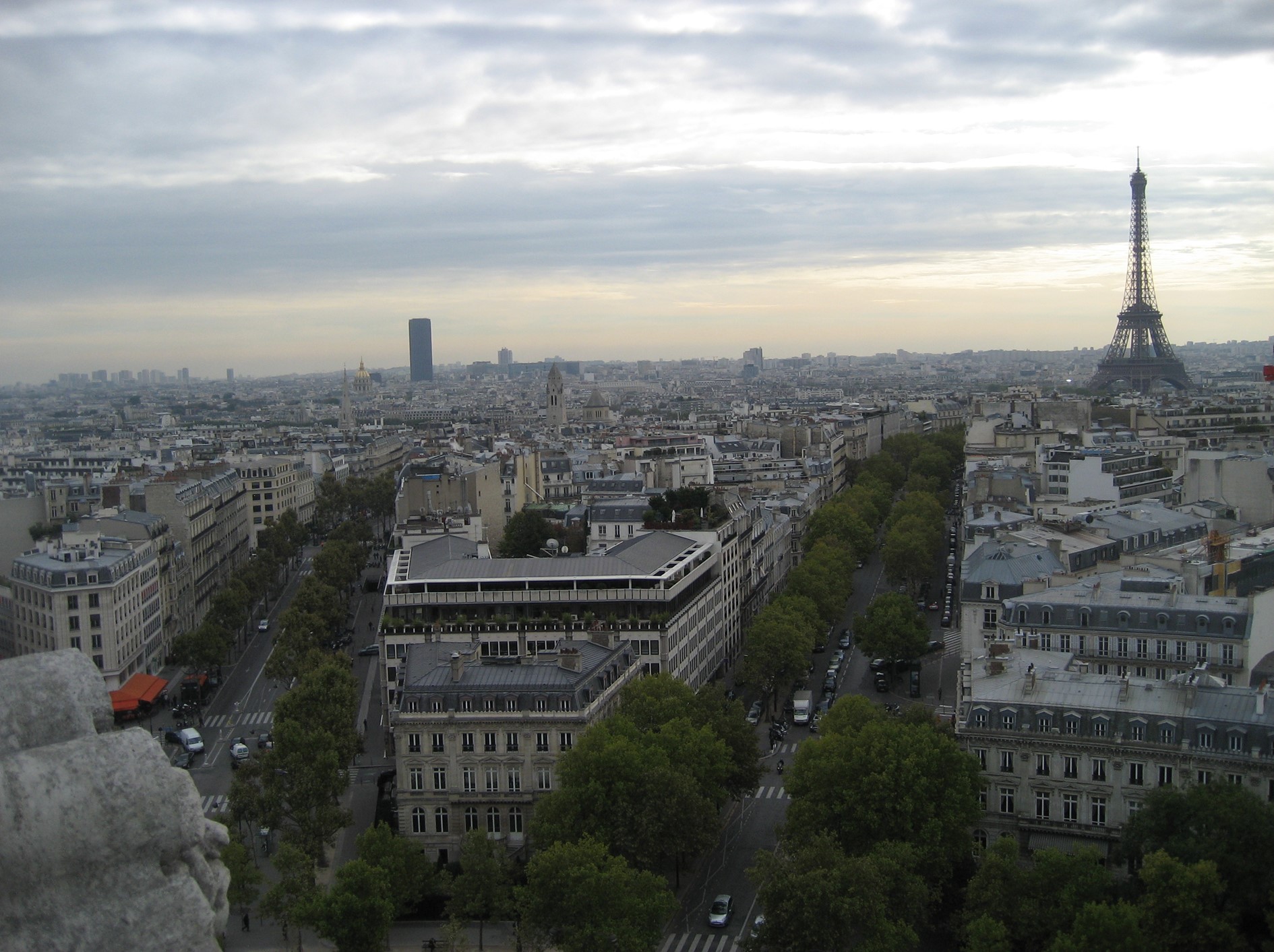
Below is the traveling couple with the Eiffel Tower in the background.
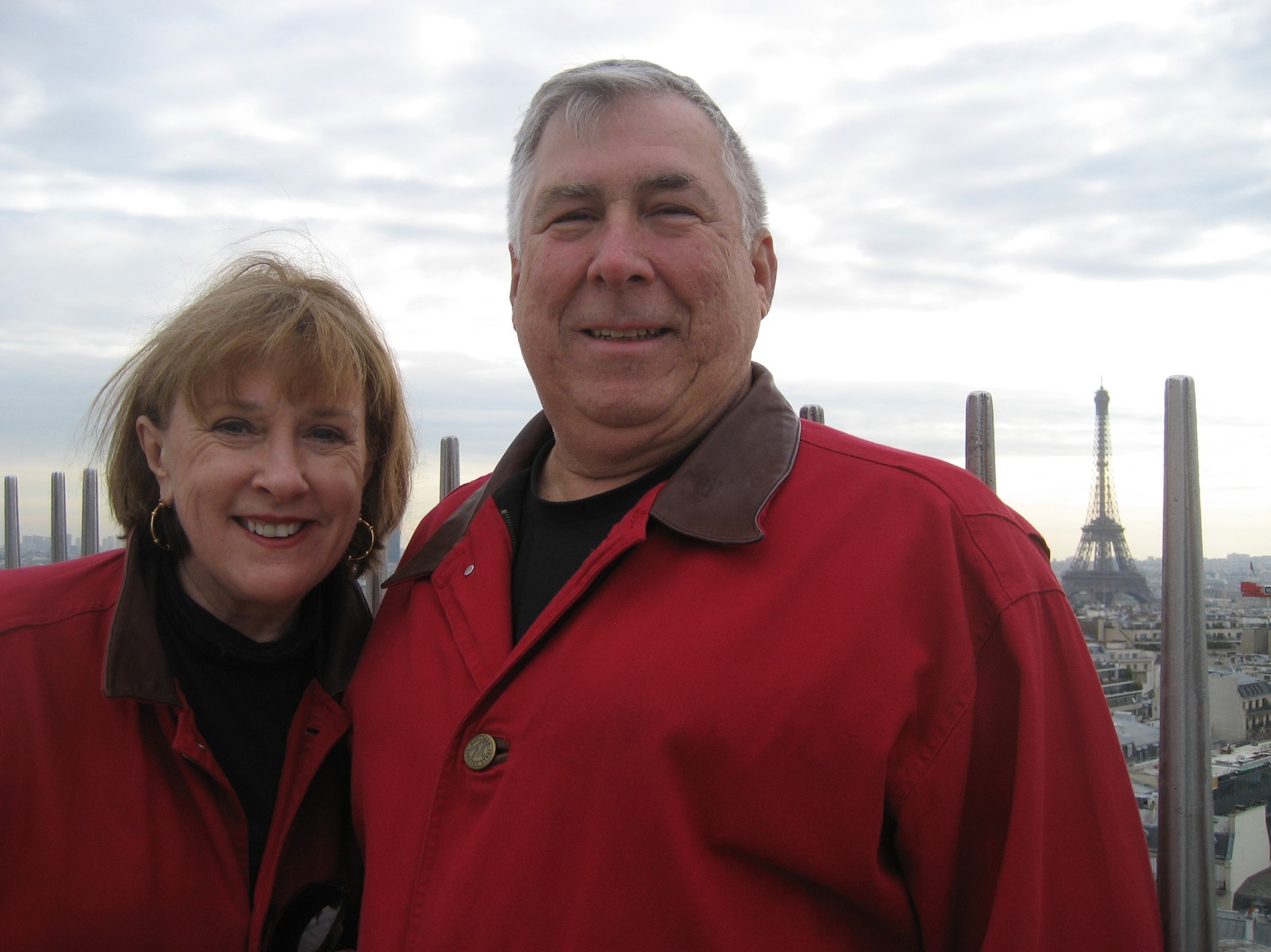
Pat did pause to do a little shopping on the Champs-Élysées.
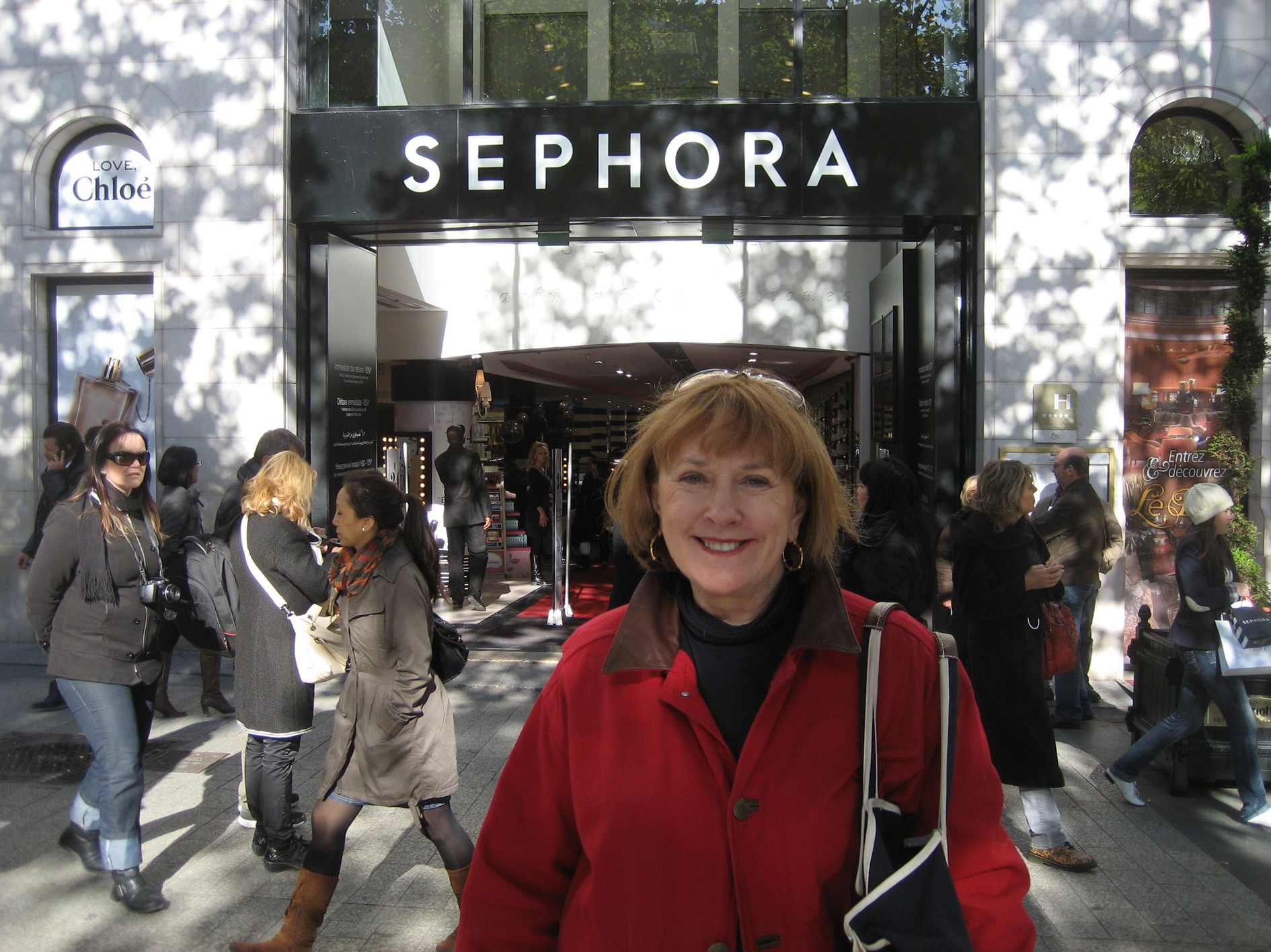
Smart cars were very popular in Paris.
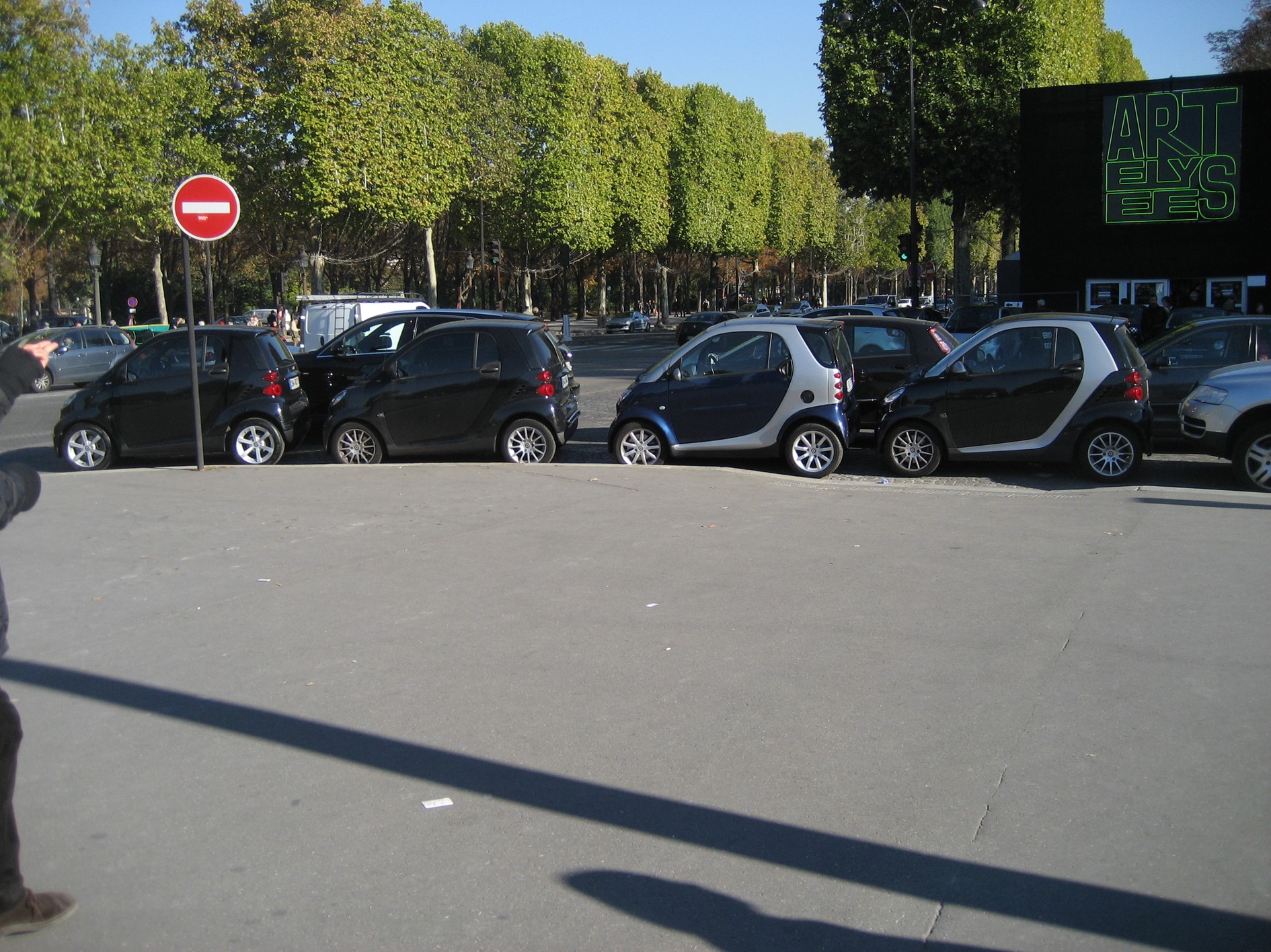
We continued walking down the Champs-Élysées to the section of Paris where the United States Embassy is located. This is also a shopping delight.
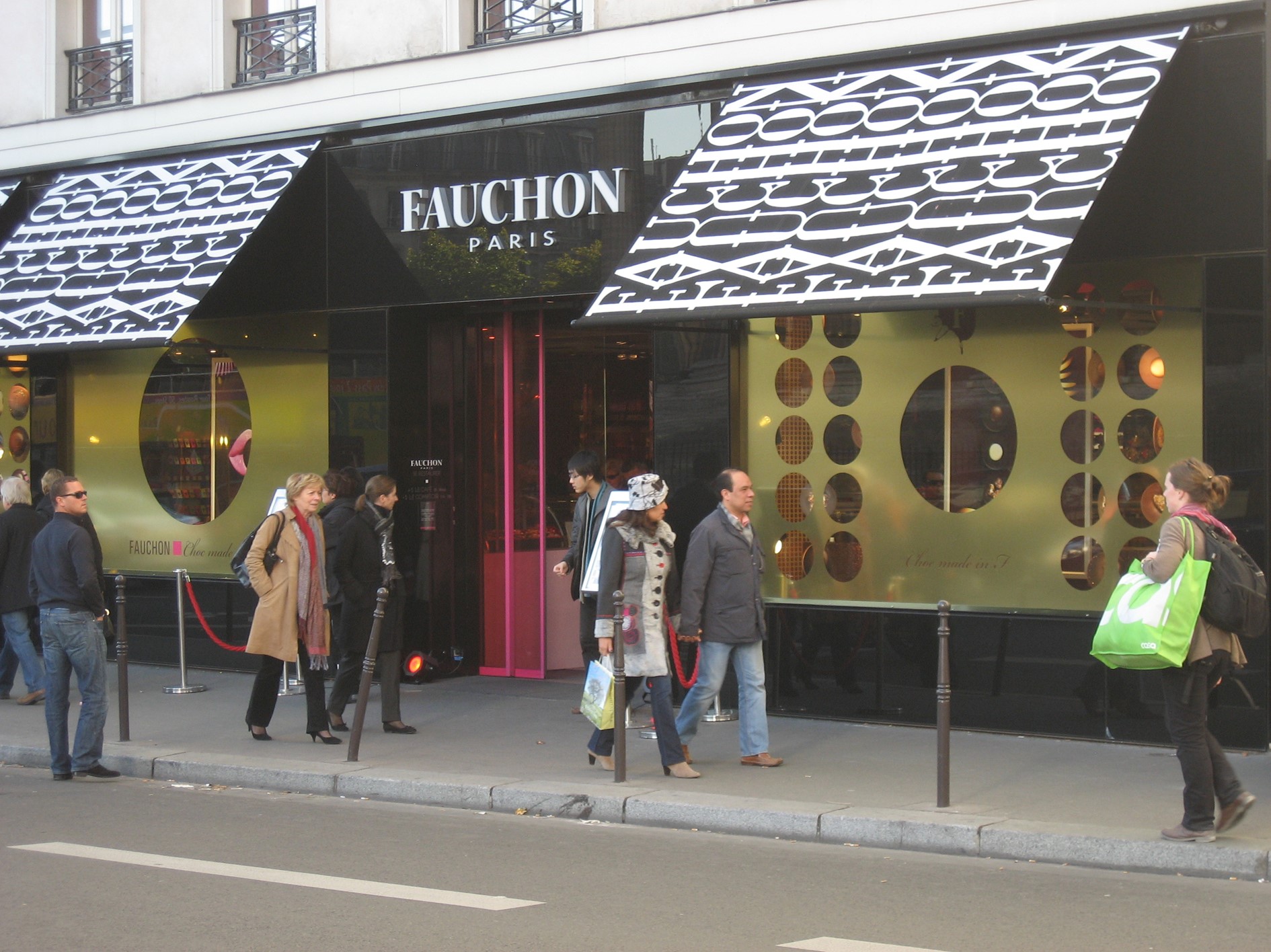
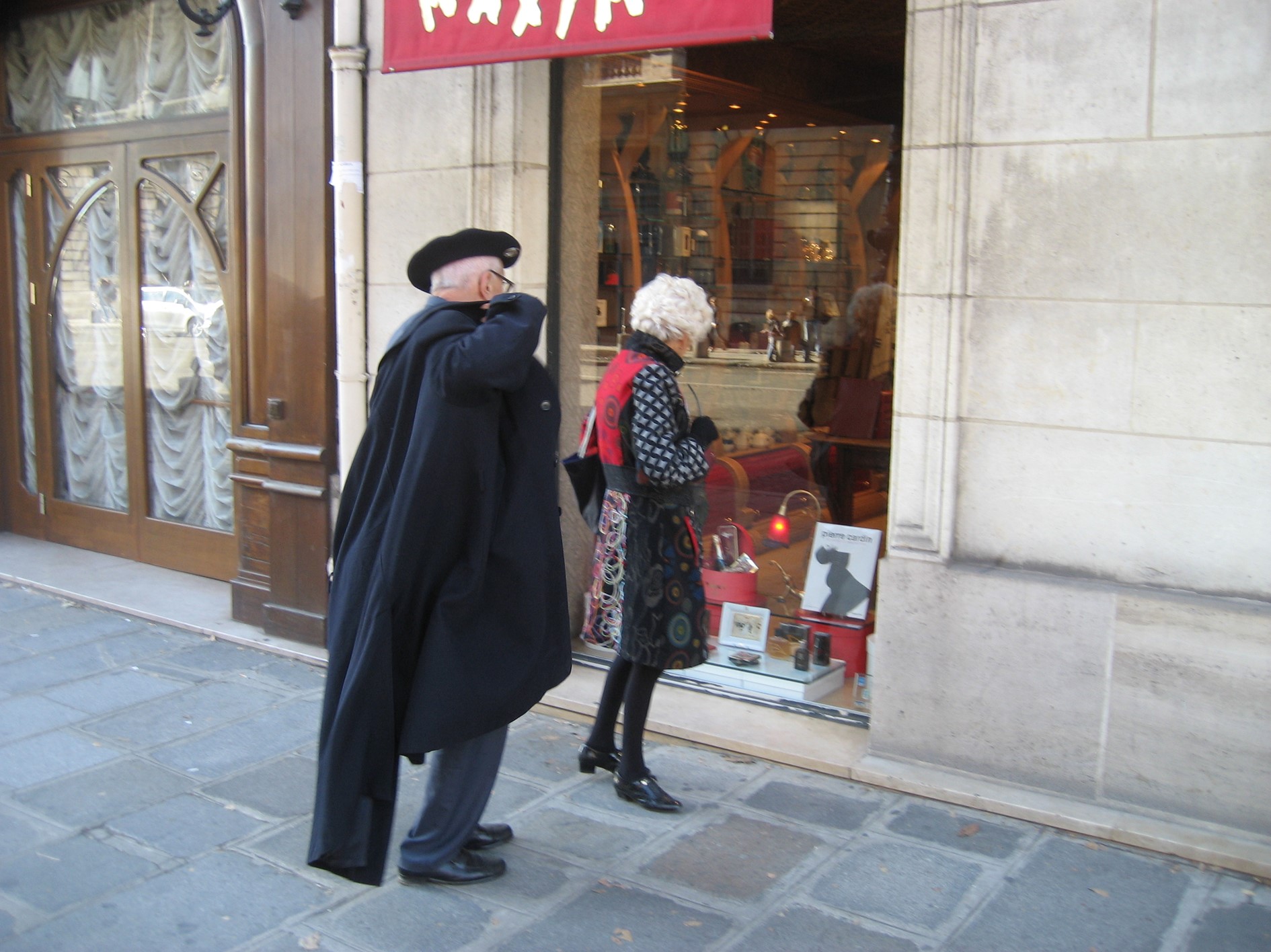
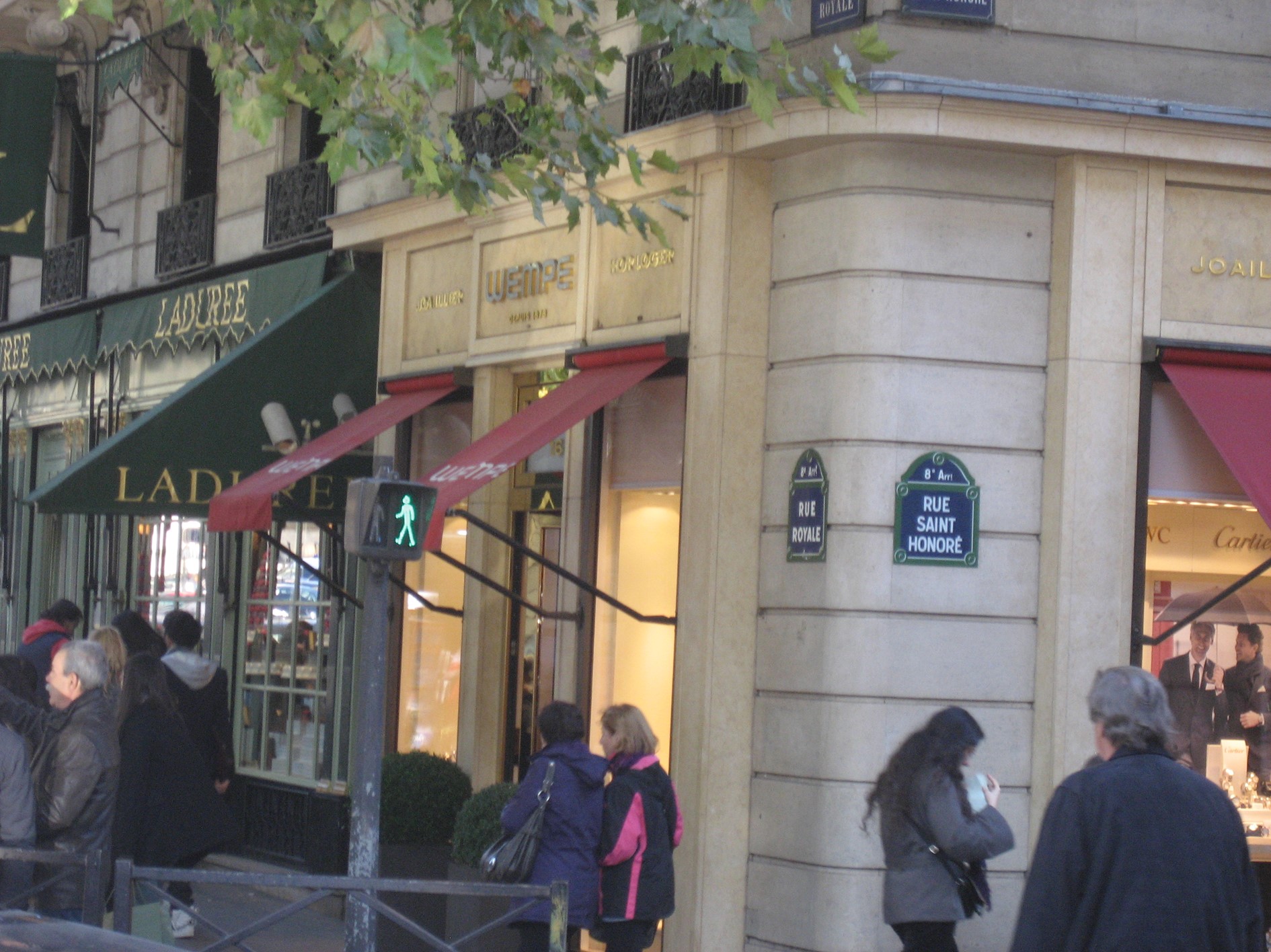
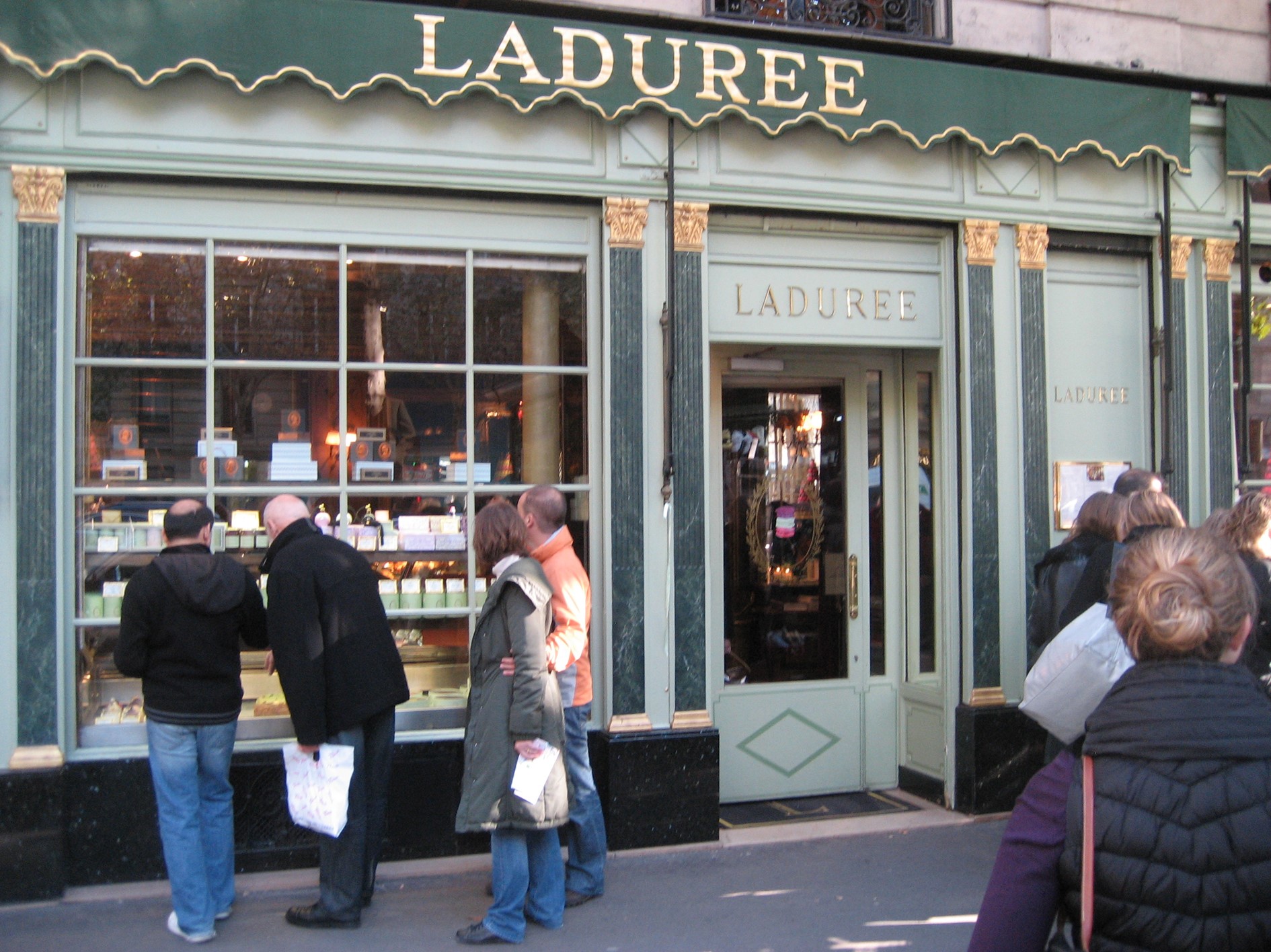
This was the end of our adventures in France. Our flight left at mid-day the next morning so we returned to our apartment and enjoyed a glass of wine before going to dinner.
This trip was excellent on many levels. We had fun in Paris, we had good food and we got the sense of history that comes with visiting the Normandy beaches. What our soldiers overcame and accomplished during those days back in 1944 is awe inspiring.

